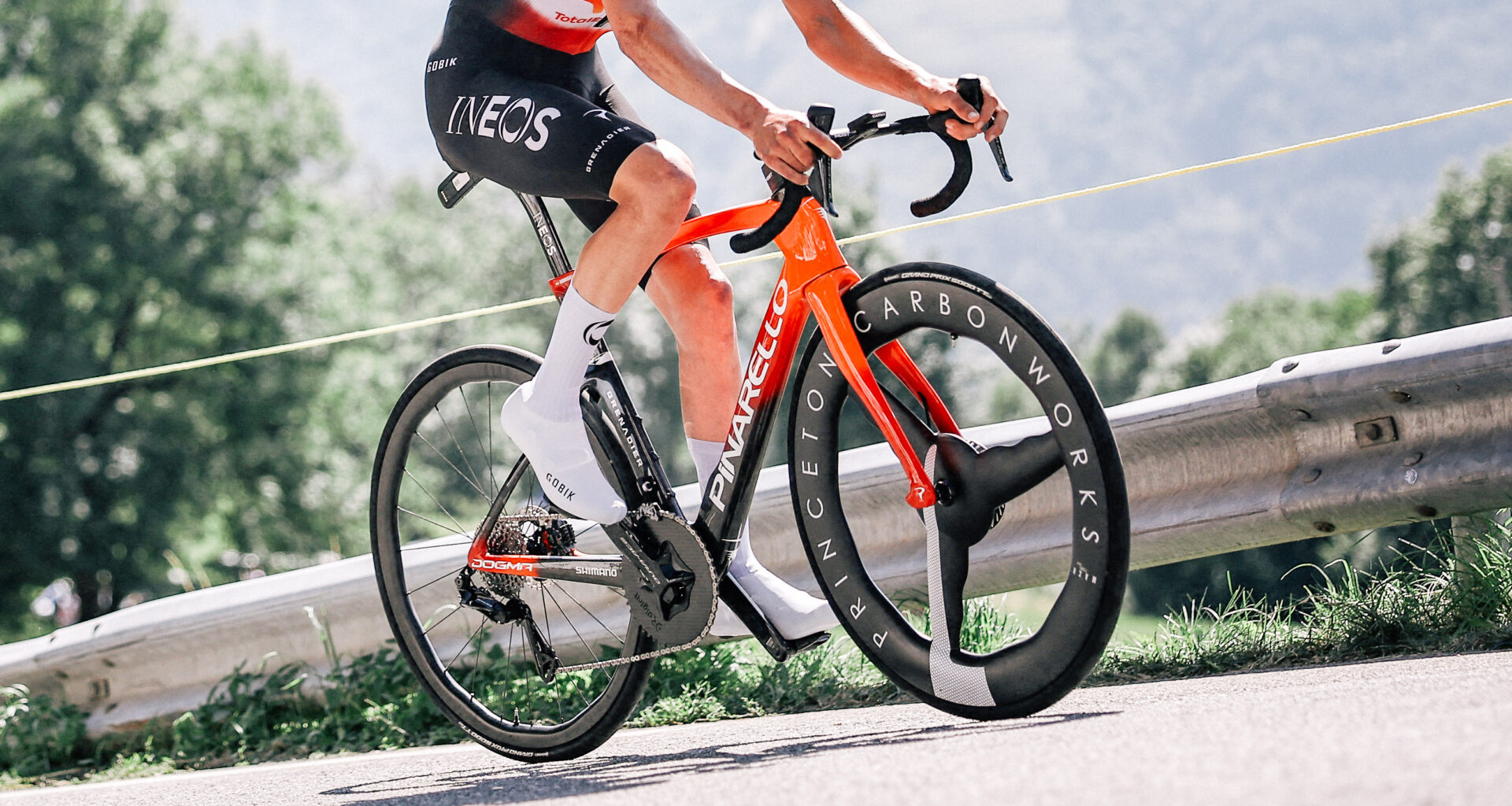While the Tour de France isn’t necessarily the best race on the planet for spotting new road tech – for that you want the Critérium du Dauphiné – it is still the biggest bike race on the planet by a considerable margin, and teams always use the best gear they can lay their hands on to try and eke out a tiny advantage over the competition.
This year the race had an ace up its sleeve for tech nerds, though: An uphill time trial. We haven’t been treated to one in years, and they are always an absolute feast for tech nerds, with a huge variety of setups from pure lightweight machines to modified TT bikes. For this reason, we’ve held back our usual tech gallery for an extra week to pack it with even more tech, including four new bikes that are yet to hit the market.
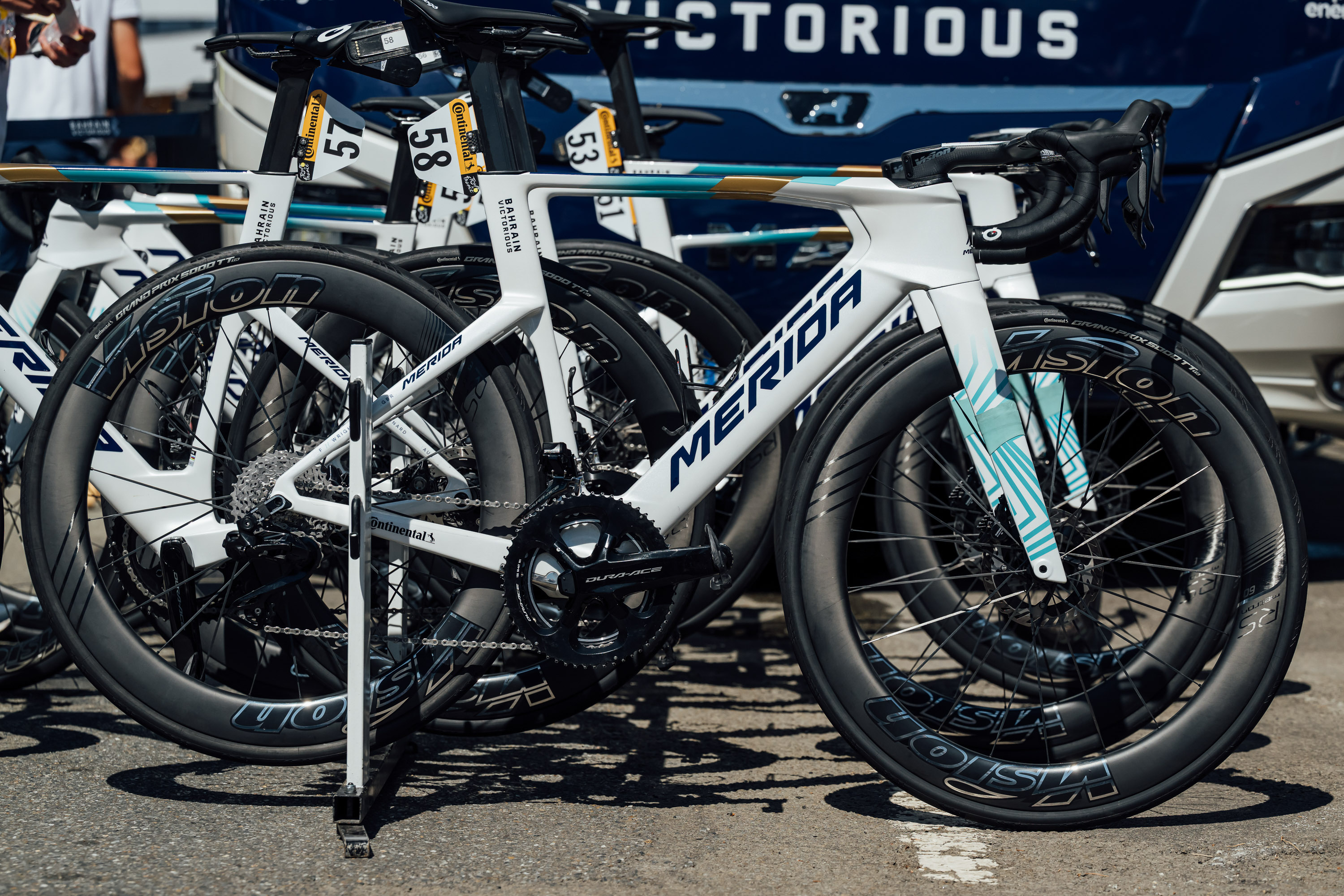
(Image credit: Chris Auld)
First up, the brand new Merida Reacto, which sort of slipped through the net of most media outlets at the start of the race (including this one). It’s a more aero beast than the last model, with a deeper head tube and the now common near-horizontal top tube.
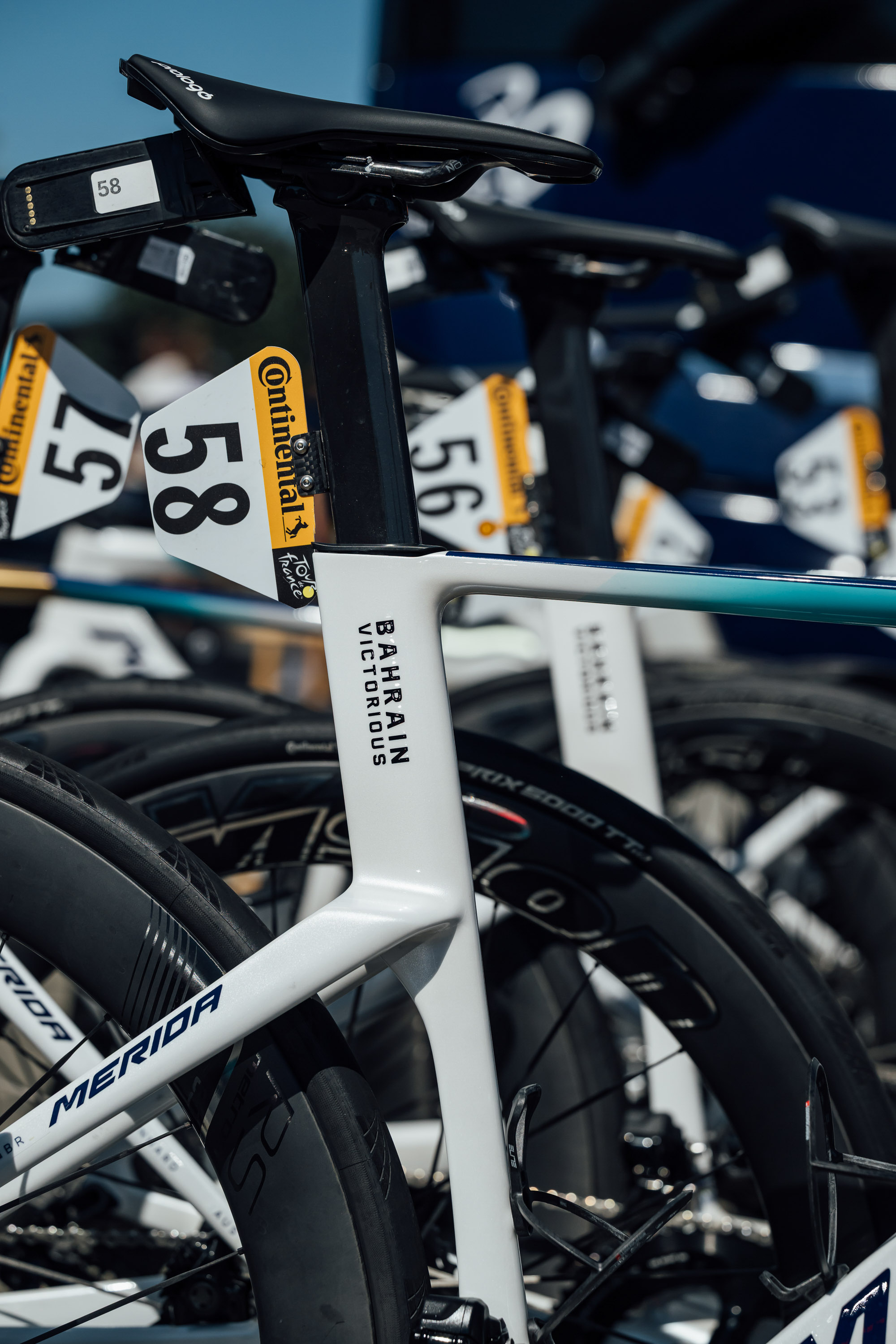
(Image credit: Chris Auld)
The seatstays mount low down on the seat tube, as is par for the course now.
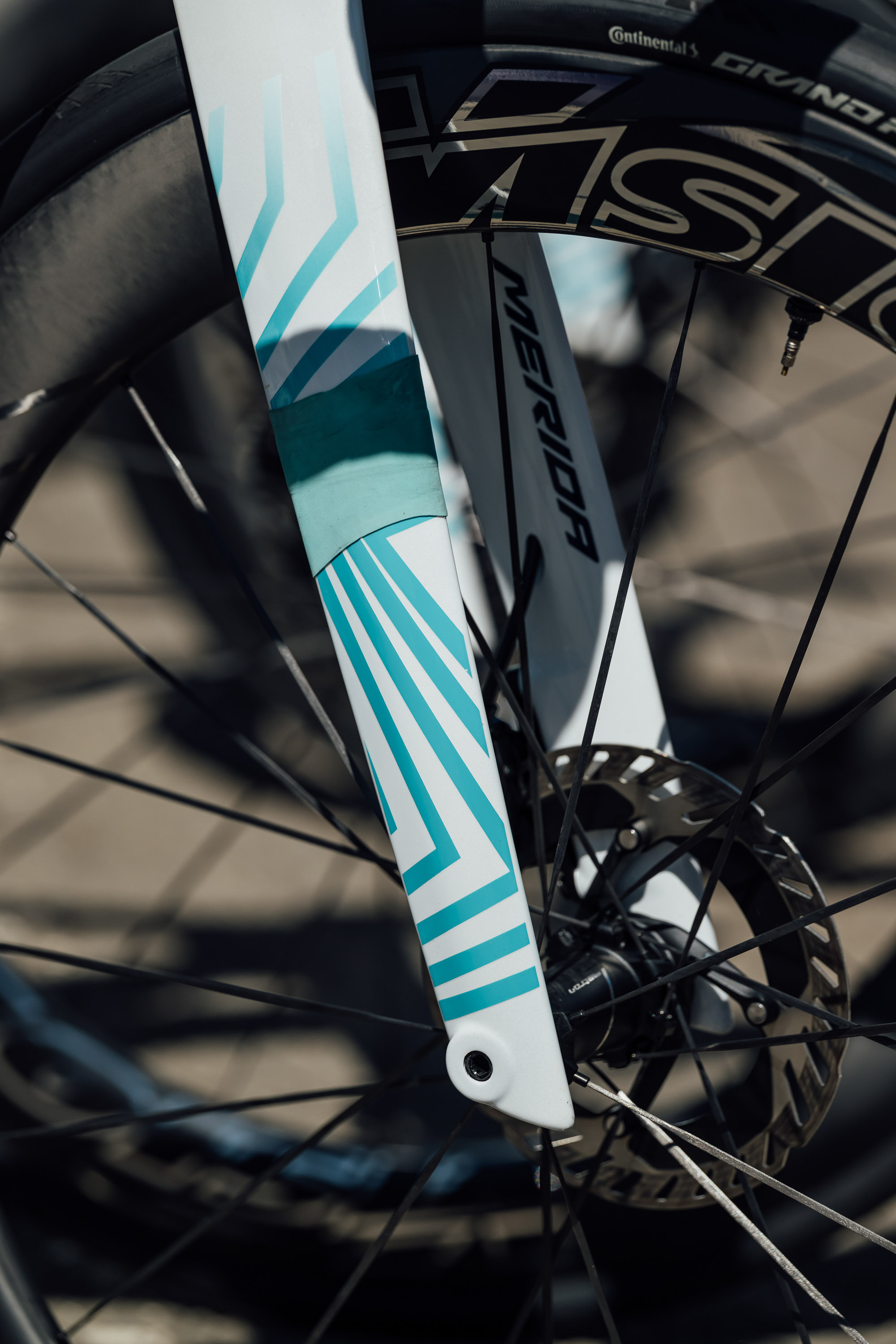
(Image credit: Chris Auld)
The fork legs taper to a somewhat elegant point, with the additional material forwards of the axle rather than behind.
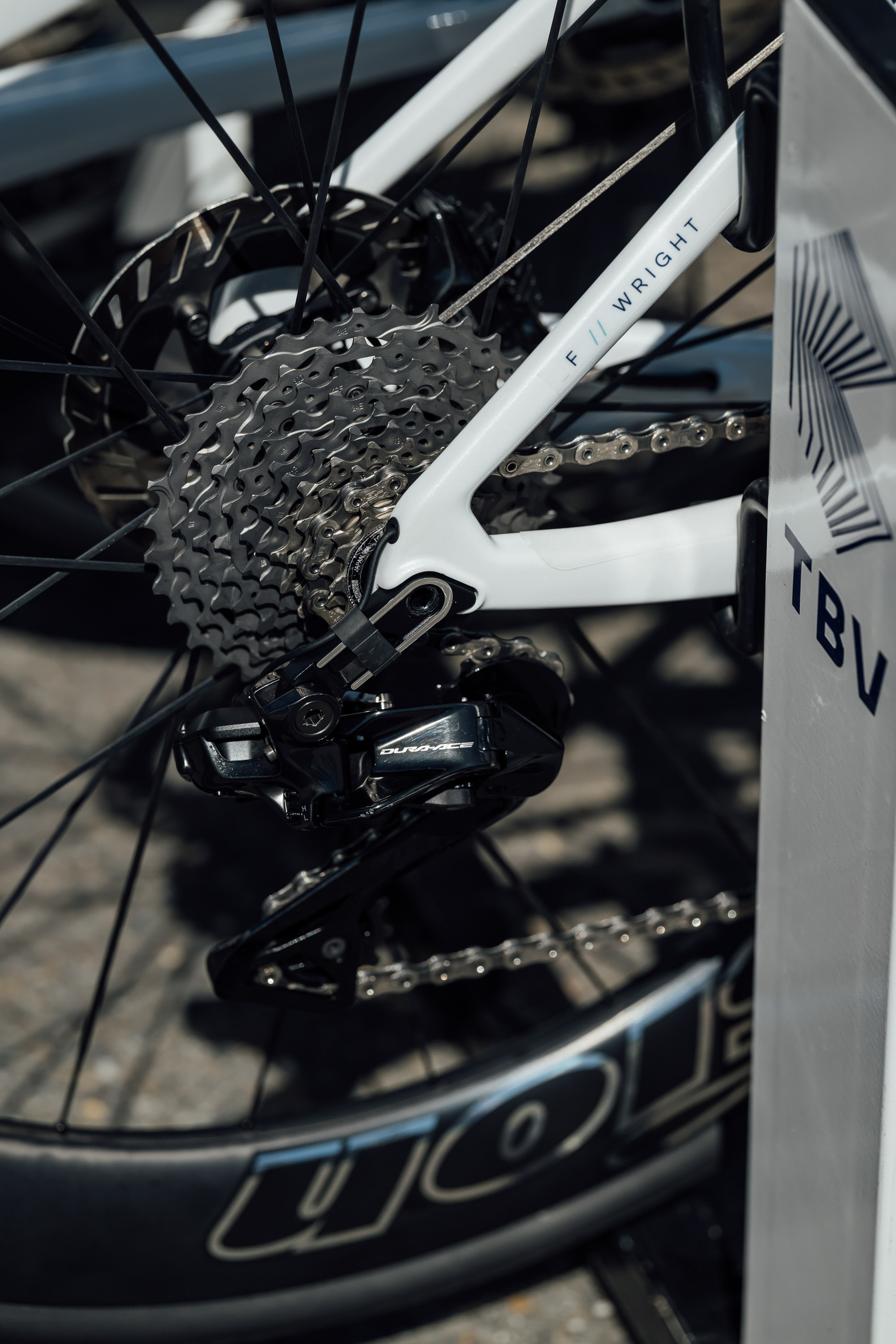
(Image credit: Chris Auld)
Big chainstays play off against more svelte seat stays.
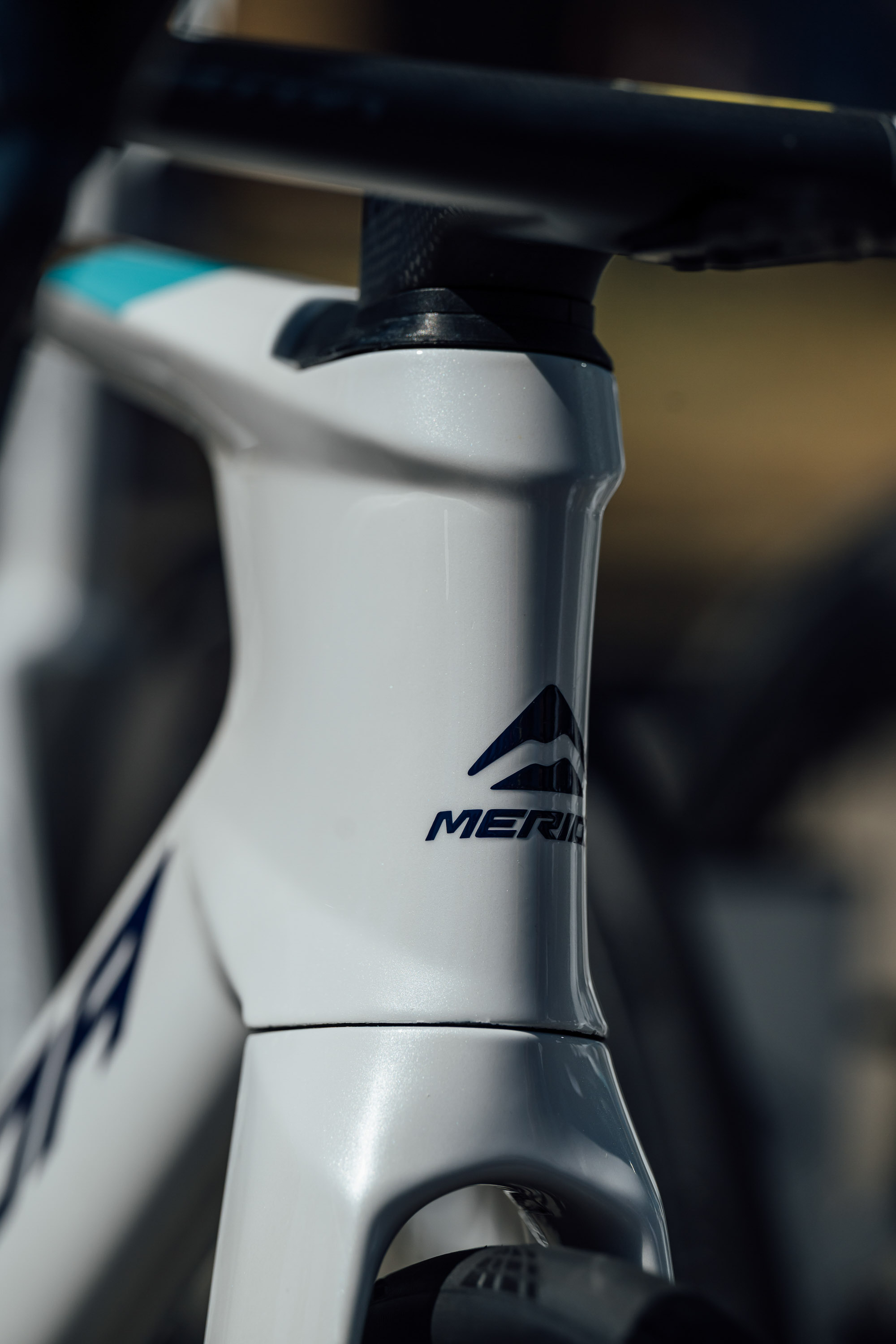
(Image credit: Chris Auld)
The head tube is pretty heavily sculpted.
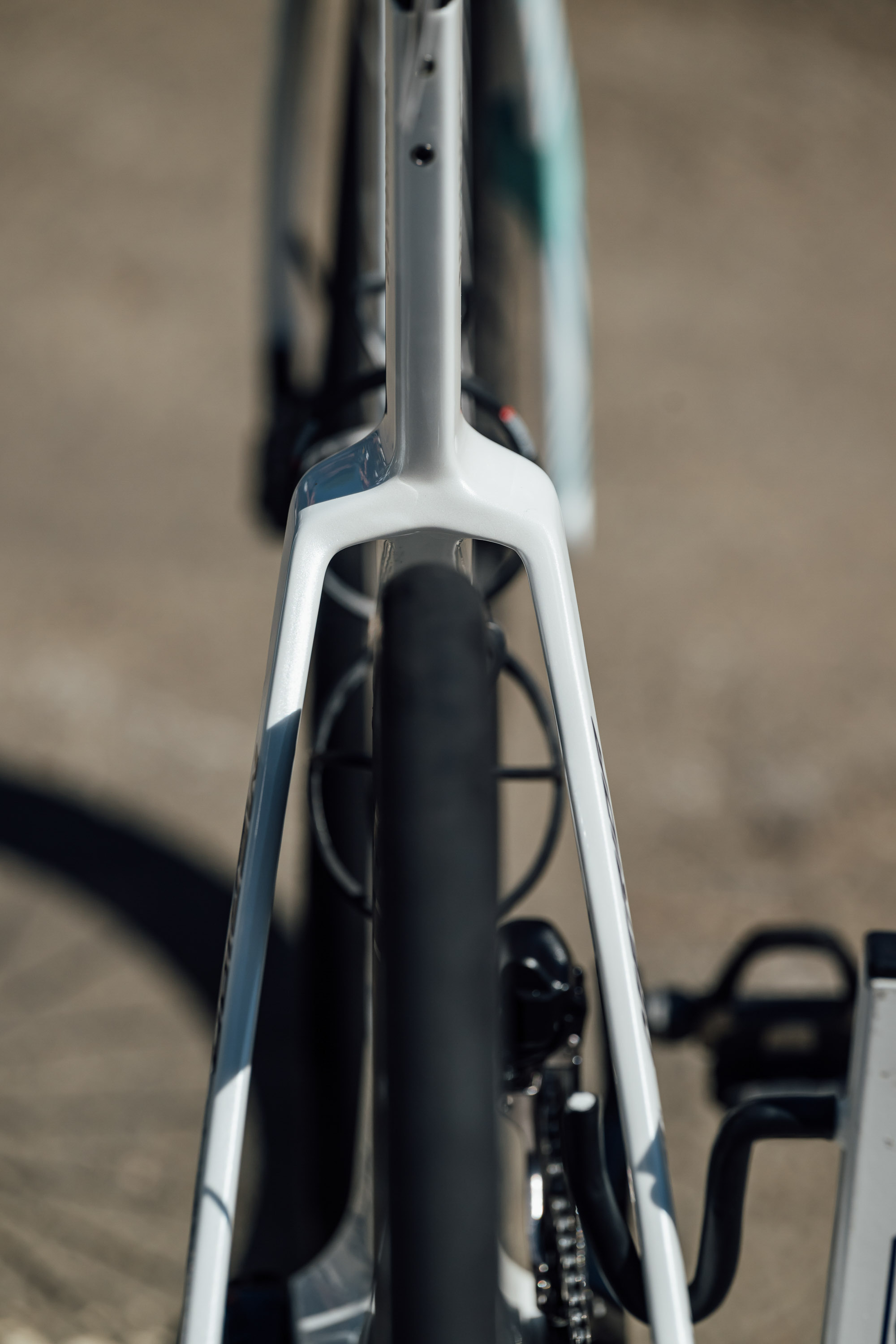
(Image credit: Chris Auld)
And the seat stays are relatively wide-set. Tyre clearance, at least at the seat stays, shouldn’t be a problem.
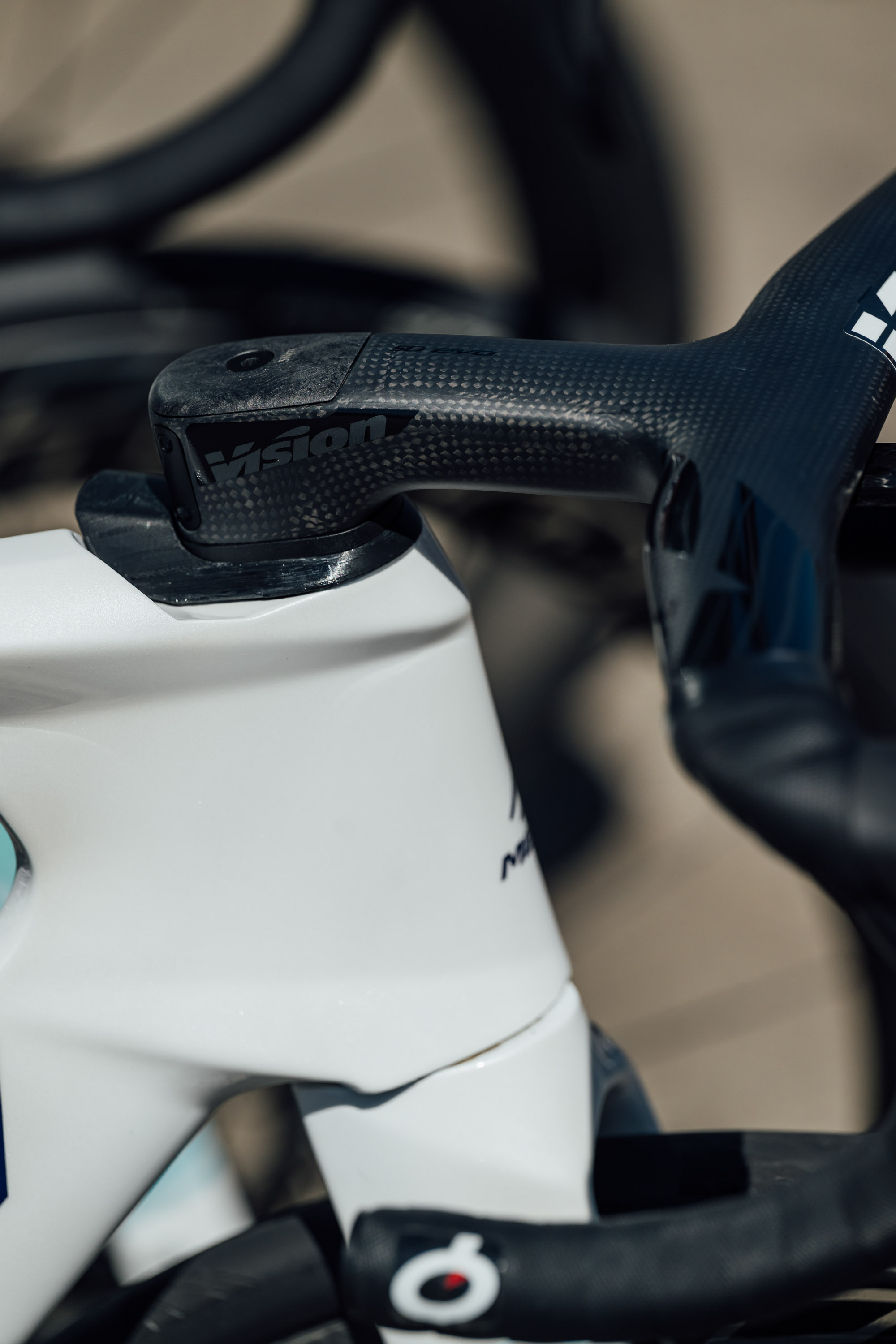
(Image credit: Chris Auld)
The rear of the fork crown integrates into a channel behind the head tube.
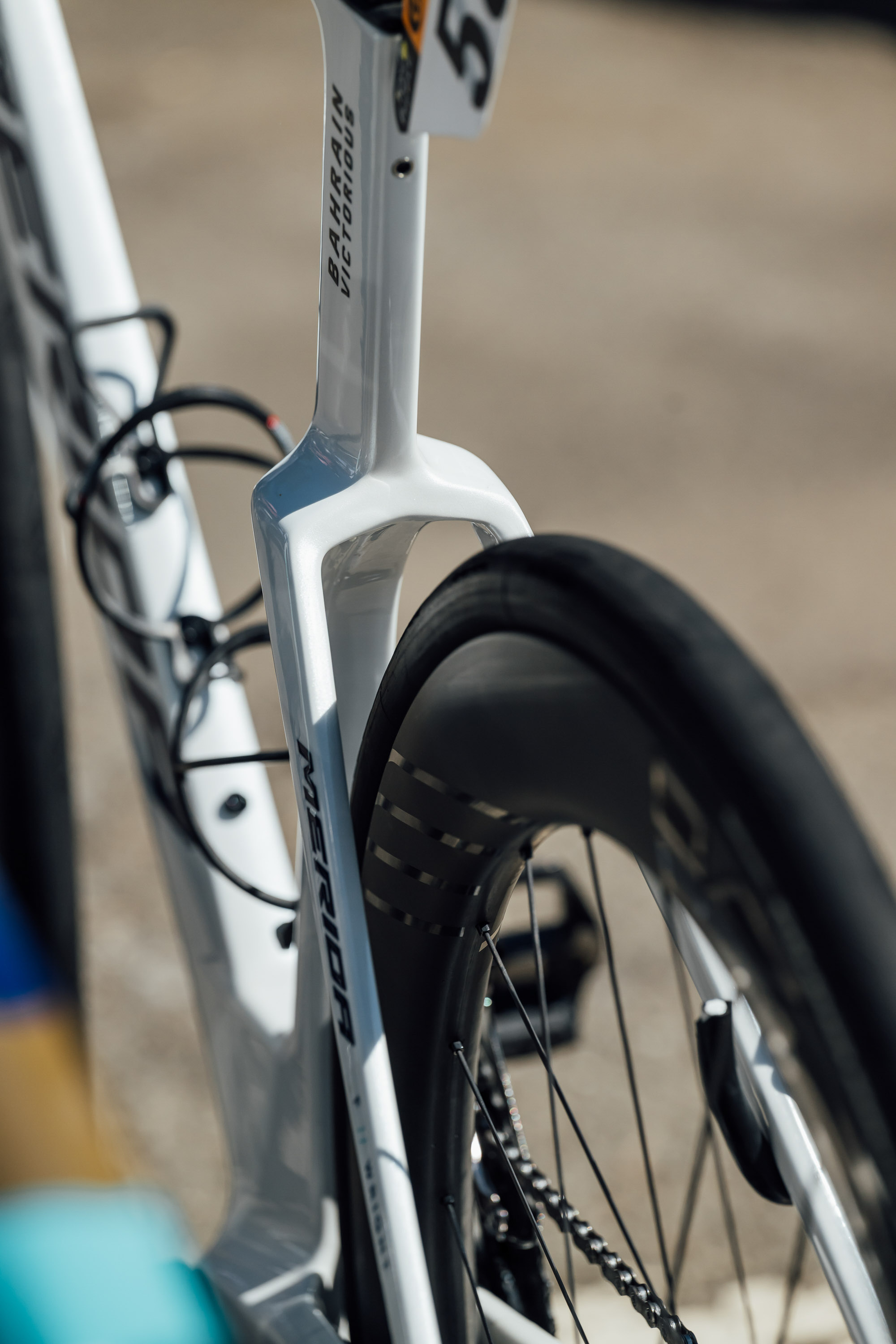
(Image credit: Chris Auld)
The down tube has a very narrow profile to it, likely thanks to a relaxation of the UCI rules on frame shapes.
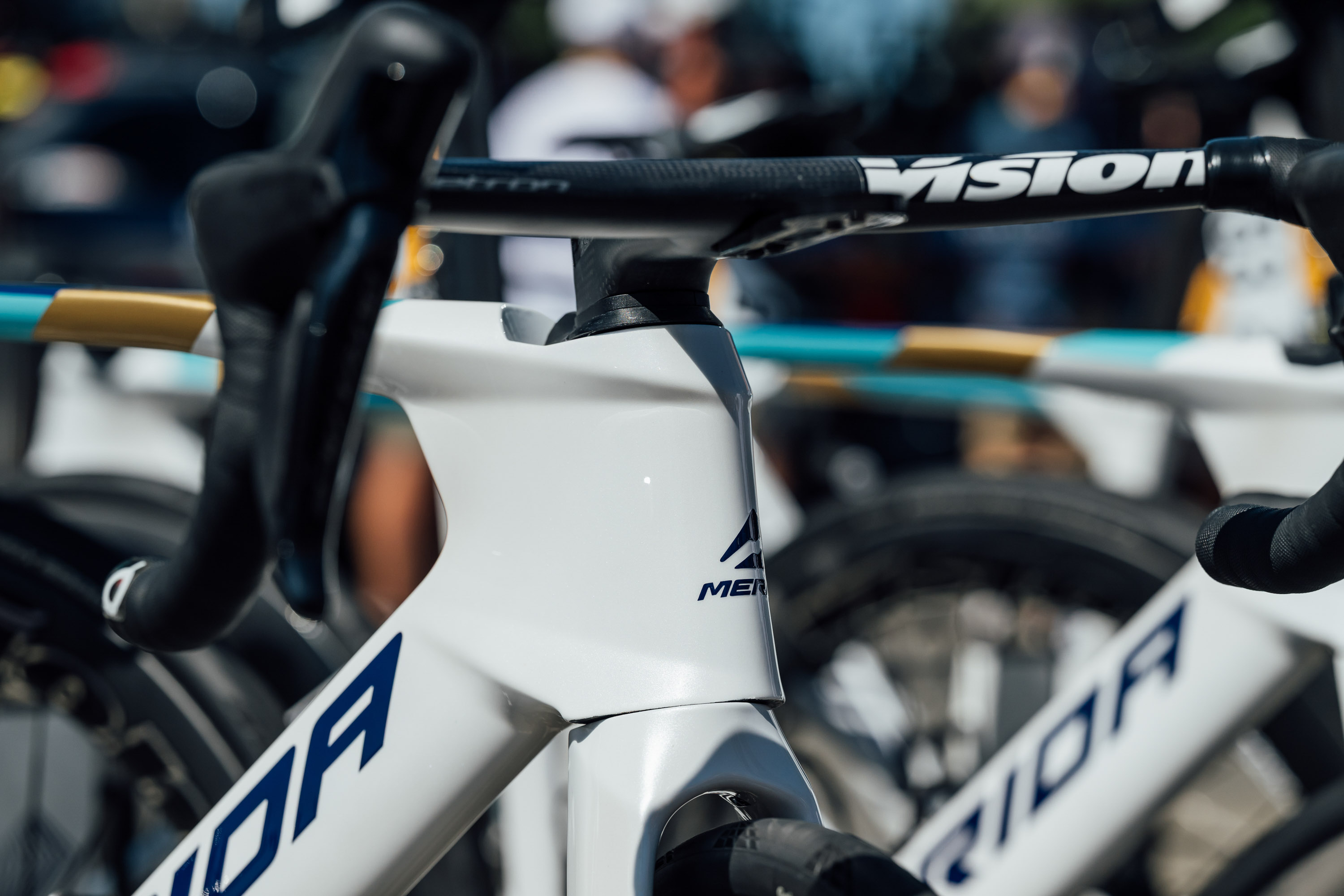
(Image credit: Chris Auld)
The bearing top cap is recessed into the head tube.
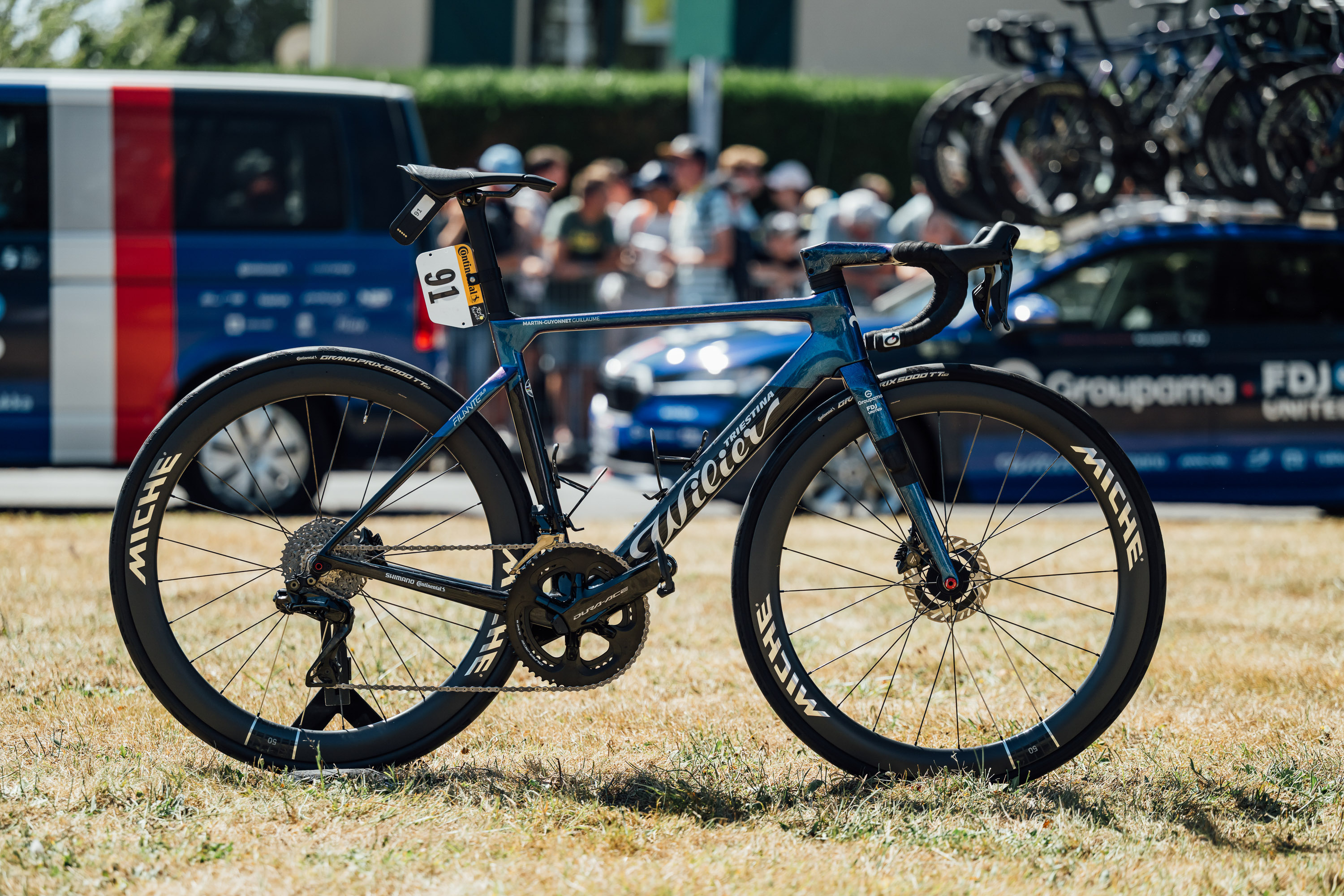
(Image credit: Chris Auld)
Next on the list is this Wilier Filante SLR. It’s not a new bike, but a new paint scheme for Groupama-FDJ.
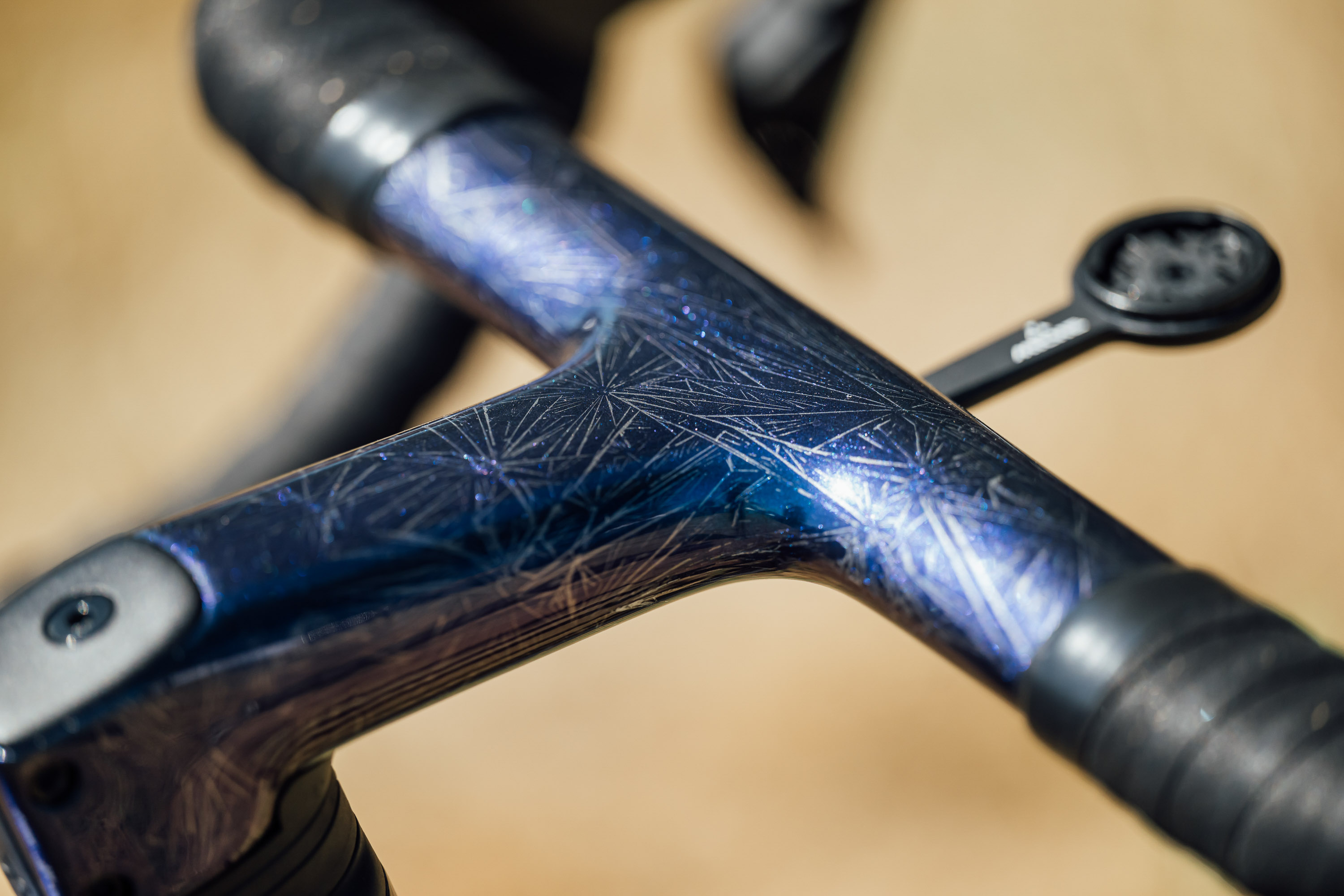
(Image credit: Chris Auld)
Even the cockpits of these aero machines have been painted in this deep blue frost effect.
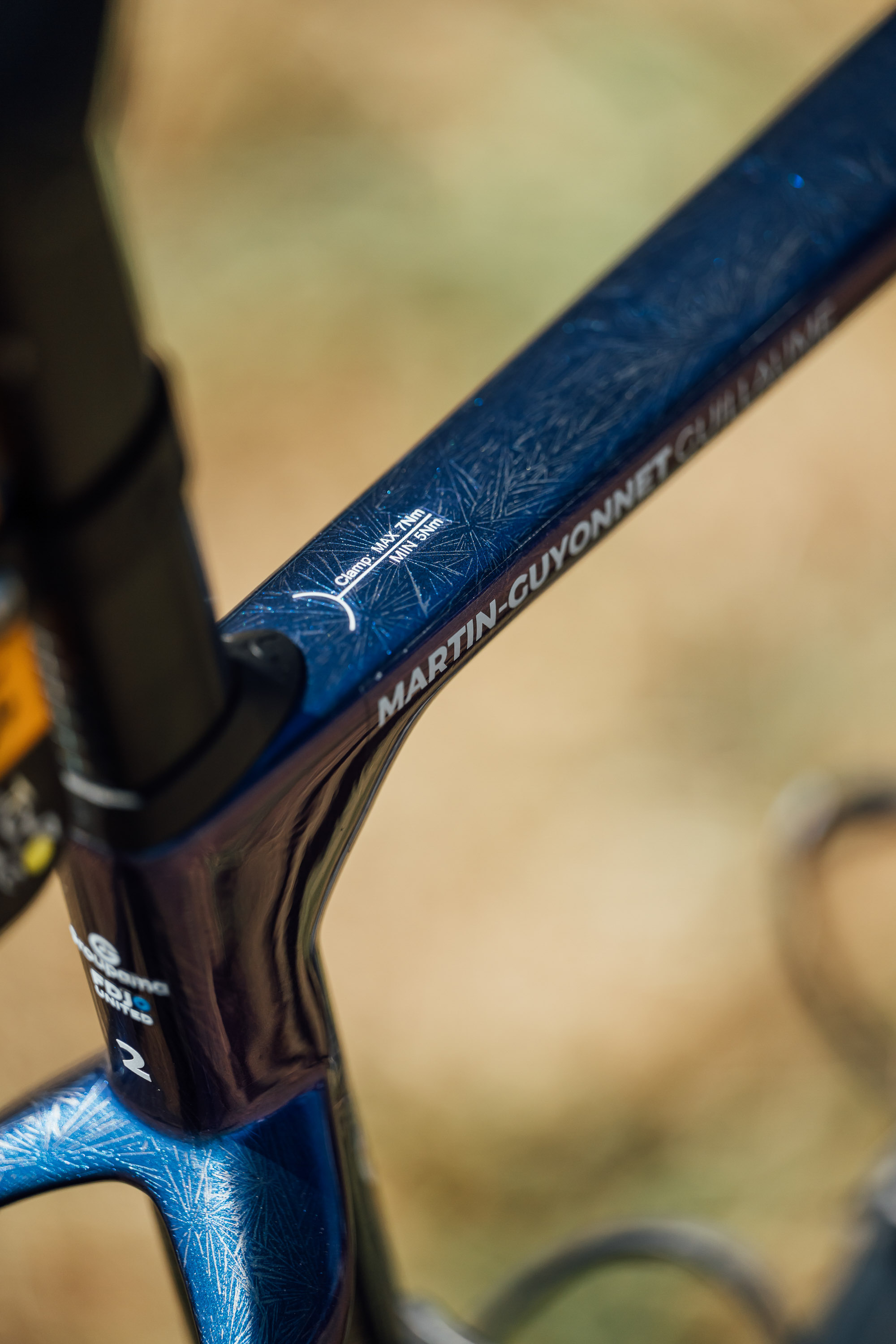
(Image credit: Chris Auld)
The team graphics on the bike are subtle so as not to overpower the paint.

(Image credit: Chris Auld)
The painting process involves more chemistry than standard paint, and needs to be allowed time for the individual crystals to grow across the surface.
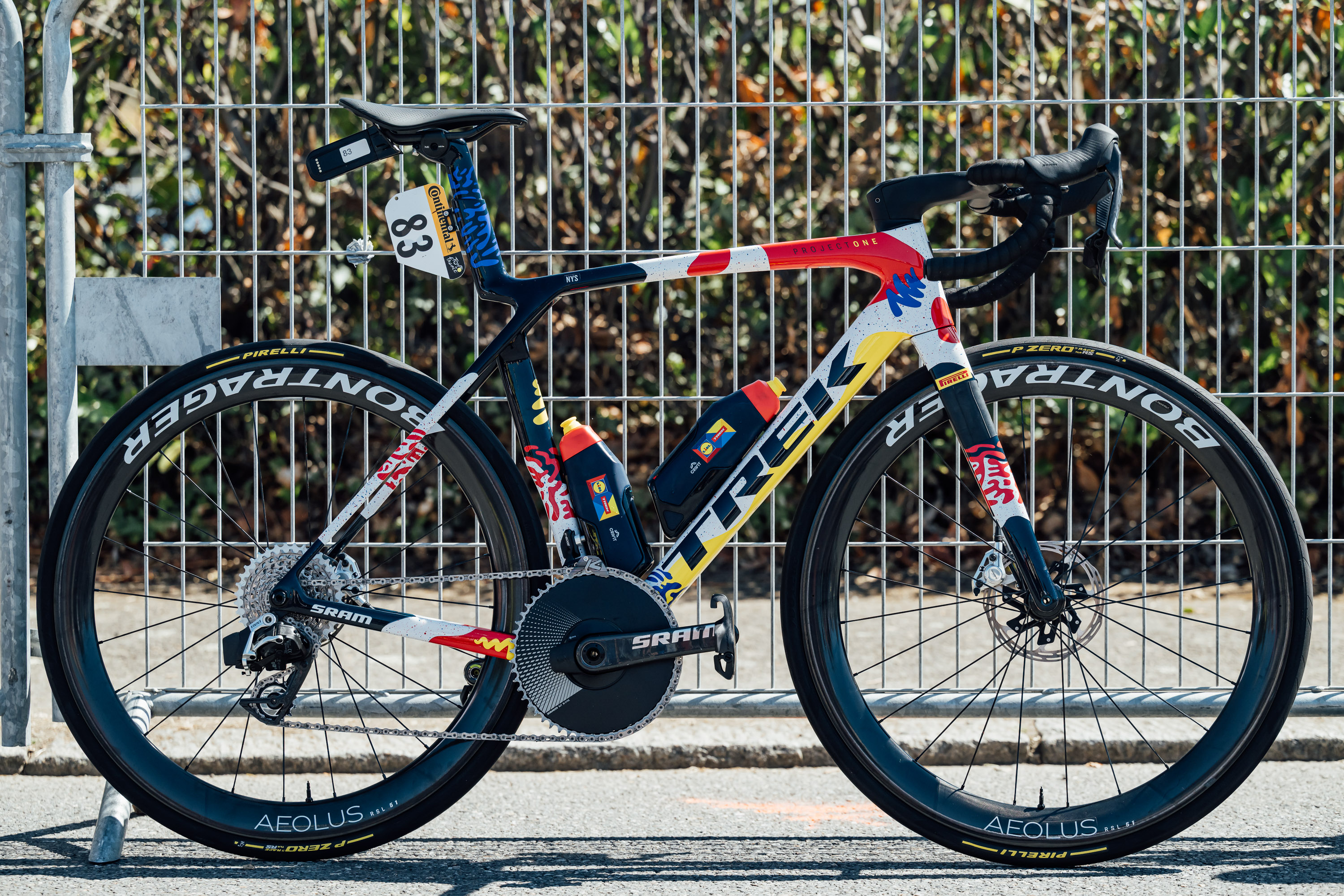
(Image credit: Chris Auld)
Not to be outdone, Lidl-Trek have been rolling around on a new Project One Trek Madone.
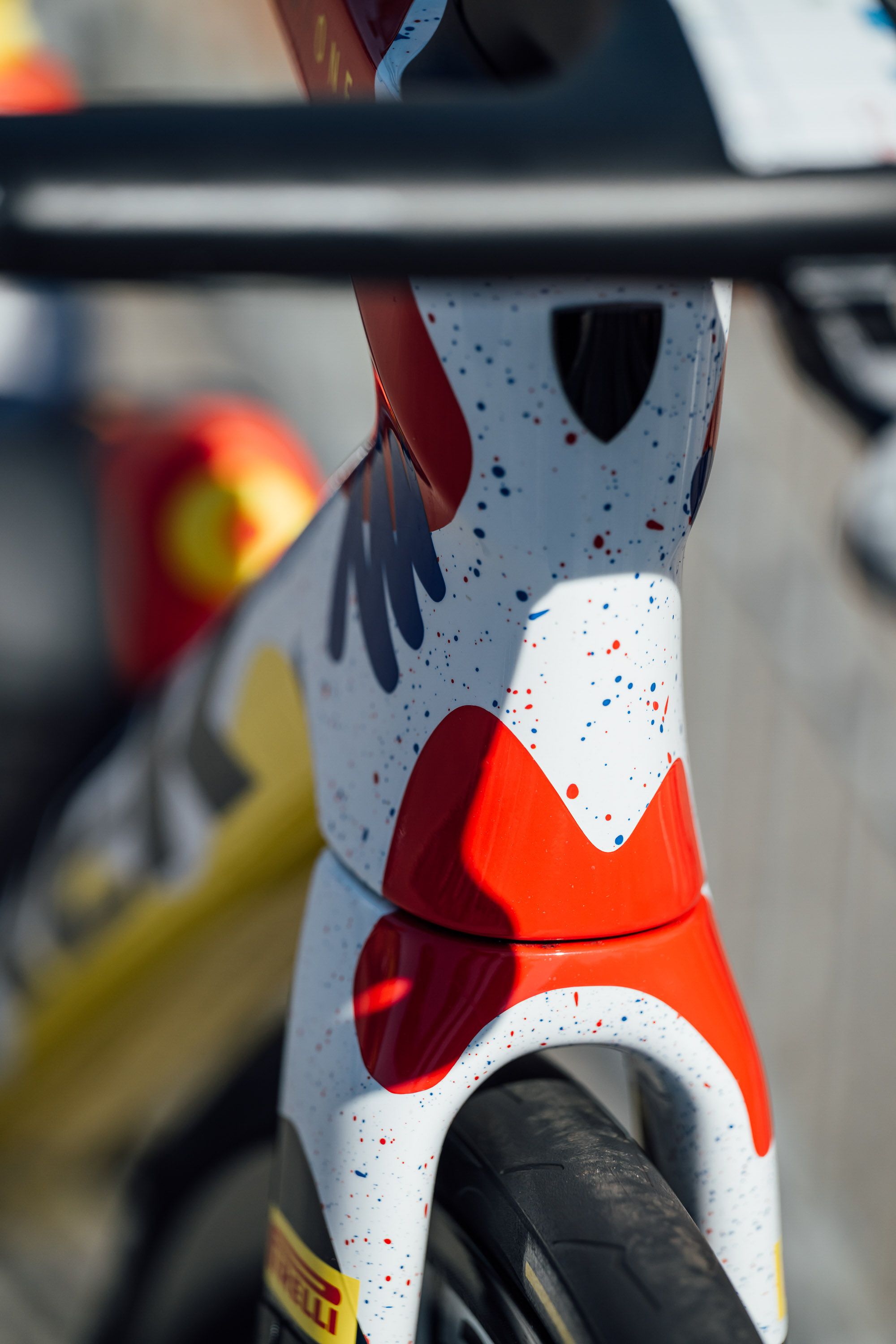
(Image credit: Chris Auld)
There’s nothing new about the setup, but the paint is very jazzy, even compared to the standard team bike.
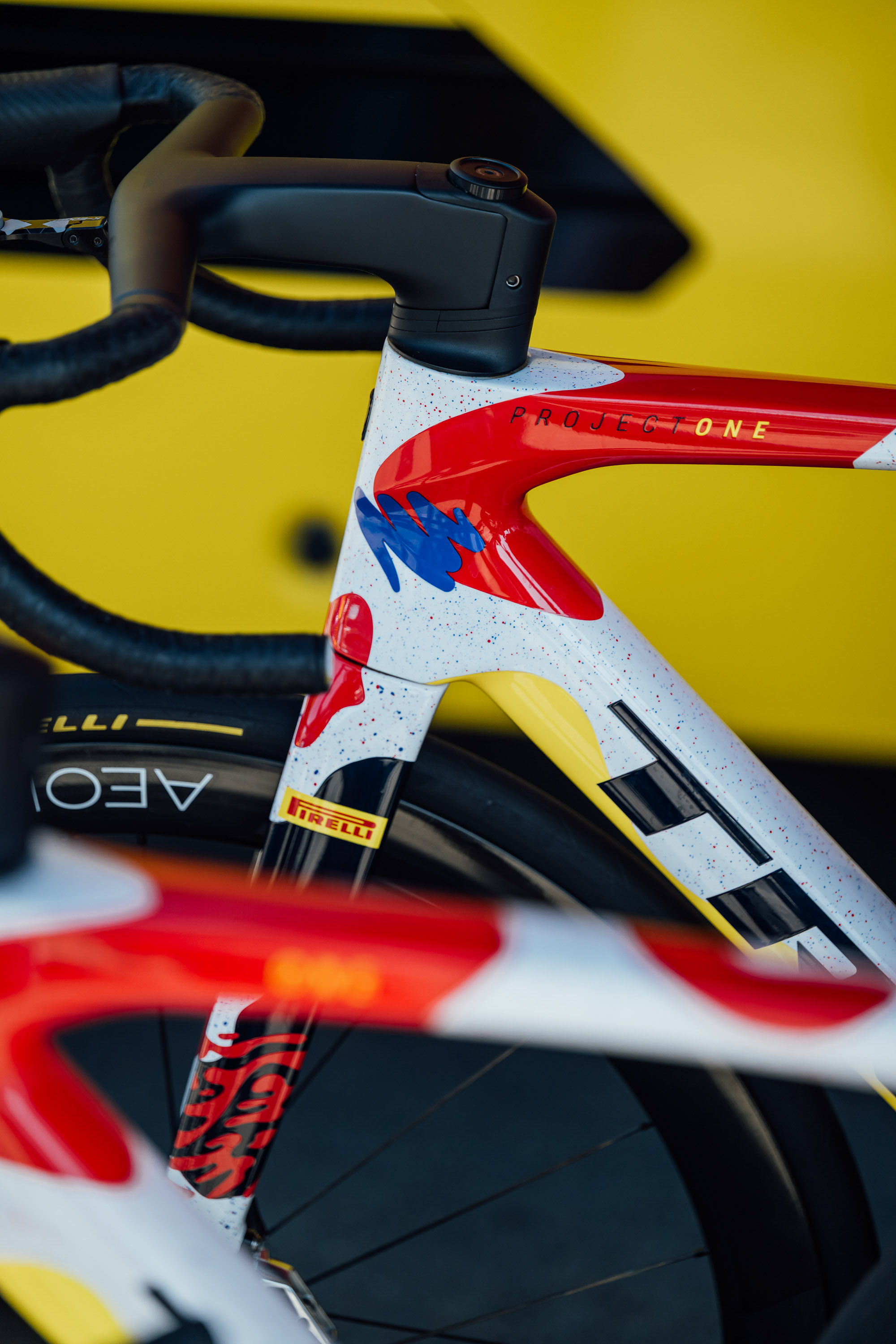
(Image credit: Chris Auld)
Speckles, swiggles, animal print (ish), and block, bright colours. It’s all going on.
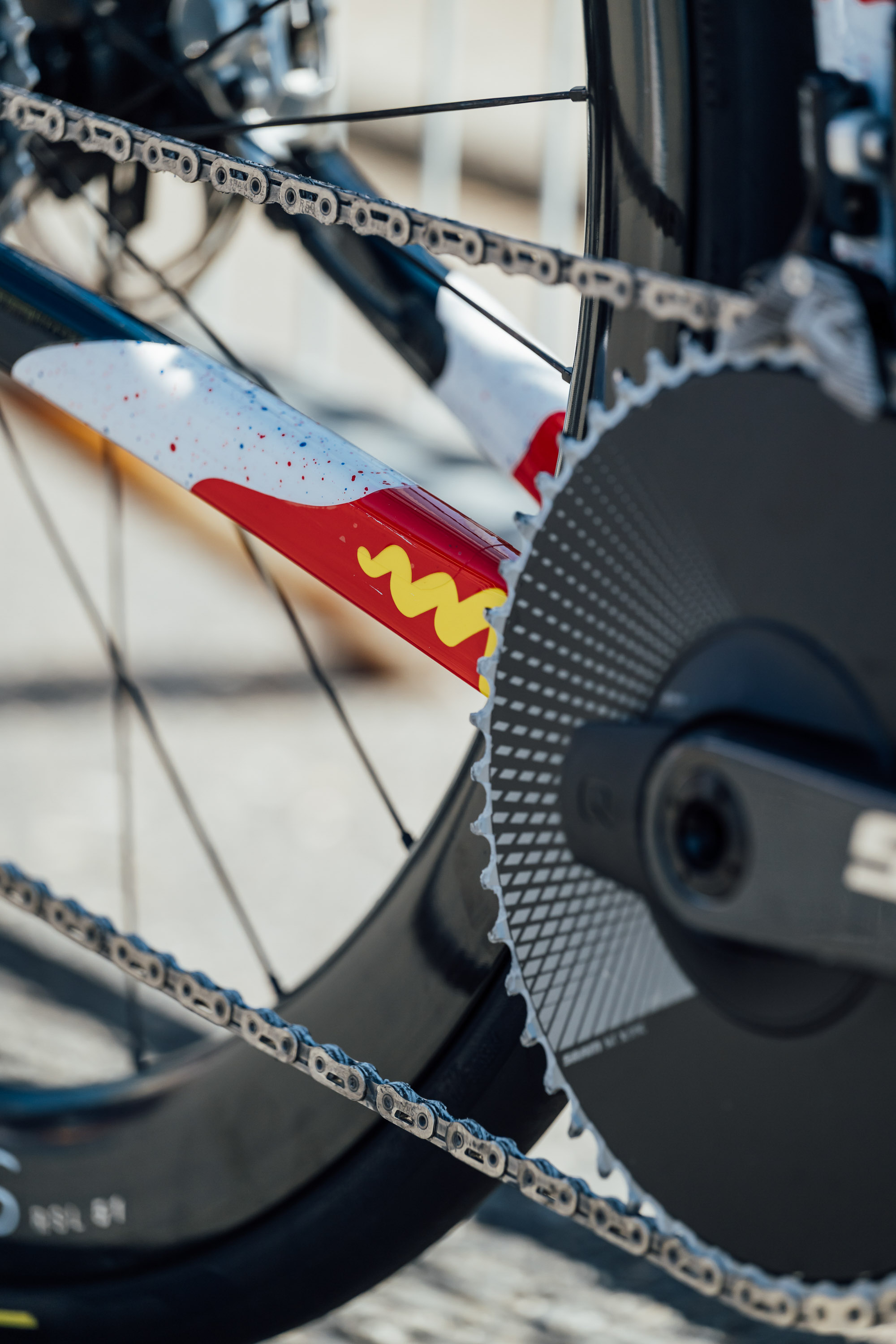
(Image credit: Chris Auld)
There are even some details hiding behind this aero 1x chainring, but they must remain secret.
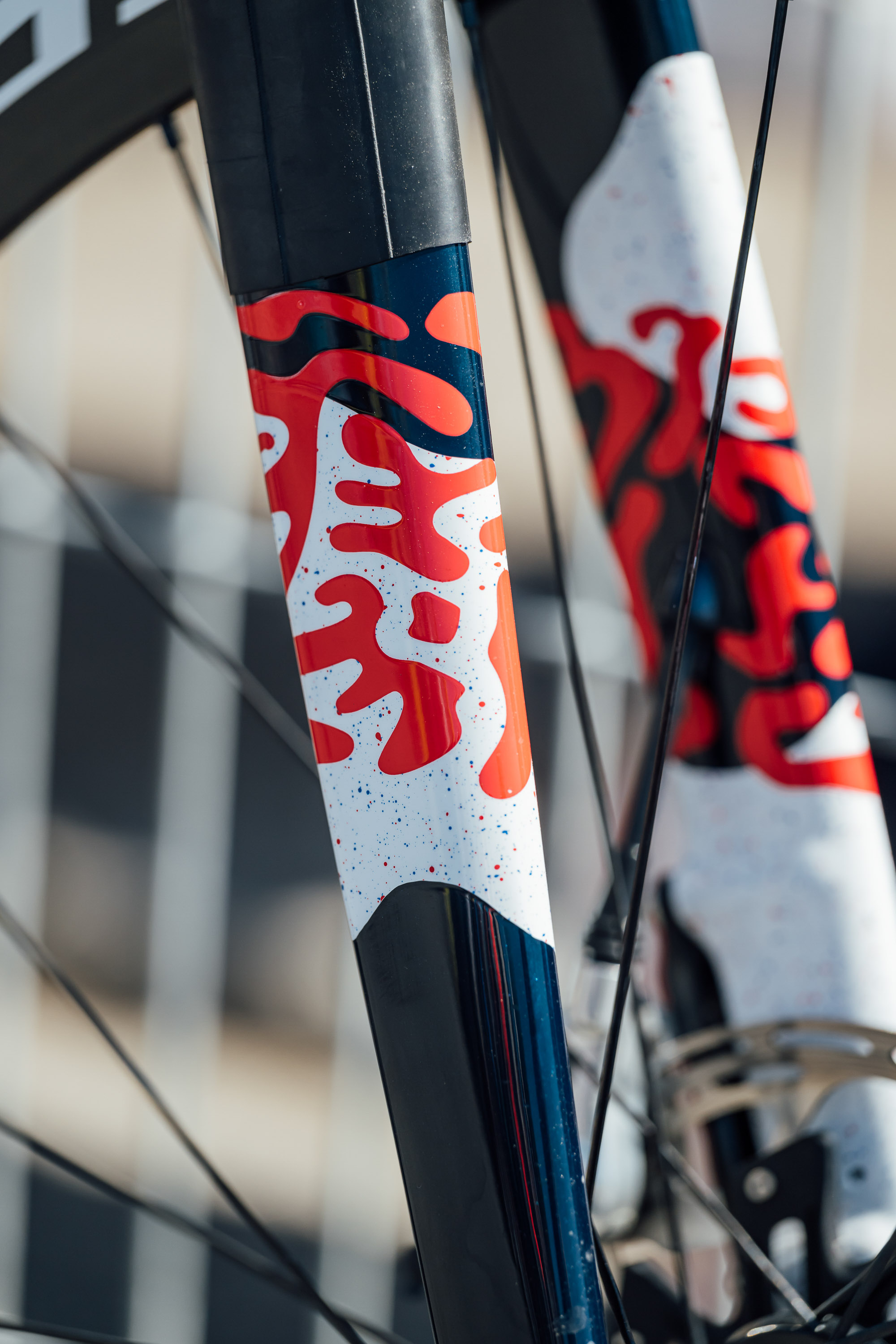
(Image credit: Chris Auld)
I say animal print, but I’m not totally sure which animal this comes from.
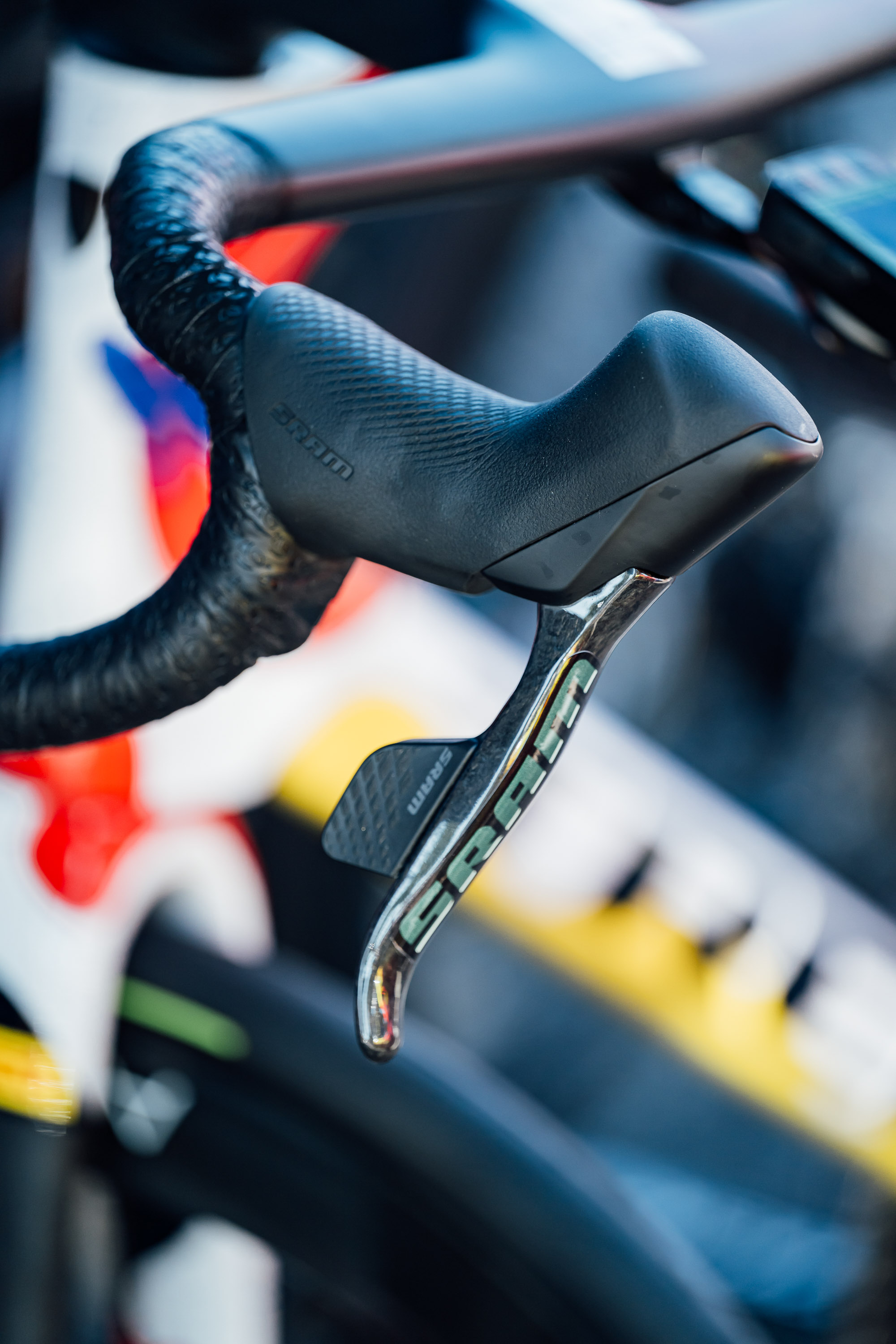
(Image credit: Chris Auld)
Curiously, despite having access to the latest SRAM Red components, team sprinter Jonathan Milan chooses to use the old Red hoods.
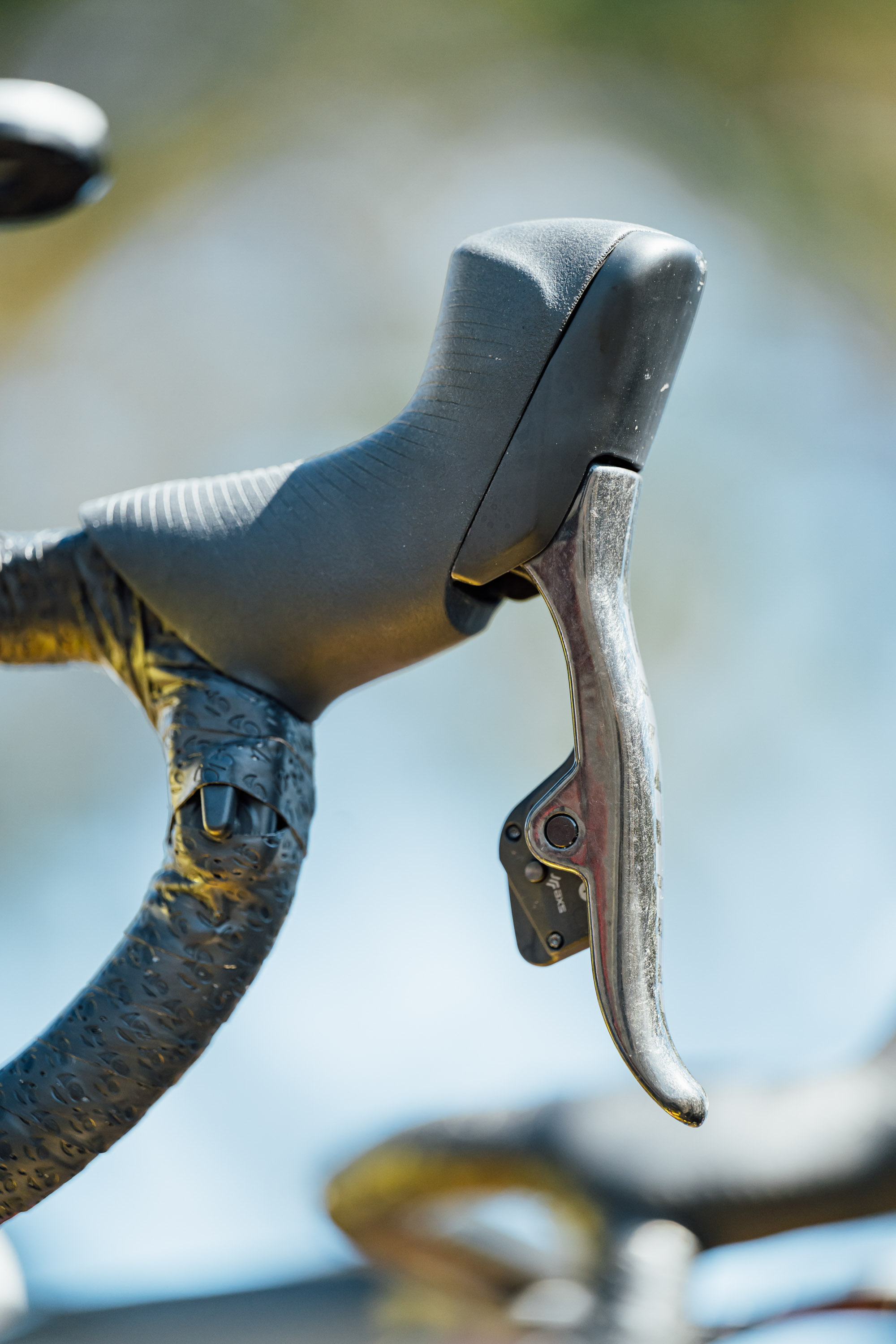
(Image credit: Chris Auld)
He’s a bigger rider, so maybe he just likes the shape more for his larger hands? It’s hard to say. In any case, he runs extra sprint shifters in the crook of the drops.

(Image credit: Chris Auld)
Another team, another custom paint scheme. Cofidis this time, with a more modernist twist on the classic Mondrian option they usually run.

(Image credit: Chris Auld)
The team is running the latest Campagnolo Super Record wireless groupset, but here they have also mounted the rear derailleur with a 3D printed titanium hanger.
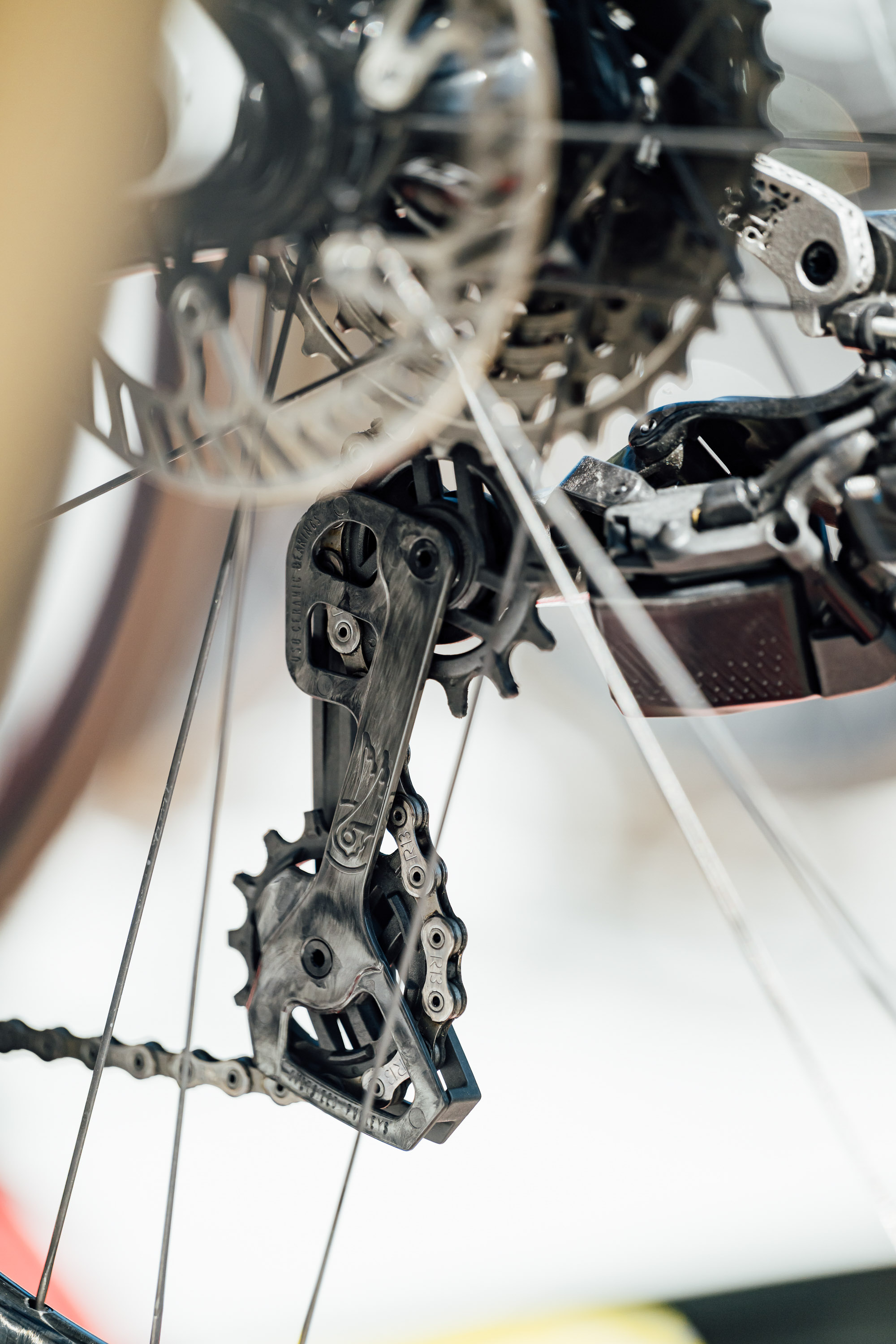
(Image credit: Chris Auld)
The inside face of the rear mech cage still has a Campagnolo logo embossed on it, which is a lovely detail.
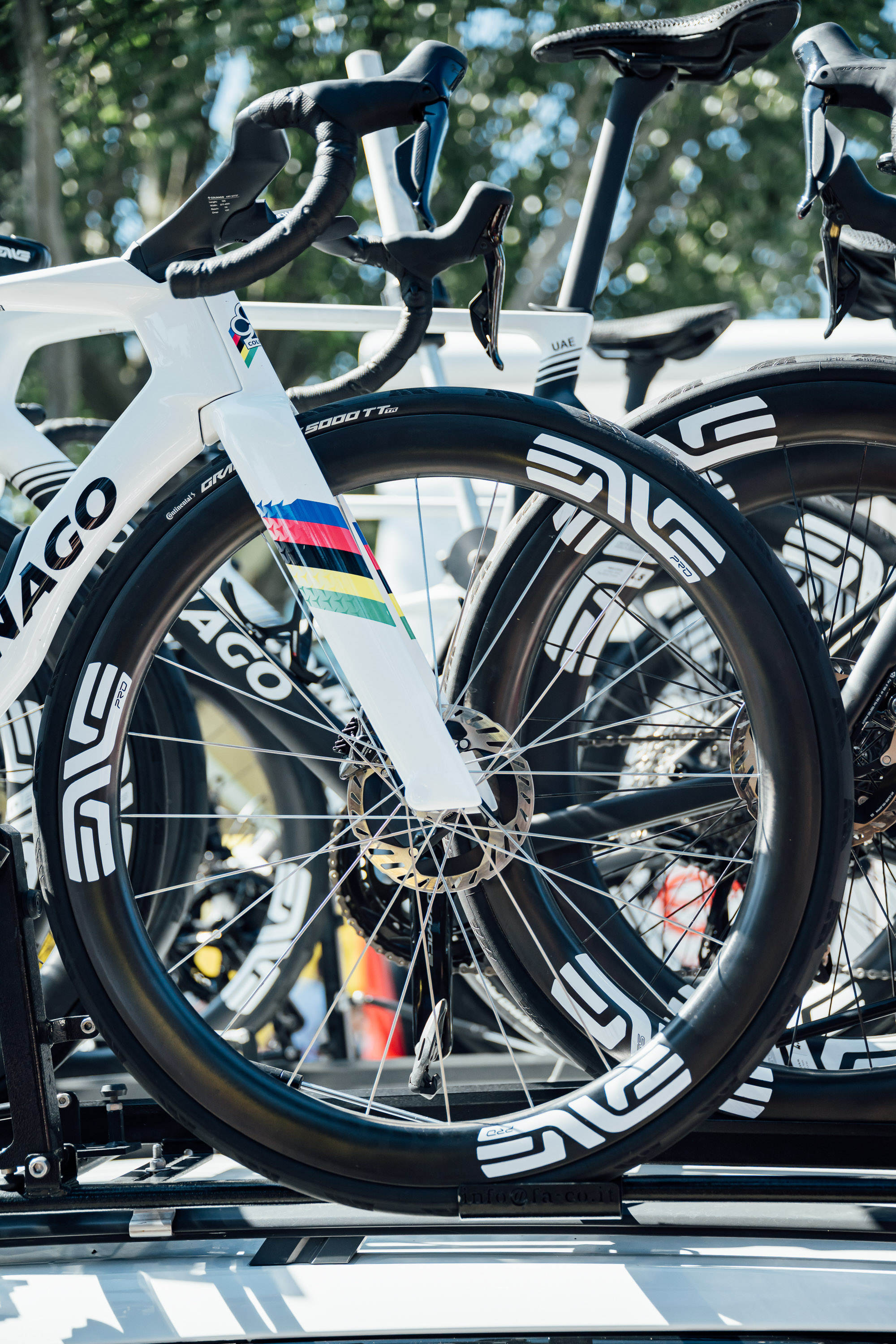
(Image credit: Chris Auld)
I think we all know whose bike this is by now, but it’s the wheels we’re interested in here.
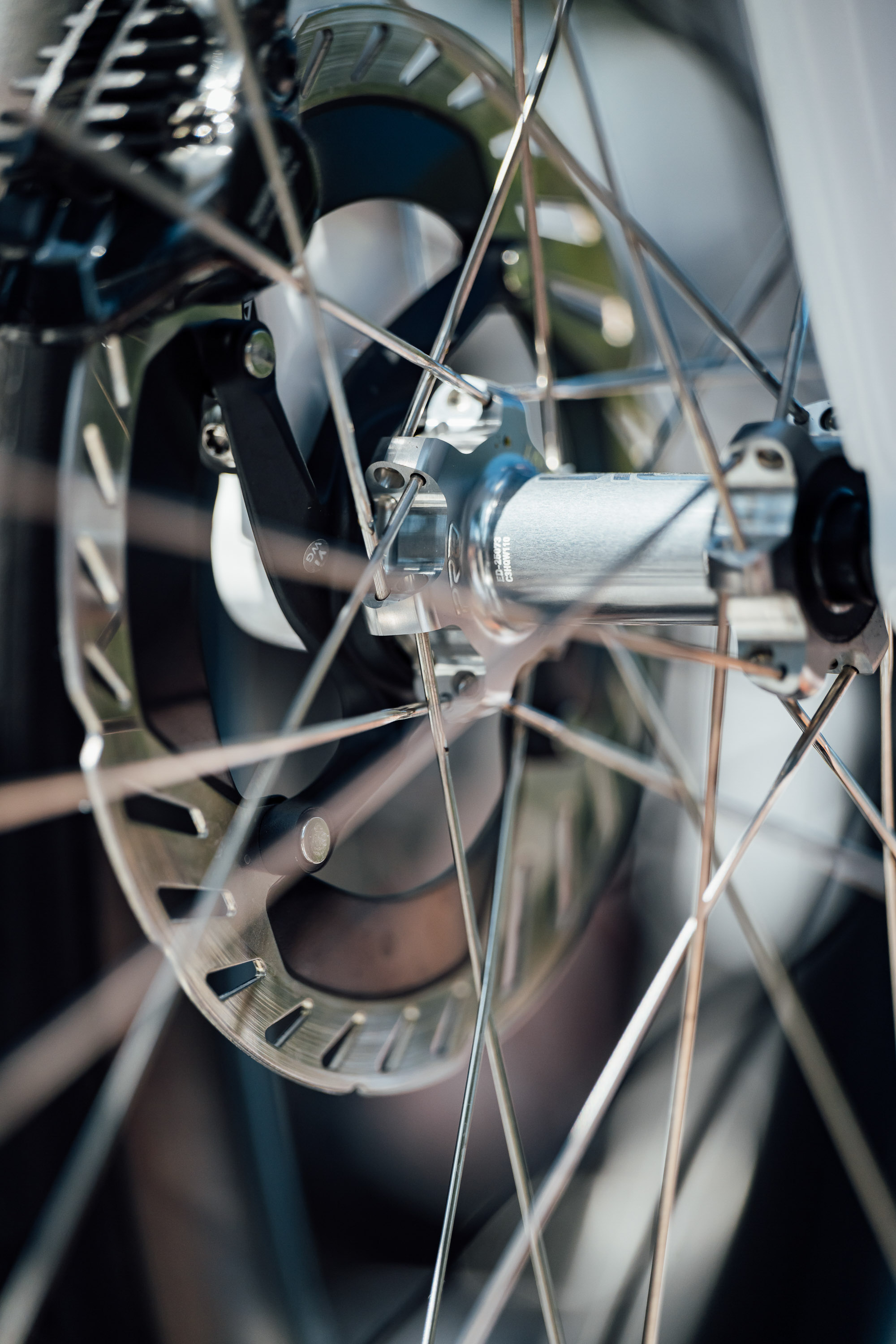
(Image credit: Chris Auld)
Enve launched a ‘Pro’ set of its SES wheelsets that are lighter, slightly narrower, and feature silver hubs and spokes.
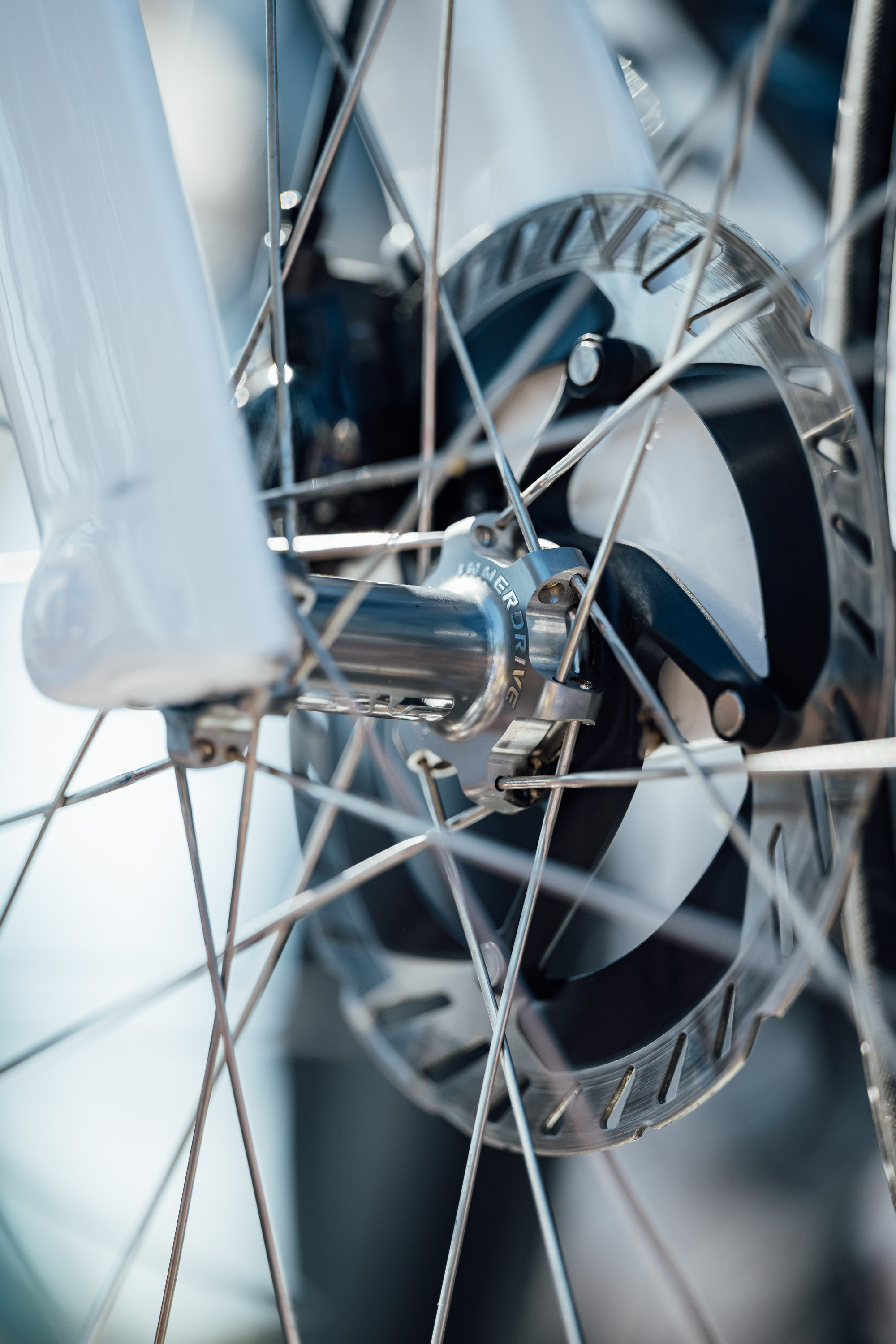
(Image credit: Chris Auld)
They’re laced with Alpina Ultralite Aero R5 triple butted stainless steel spokes
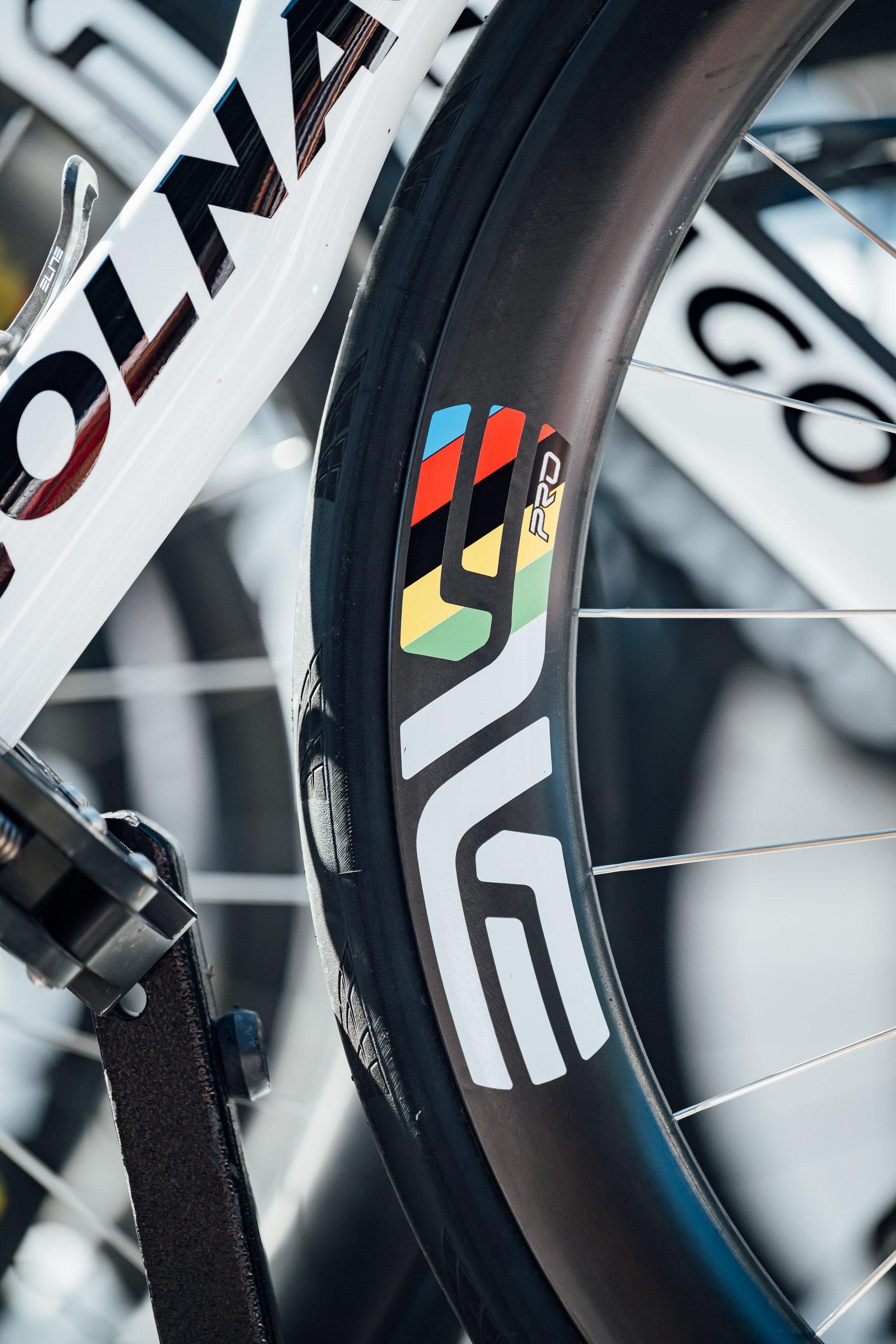
(Image credit: Chris Auld)
The rims are a very slightly different shape to the standard SES wheels, and of course, Pogačar gets World Champion rainbow wheel logos, which have since had the white portion replaced with yellow on his latest bike.
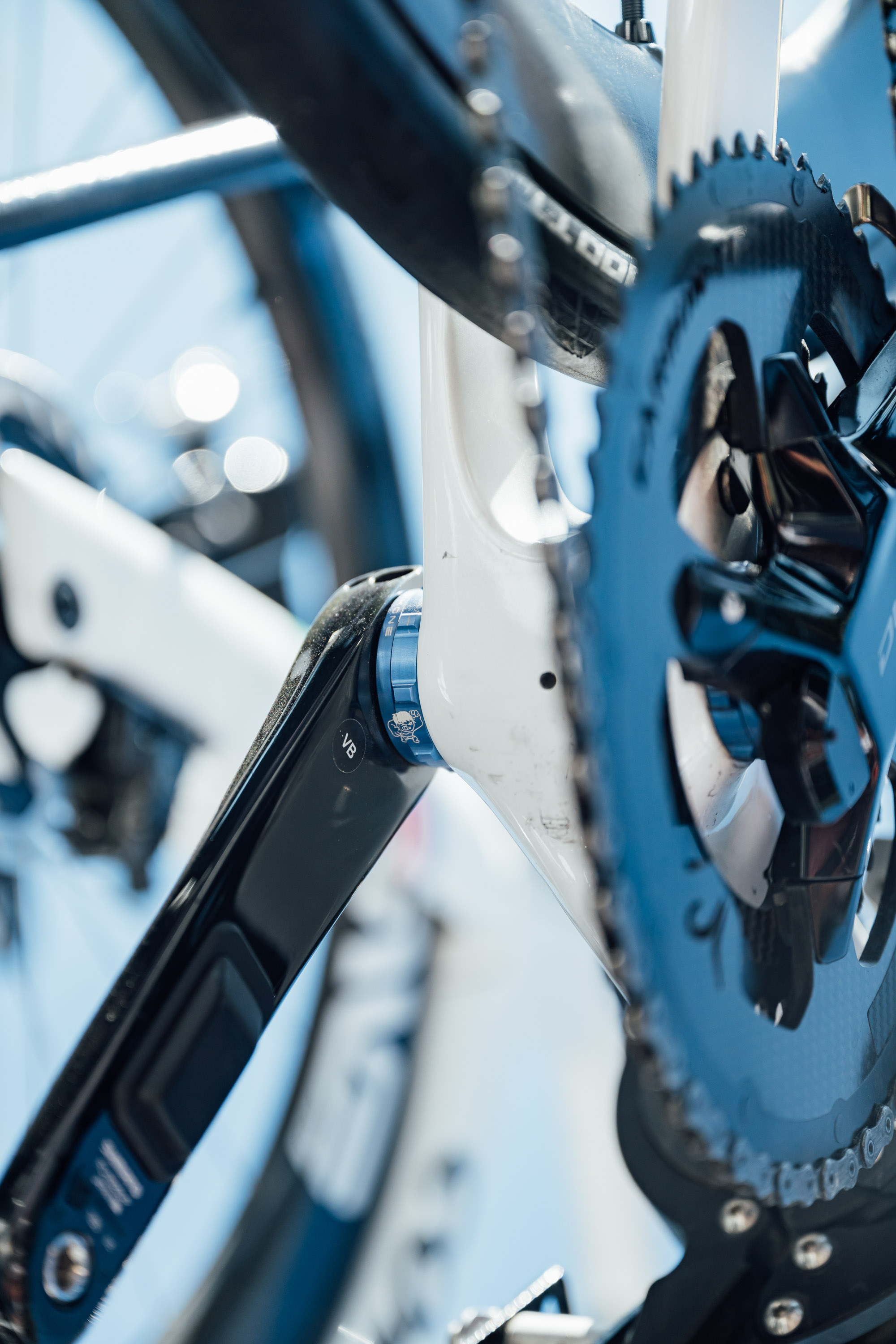
(Image credit: Chris Auld)
There’s always details to be found if you look closely…
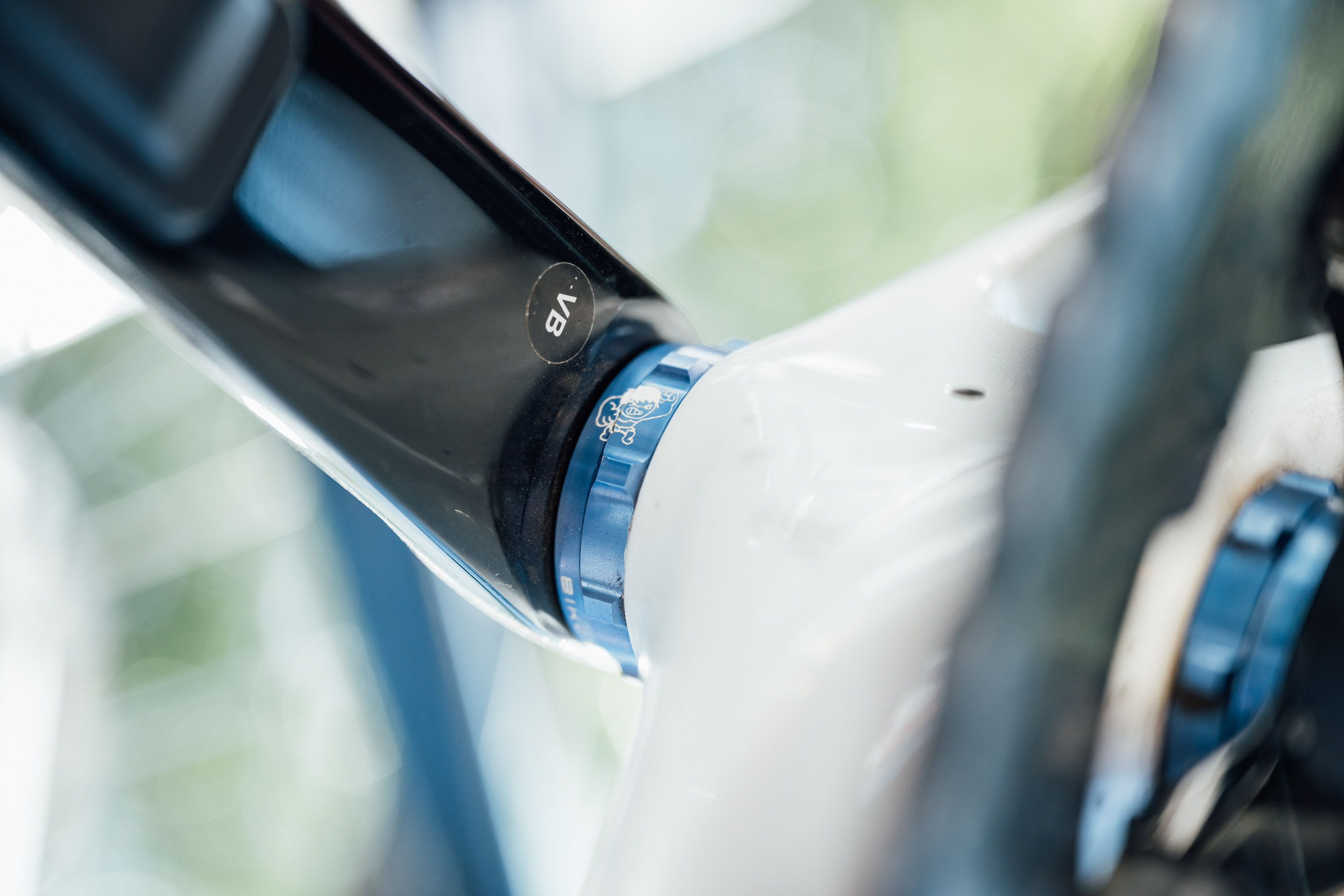
(Image credit: Chris Auld)
Yes, that is a baby hulk logo, the same as Pogačar has as a sticker on his stem, etched into his bottom bracket shell.
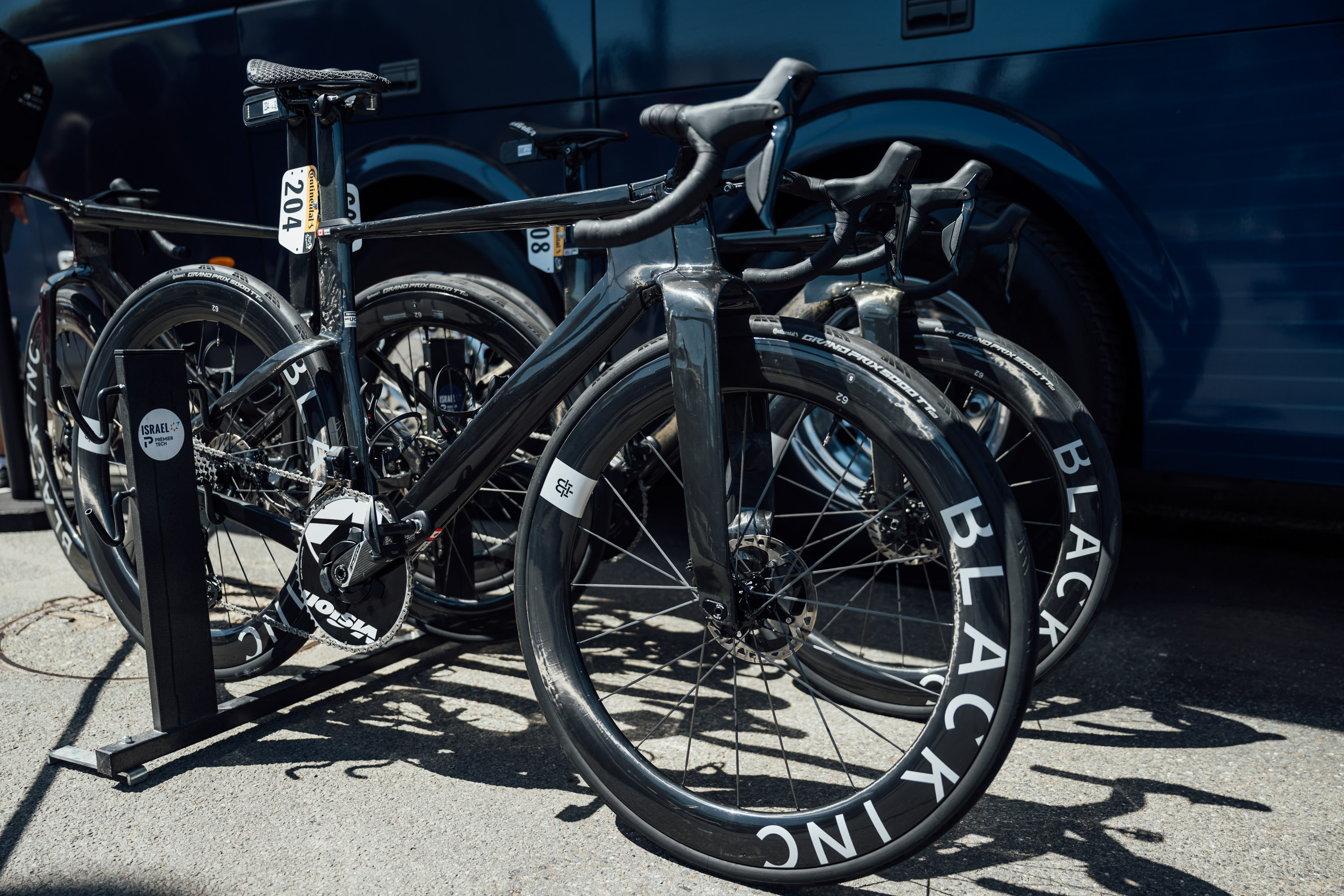
(Image credit: Chris Auld)
At the Dauphiné, this prototype Factor caused quite the stir, online and in person. Then it was only Jake Stewart who had access to it, but now at least two others do, including the team’s main sprinter, Pascal Ackermann.
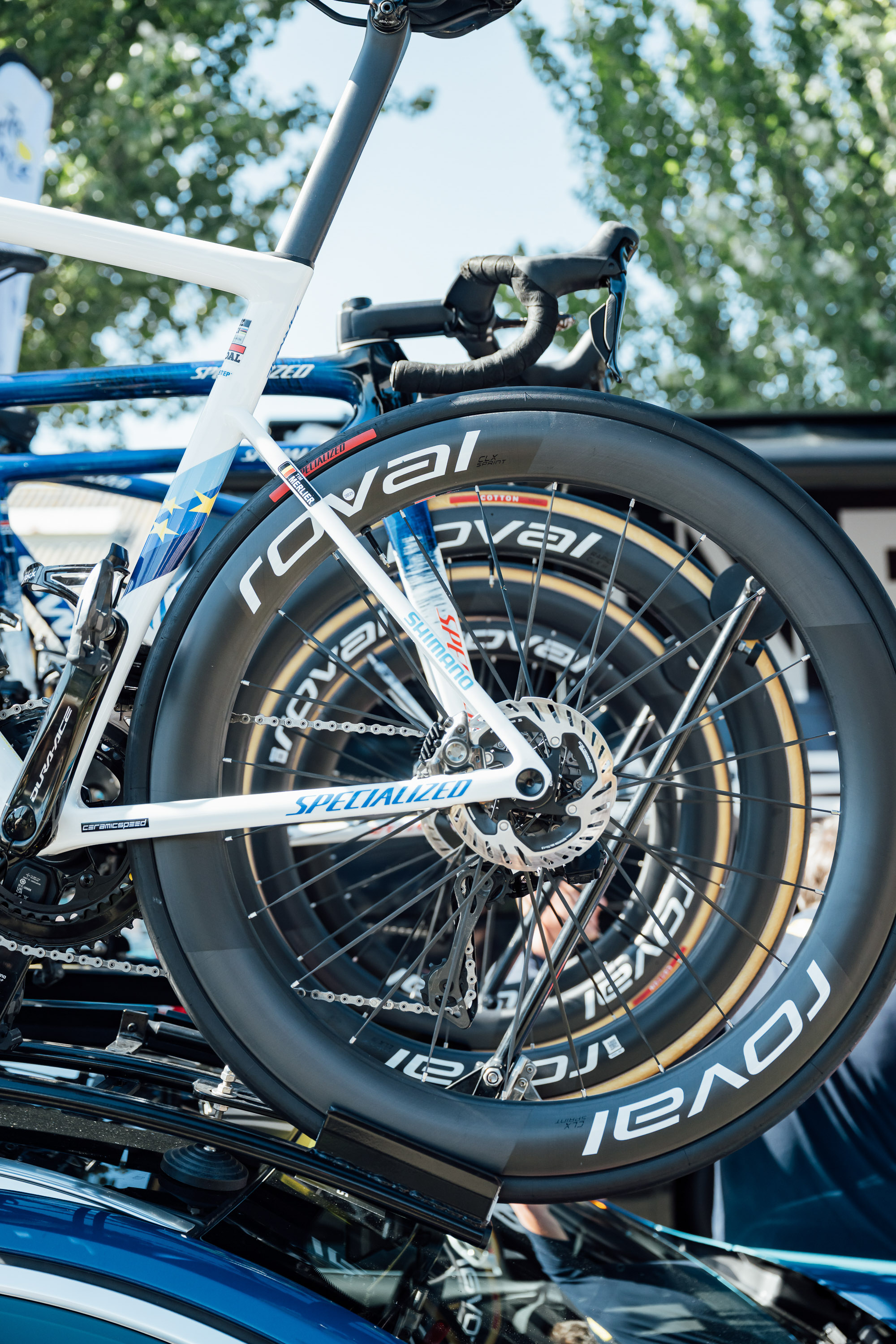
(Image credit: Chris Auld)
Tim Merlier’s bike, which we’ve got a dedicated gallery of for the curious, was running Roval’s latest Rapide CLX Sprint wheels, the deepest the brand offers.
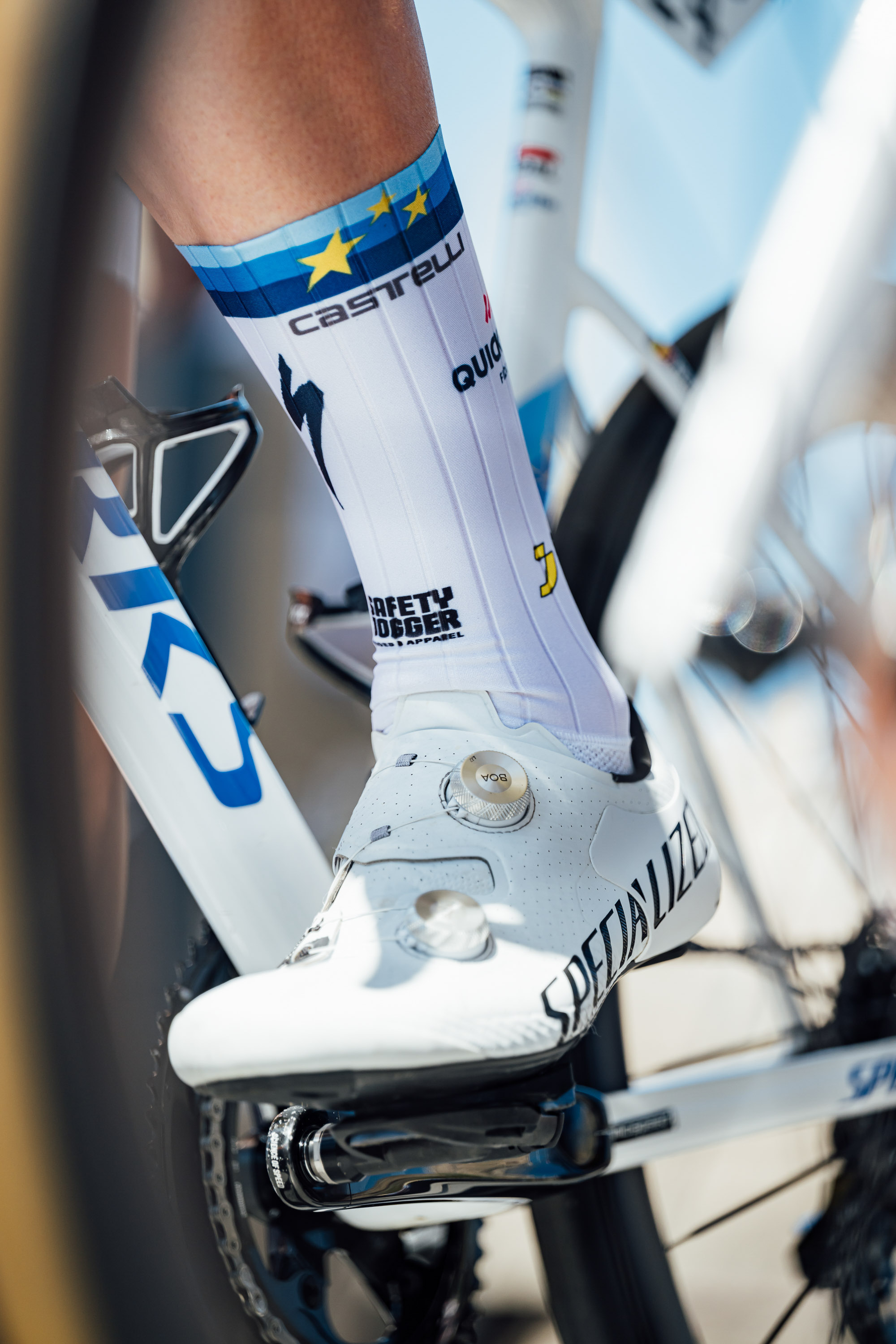
(Image credit: Chris Auld)
Merlier also wore non-standard aero socks, a marginal gain that – in part at least – helped net him some tight margins of victory.
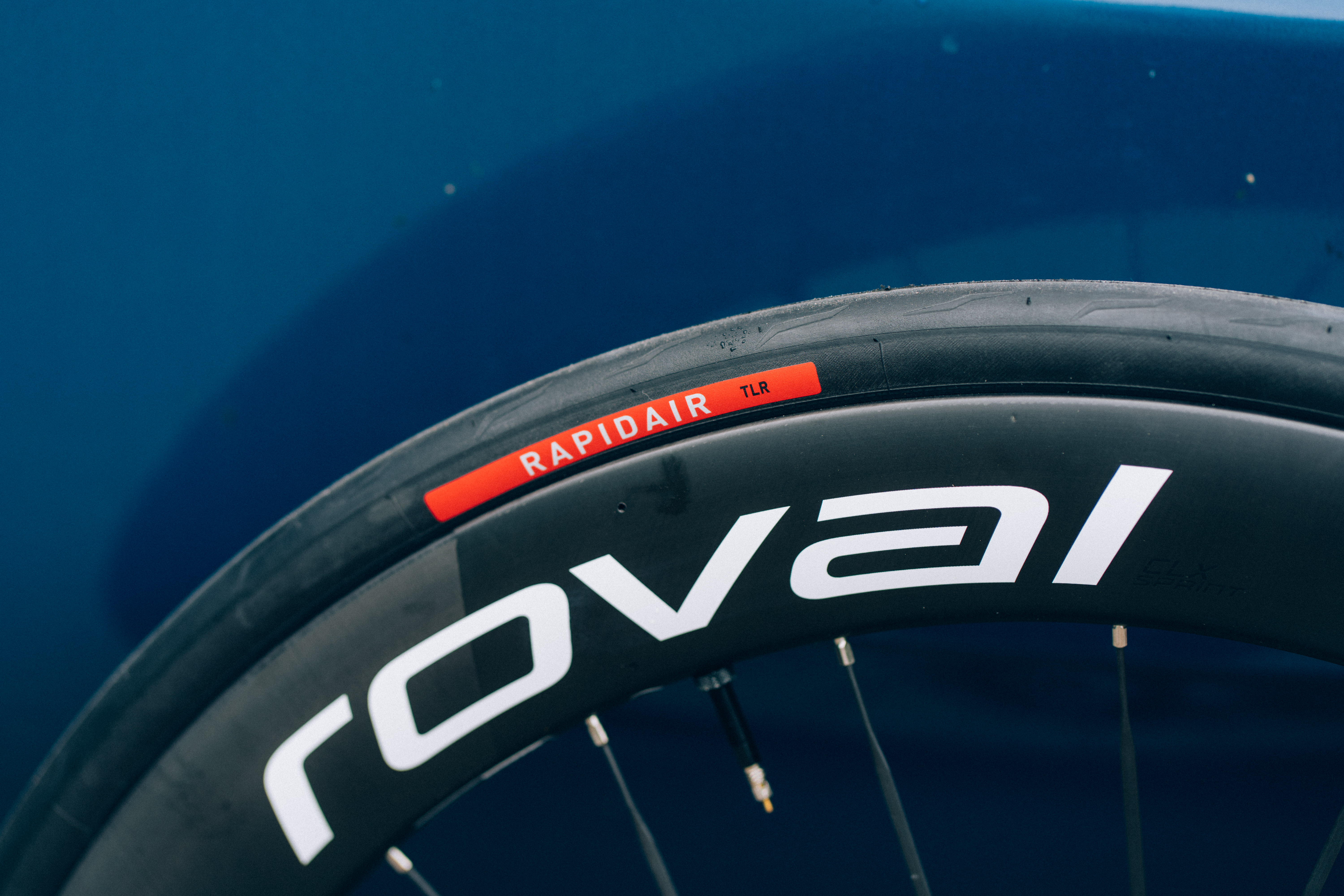
(Image credit: Will Jones)
As well as the new Sprint wheels, Merlier also opted to use the new Rapidair TLR tyre from Specialized, the fastest option the brand makes. It has, apparently, been aero optimised.
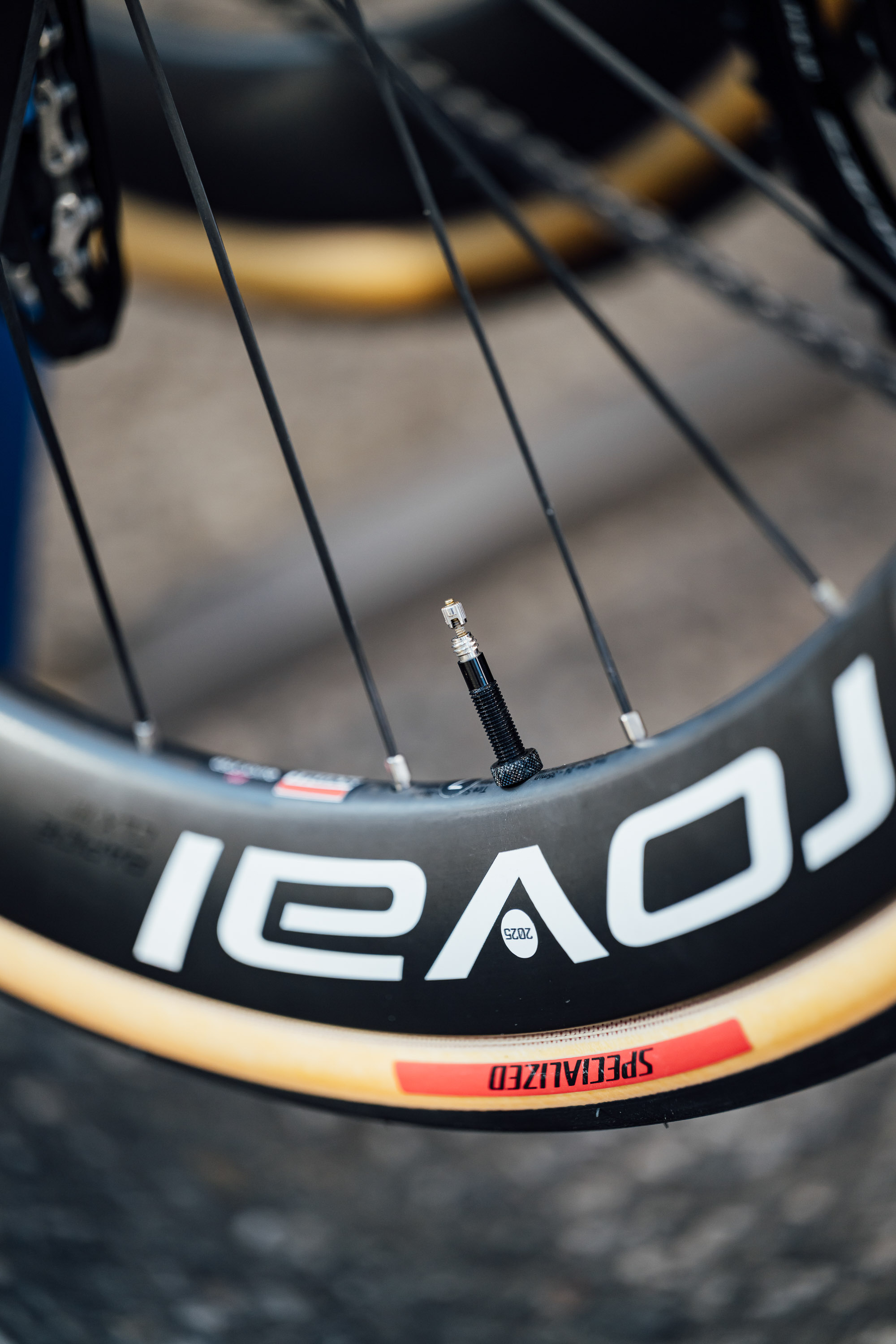
(Image credit: Chris Auld)
Most Soudal-Quick Step riders however were on the standard new Rapide CLX III wheels paired with the new tubeless Turbo Cotton tyre.
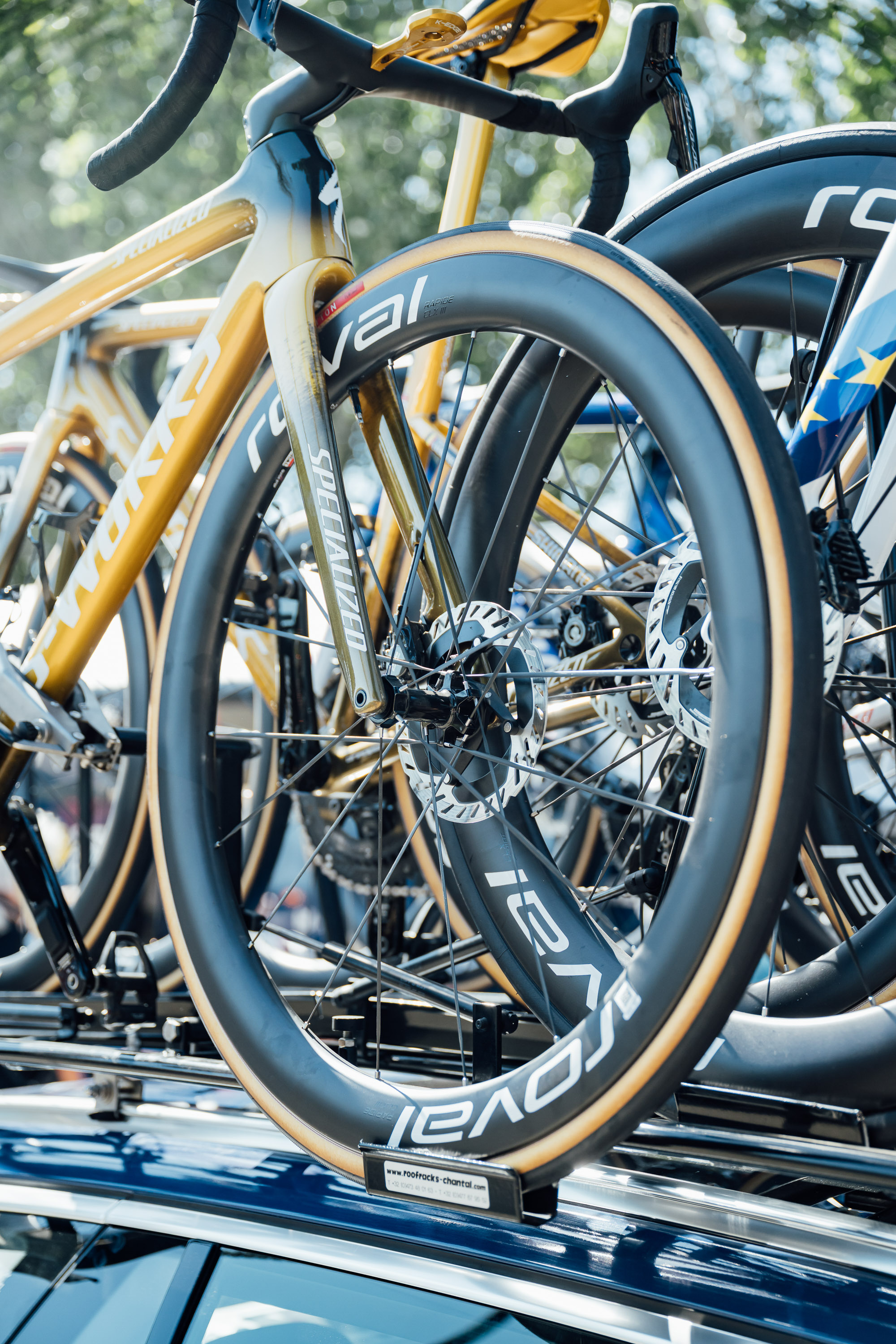
(Image credit: Chris Auld)
Evenepoel’s bike, which we also have a full gallery of, was running this wheel/tyre setup too.

(Image credit: Chris Auld)
The old Turbo Cotton was hugely popular, but relatively narrow. This latest option brings the model into the tubeless era and offers more modern widths too.
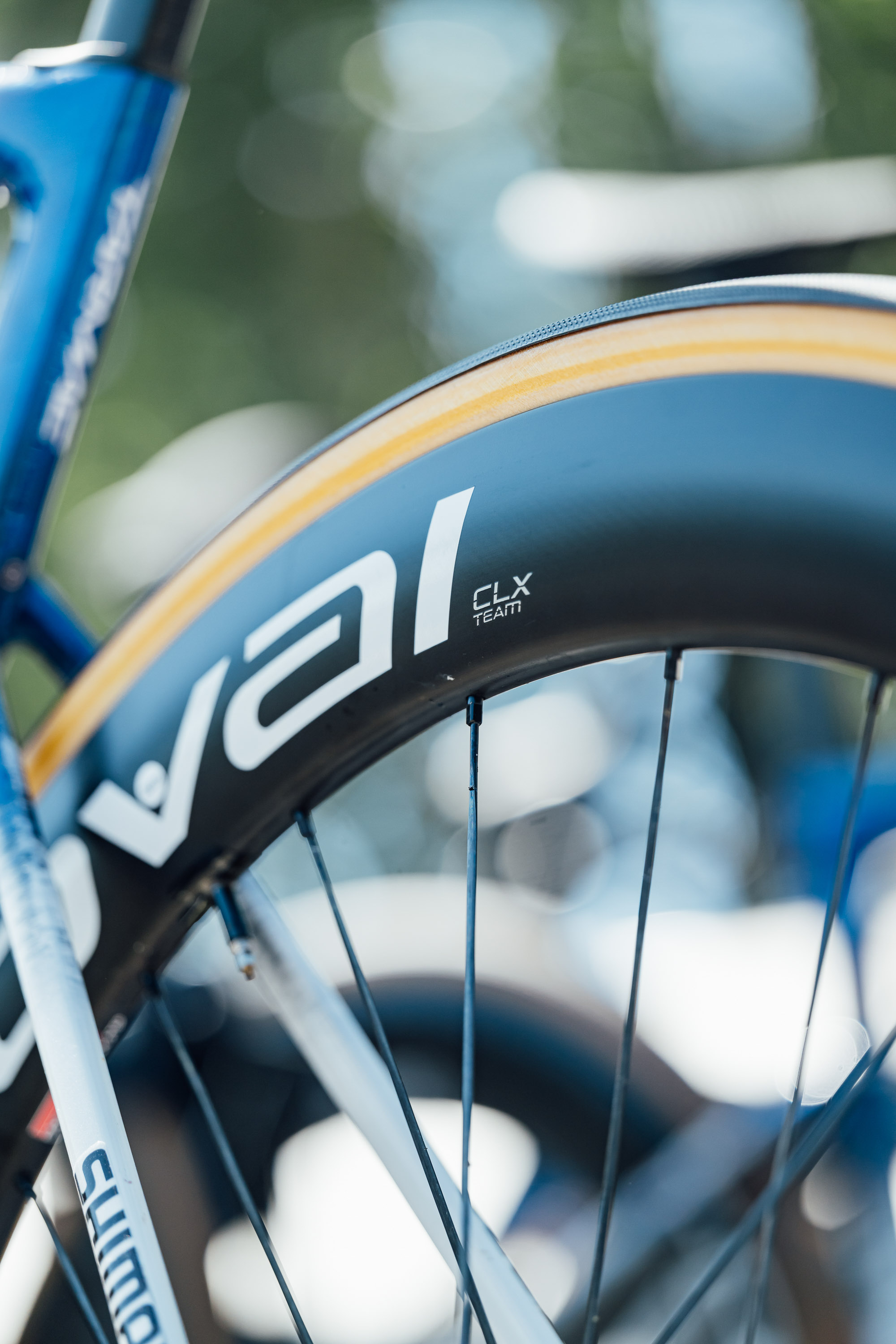
(Image credit: Chris Auld)
Some riders were still using the older Rapide CLX II Team edition wheels.
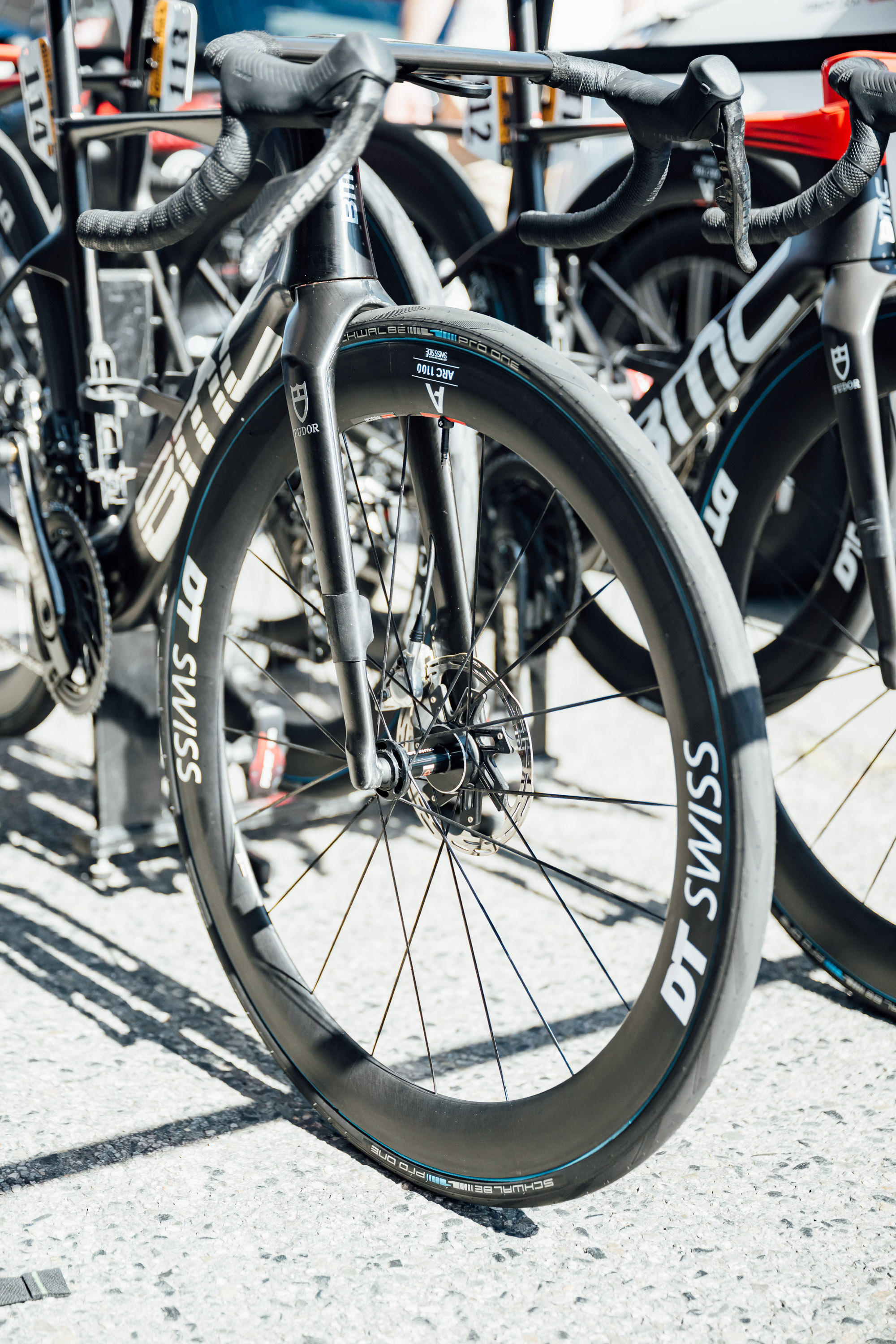
(Image credit: Chris Auld)
The Tudor Pro Cycling riders were on the latest DT Swiss ARC 1100 wheels, which feature a new rim shape.
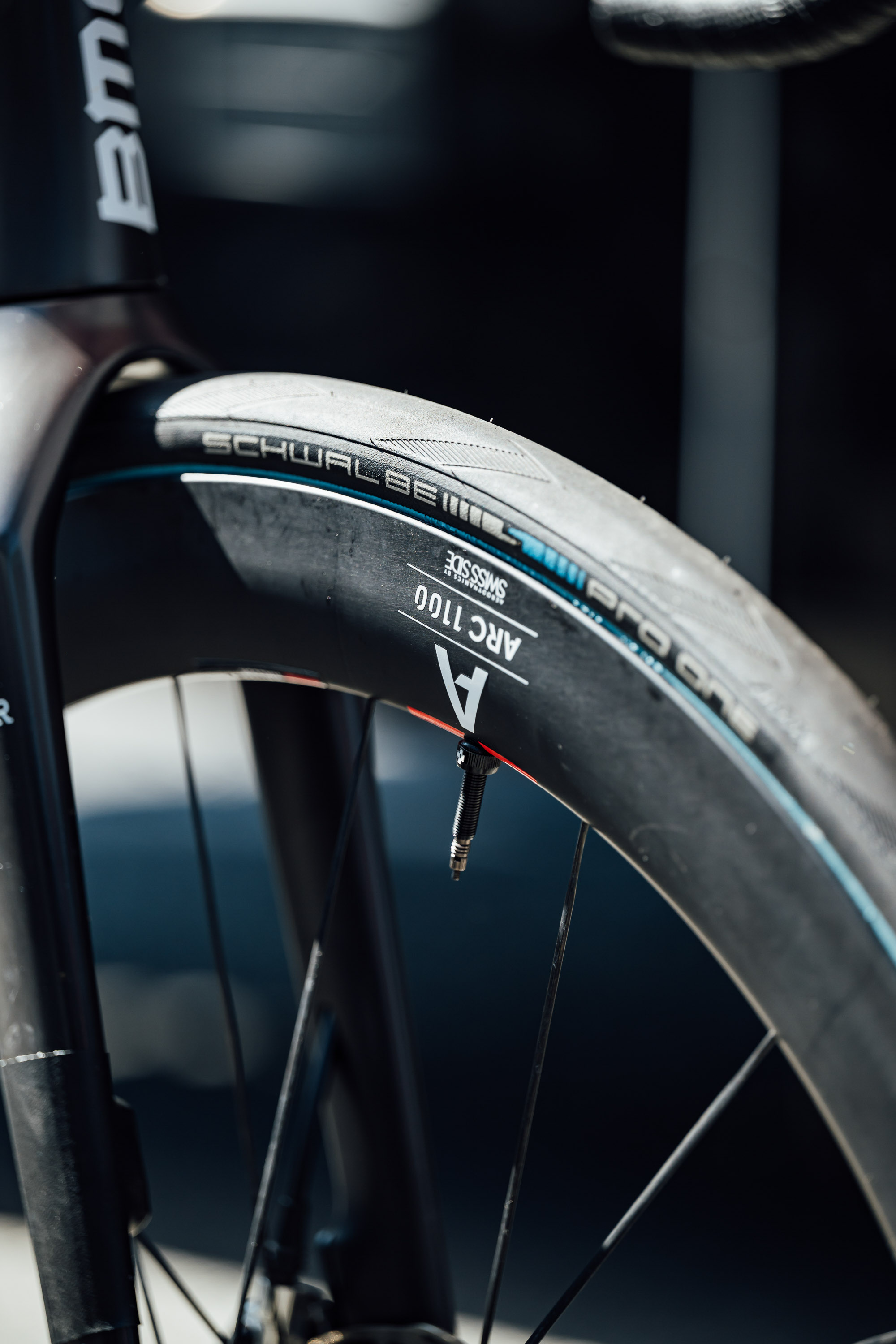
(Image credit: Chris Auld)
There’s a flatter section straight down from the edge of the rim, and then a distinct change in angle as the rim tapers to a V shape.
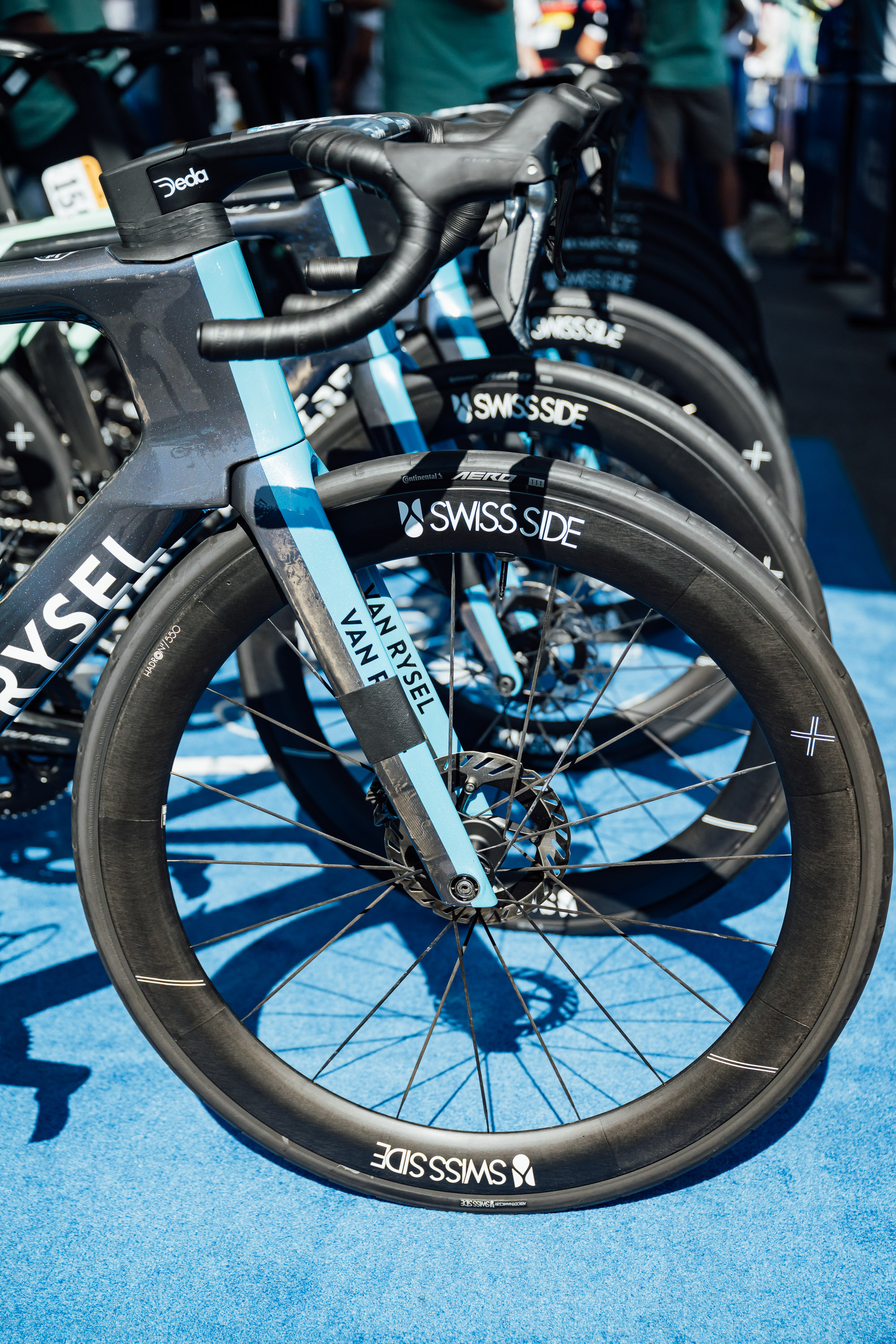
(Image credit: Chris Auld)
Not to be outdone, Decathlon-AG2R La Mondiale were using Swiss Side’s new Hadron3 wheels.
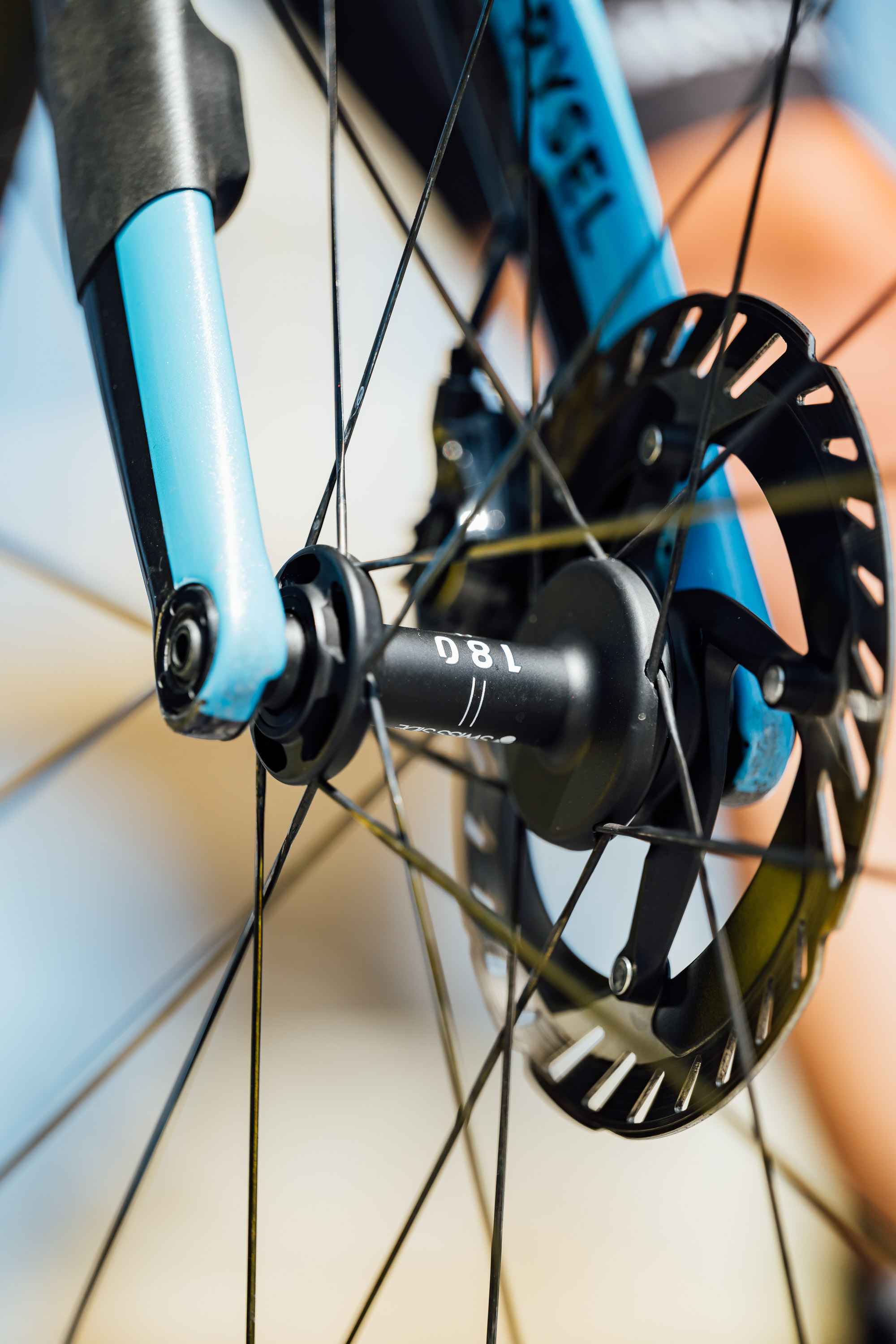
(Image credit: Chris Auld)
Like several high end wheels, they roll on DT Swiss hubs.
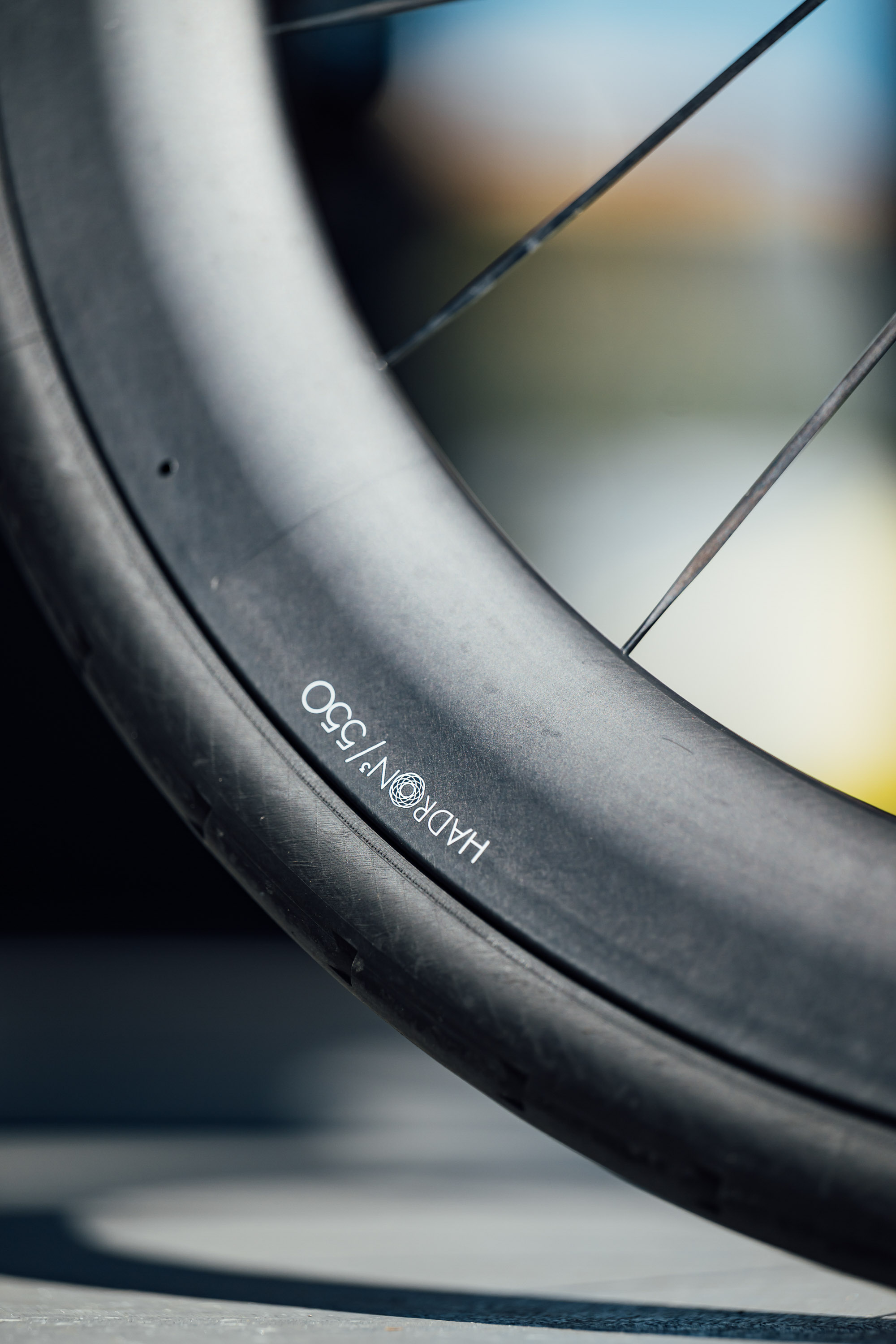
(Image credit: Chris Auld)
The branding is pretty minimal. The rim shape has been designed with a greater focus on stability in windy conditions, to allow the riders to stay in an aero position more often.
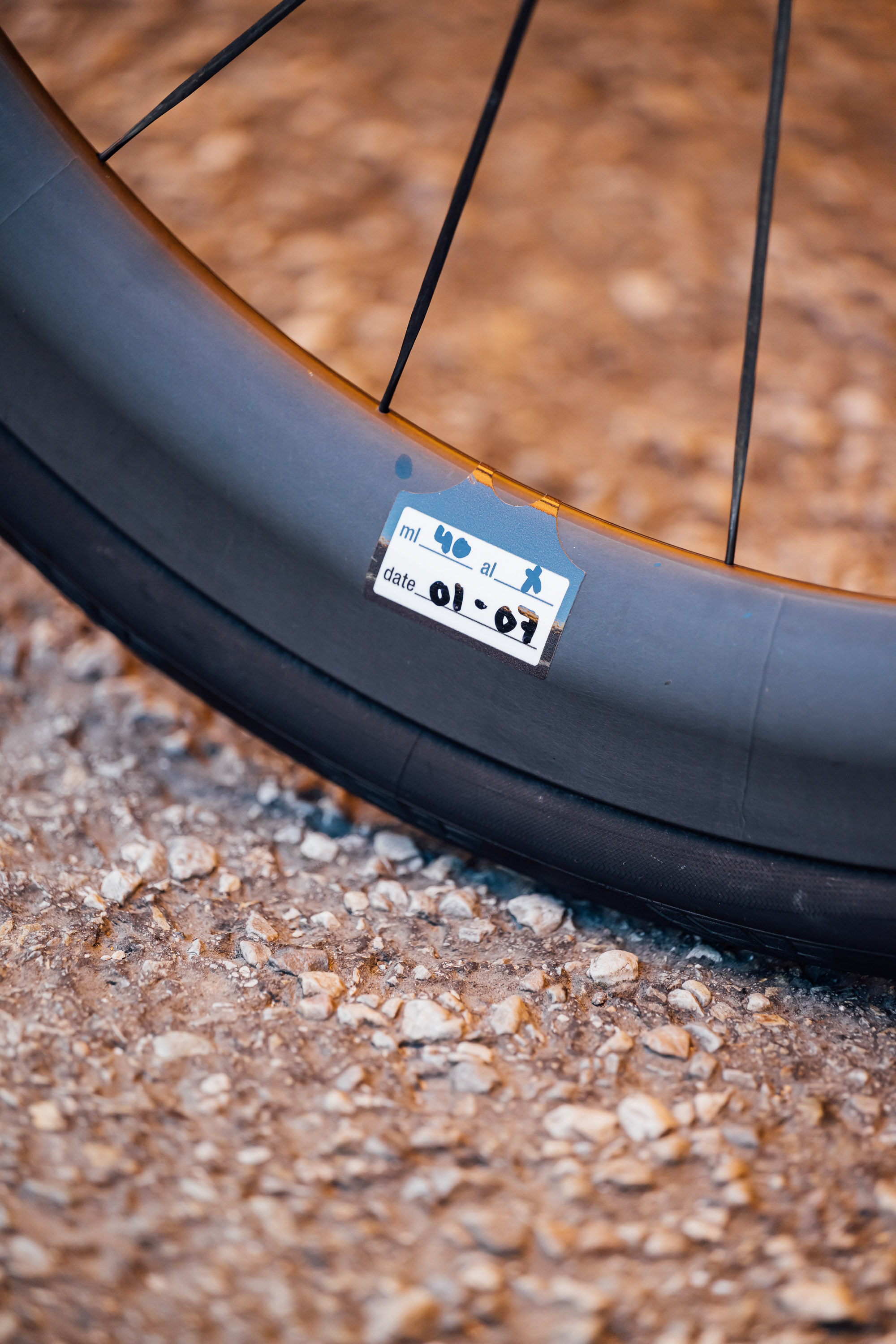
(Image credit: Chris Auld)
The Uno-X mechanics keep a note of sealant top-ups directly on each rim.
–
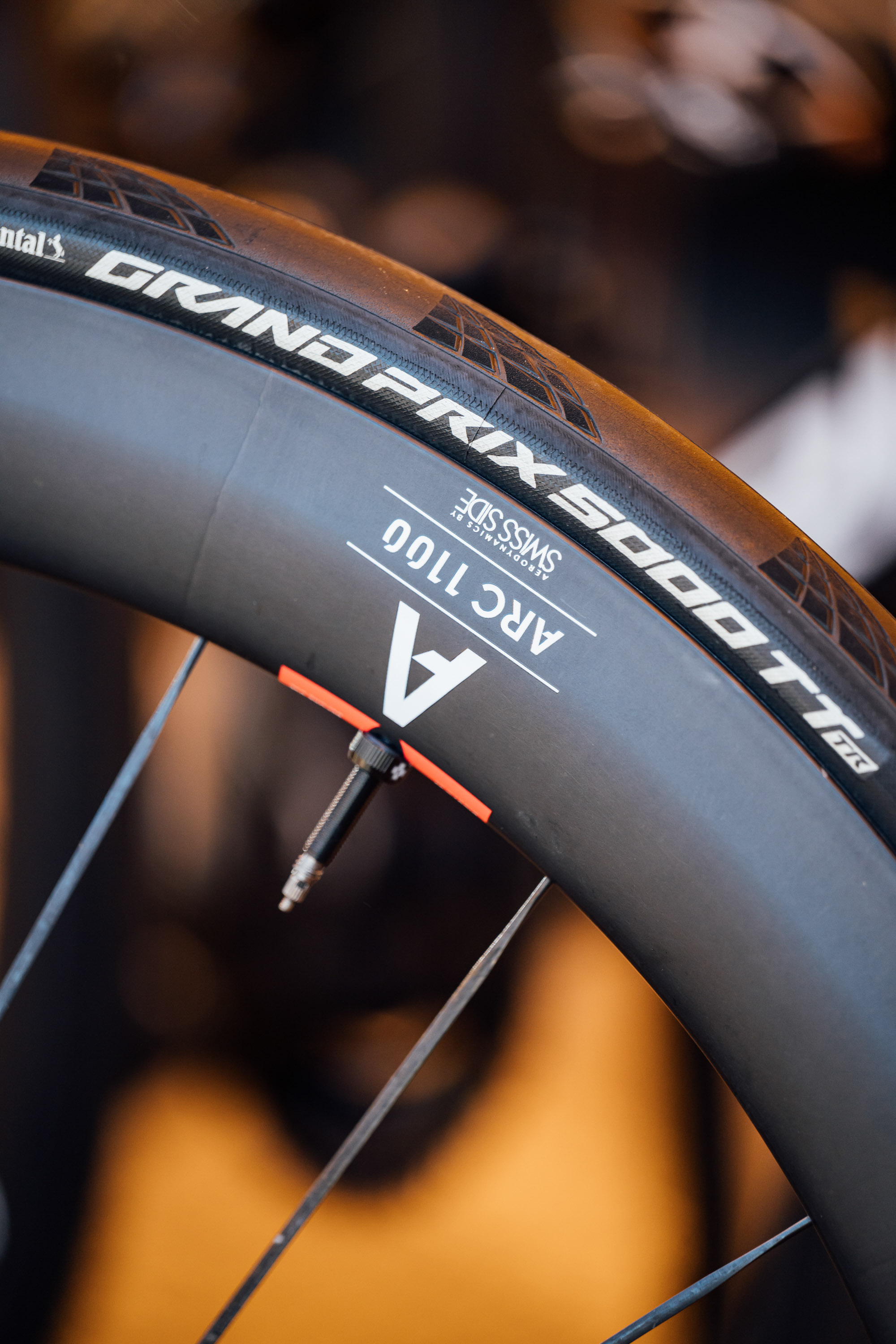
(Image credit: Chris Auld)
Uno-X are also using the new ARC wheels from DT Swiss.
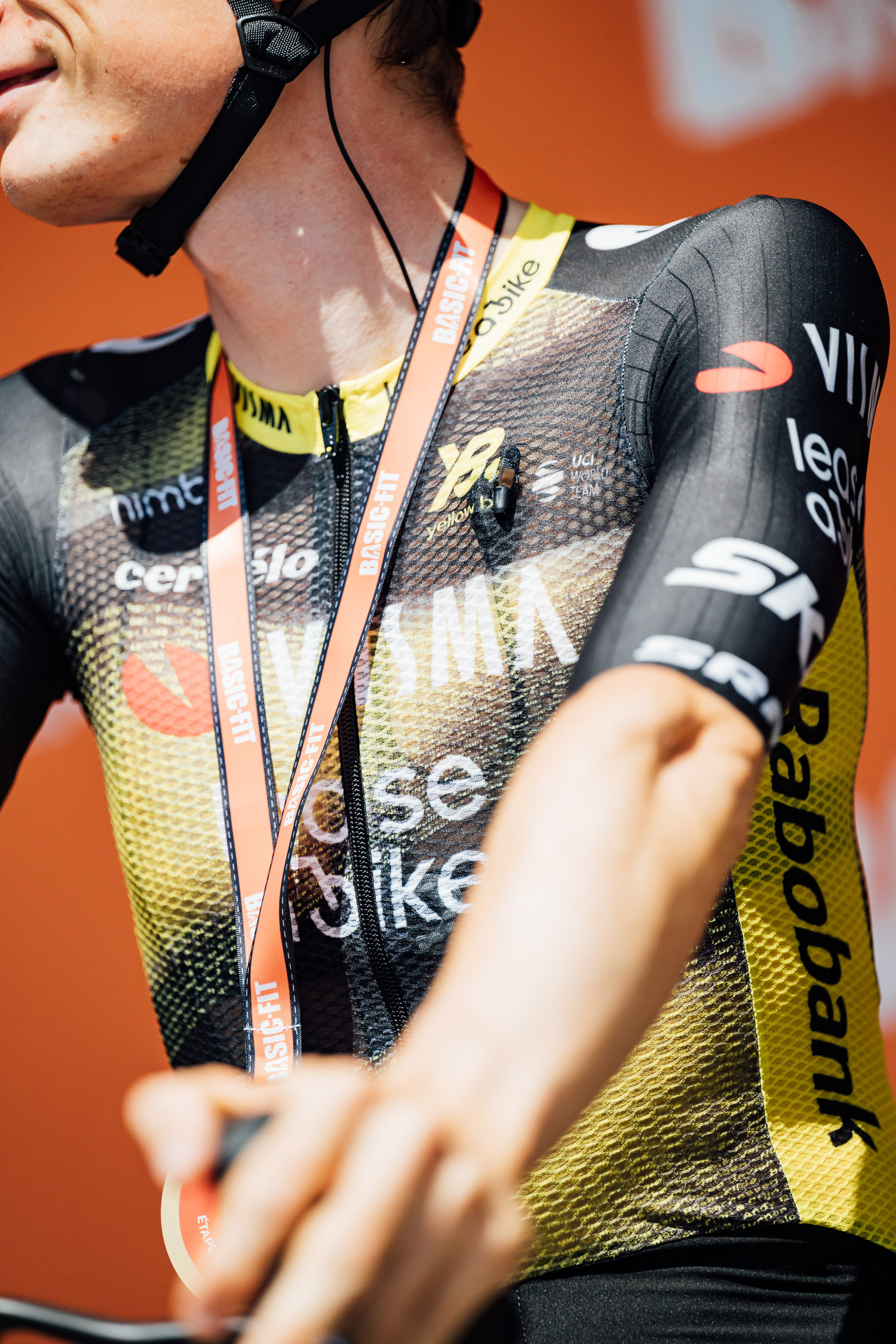
(Image credit: Chris Auld)
In advance of the race the news broke that high end shoe brand Nimbl would be making all of Visma-Lease A Bike’s kit for the tour, so this is the first chance we’ve had to see it up close. Here’s a meshy, lightweight option.
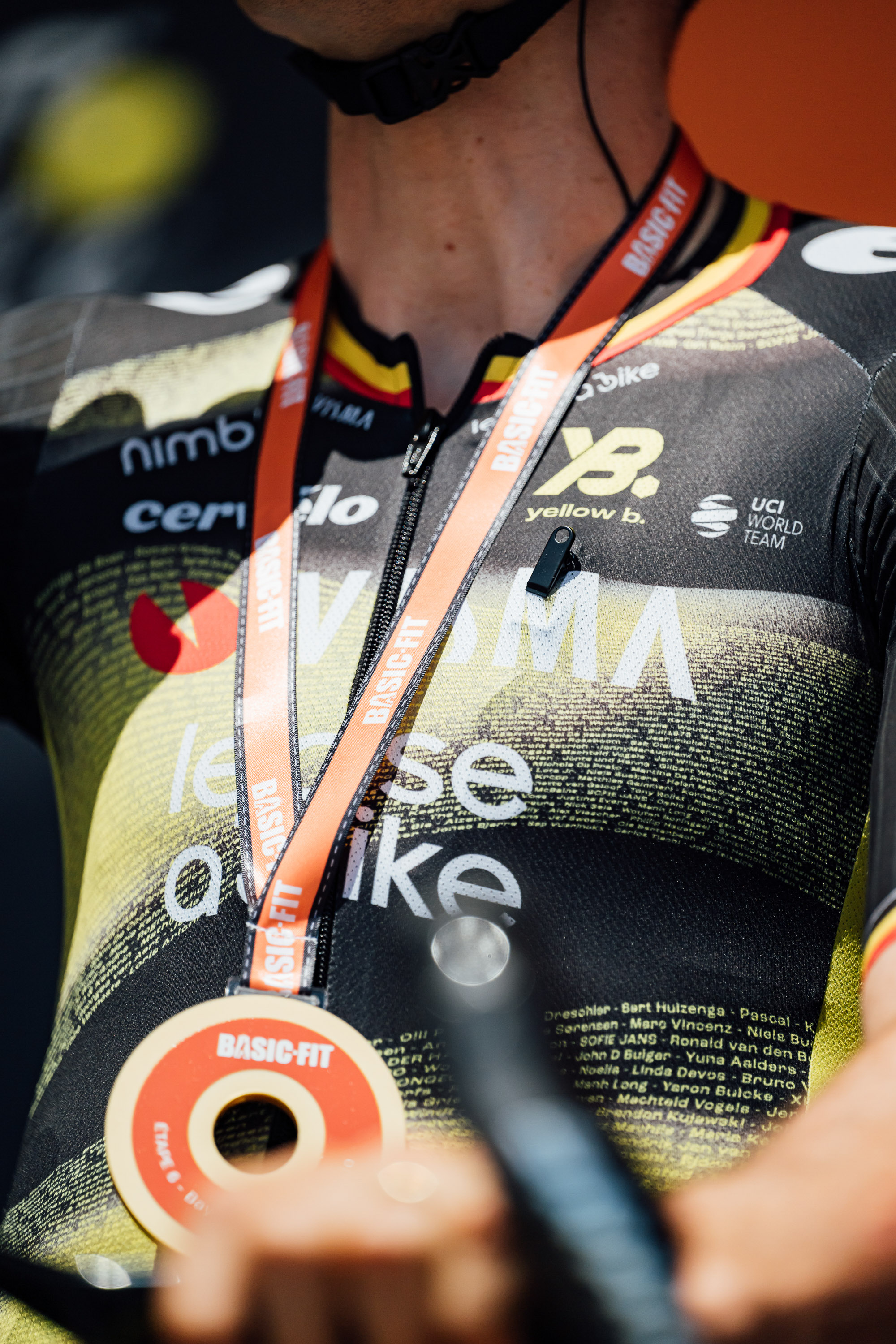
(Image credit: Chris Auld)
And here is a more standard aero option. Before now, it was widely accepted that Visma was simply producing its own kit.
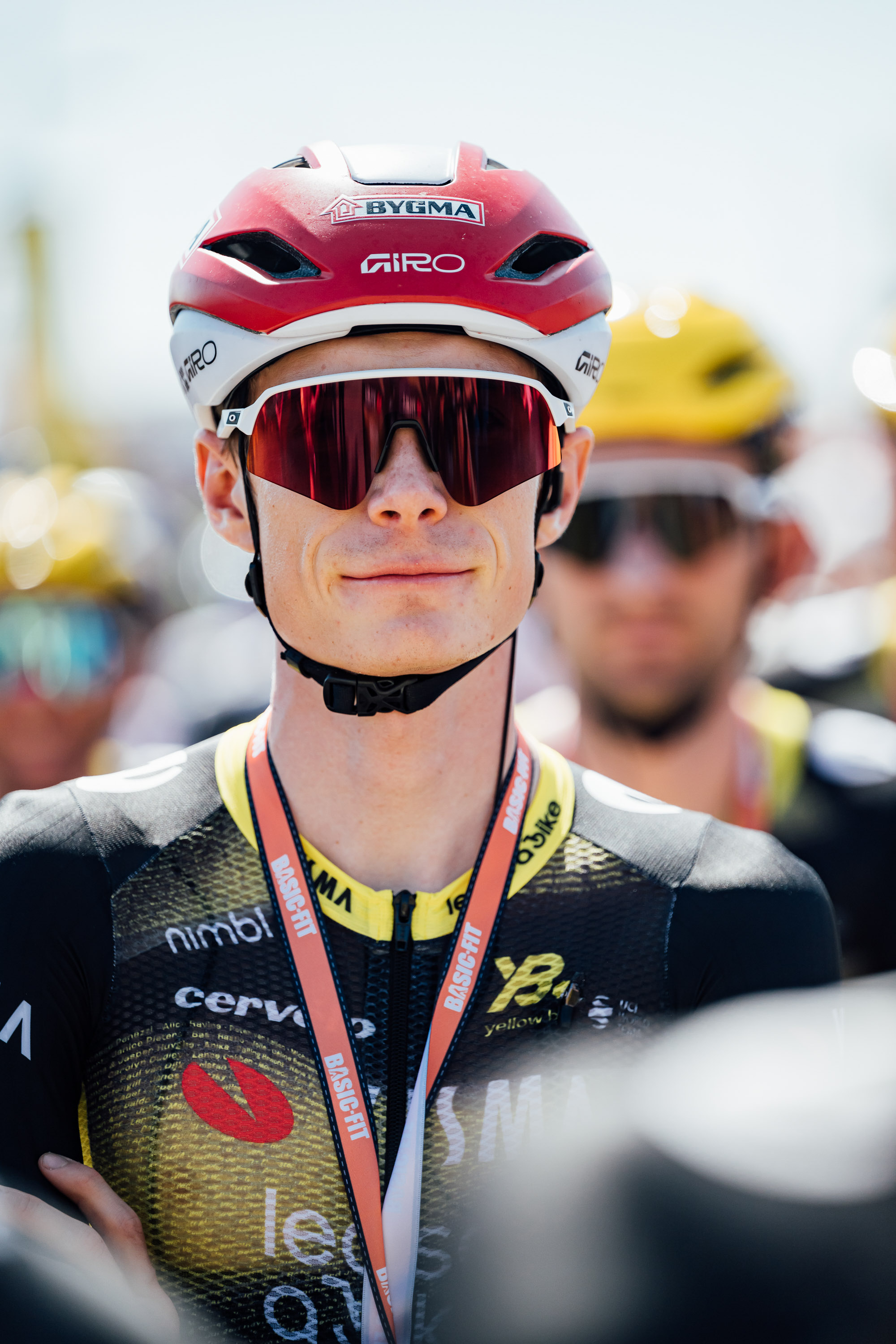
(Image credit: Chris Auld)
Team leader Jonas Vingegaard wears a red helmet. It’s a little like individual athletes being sponsored by Red Bull, but in this case it’s a sponsorship by a Danish DIY store.
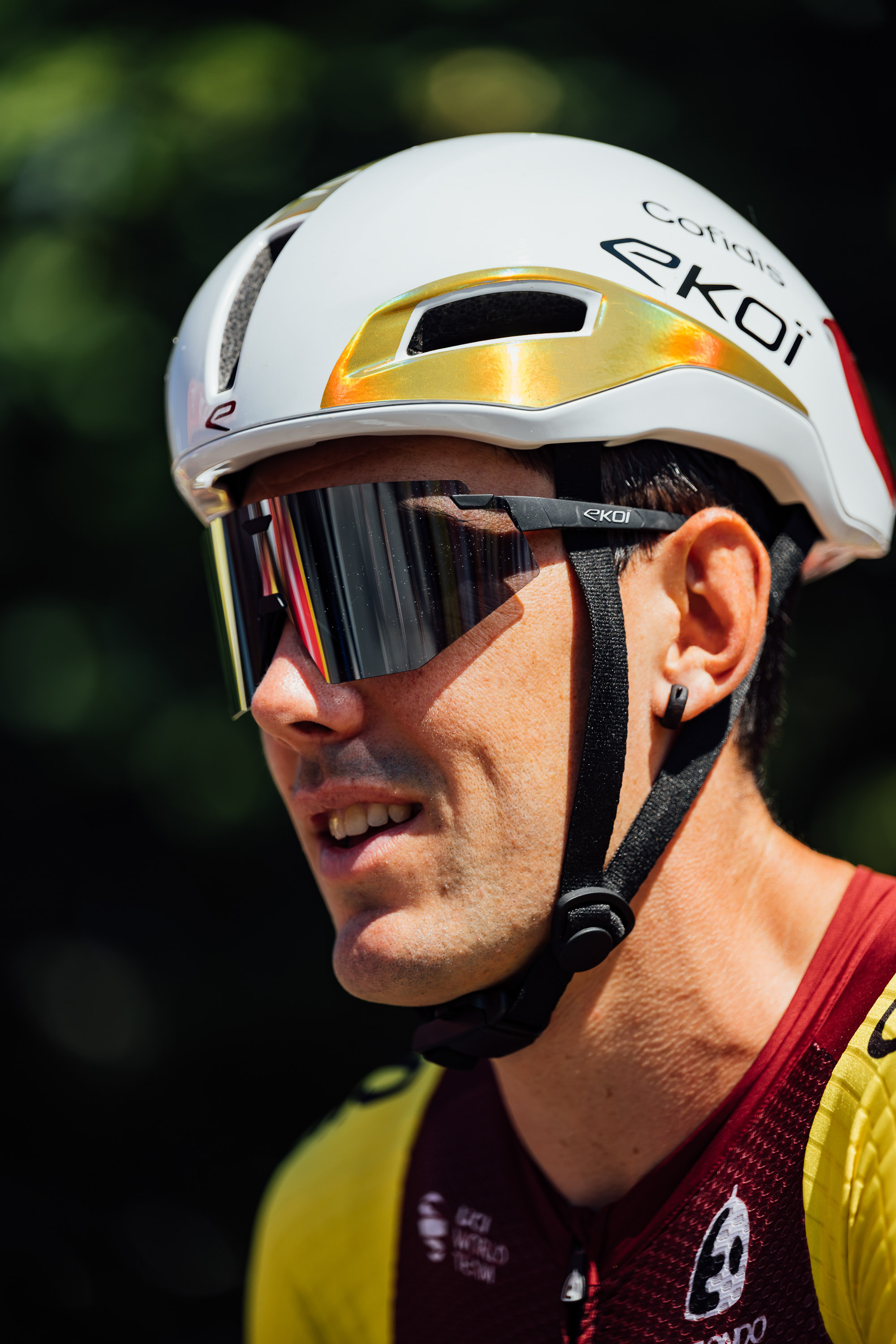
(Image credit: Chris Auld)
This Ekoi helmet is new for Cofidis’ riders.
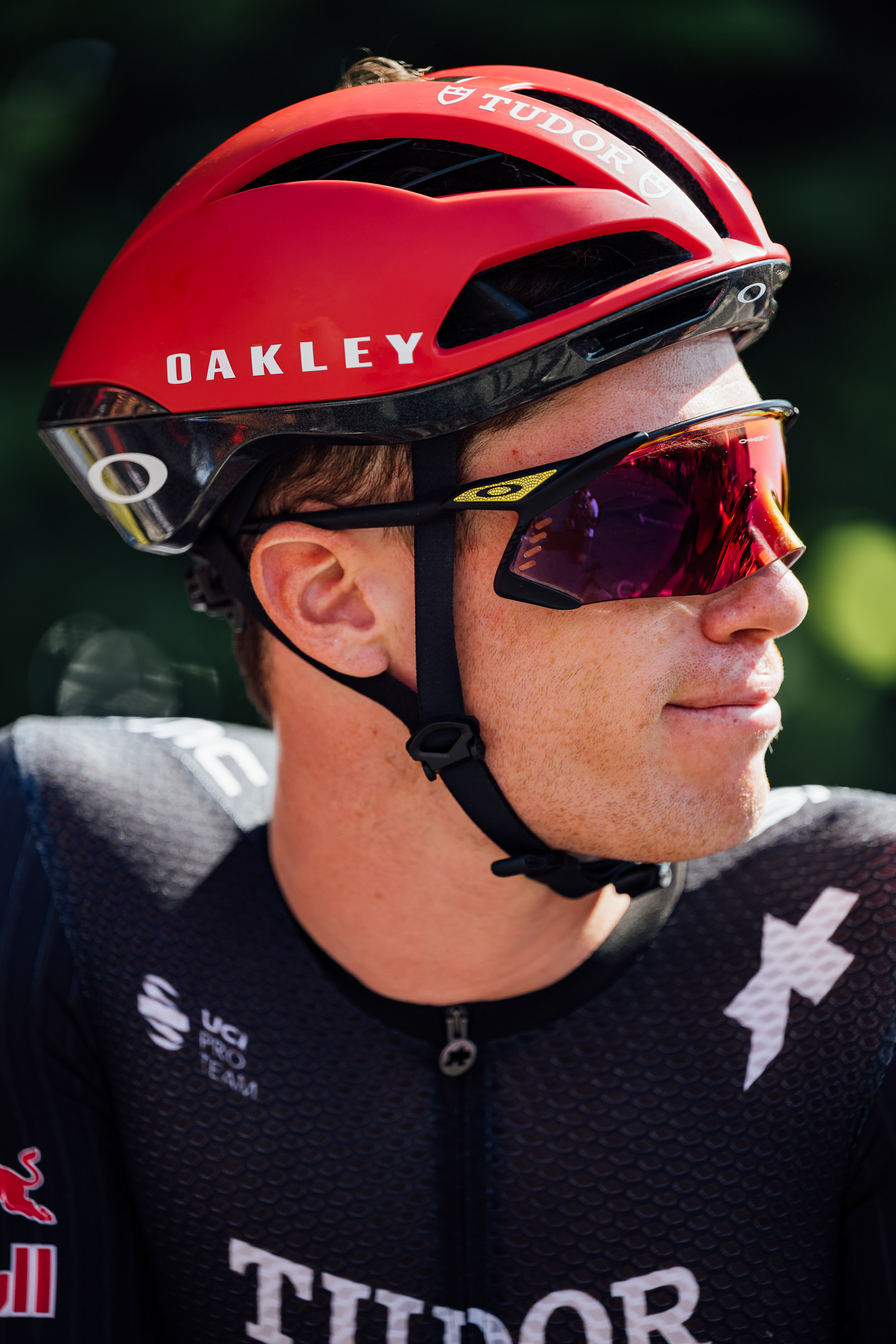
(Image credit: Chris Auld)
And while this Oakley helmet isn’t new, our wind tunnel testing shows it’s the fastest non-time trial helmet in the peloton.
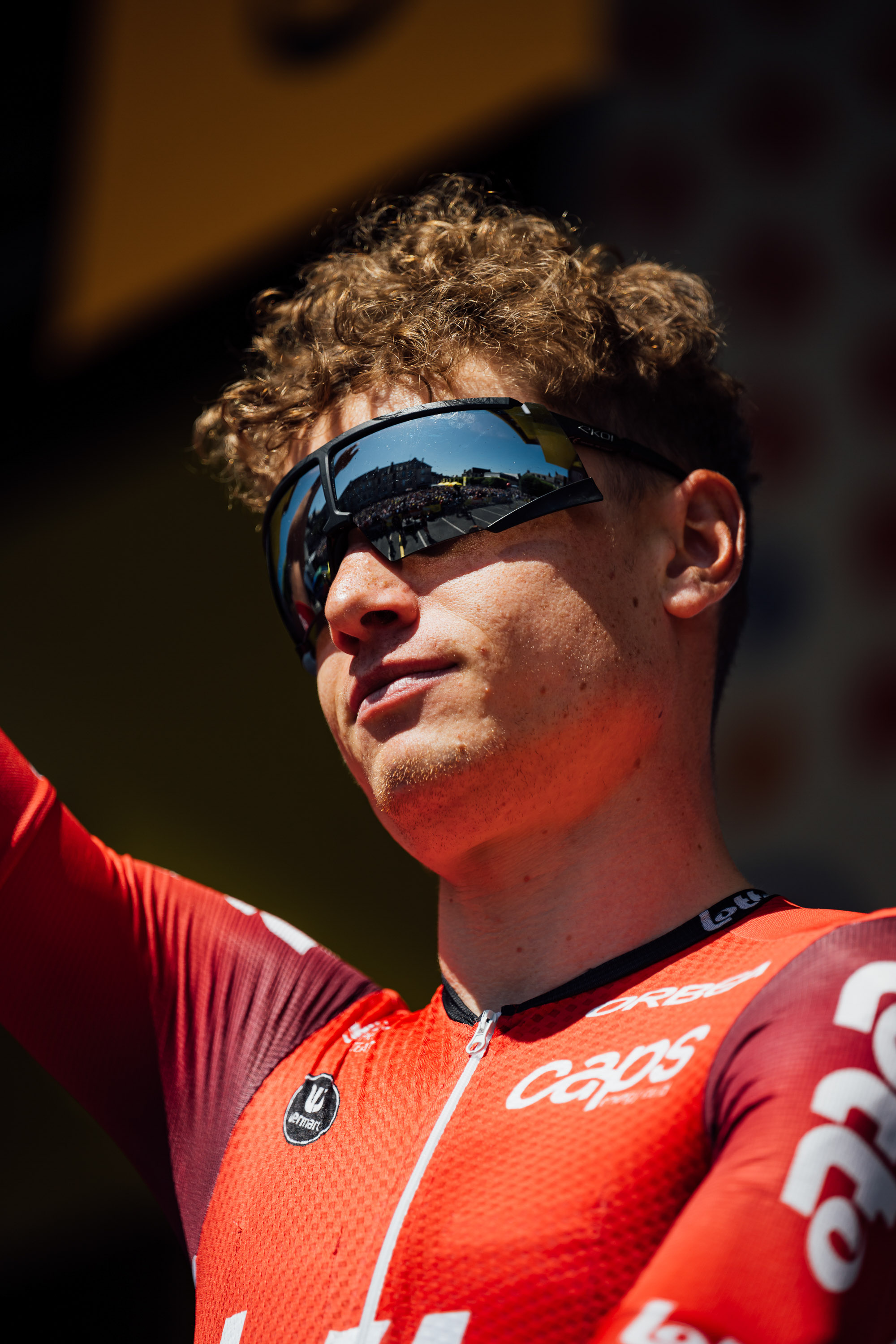
(Image credit: Chris Auld)
These Ekoi S-Aero sunglasses are new too, used by Lotto riders.
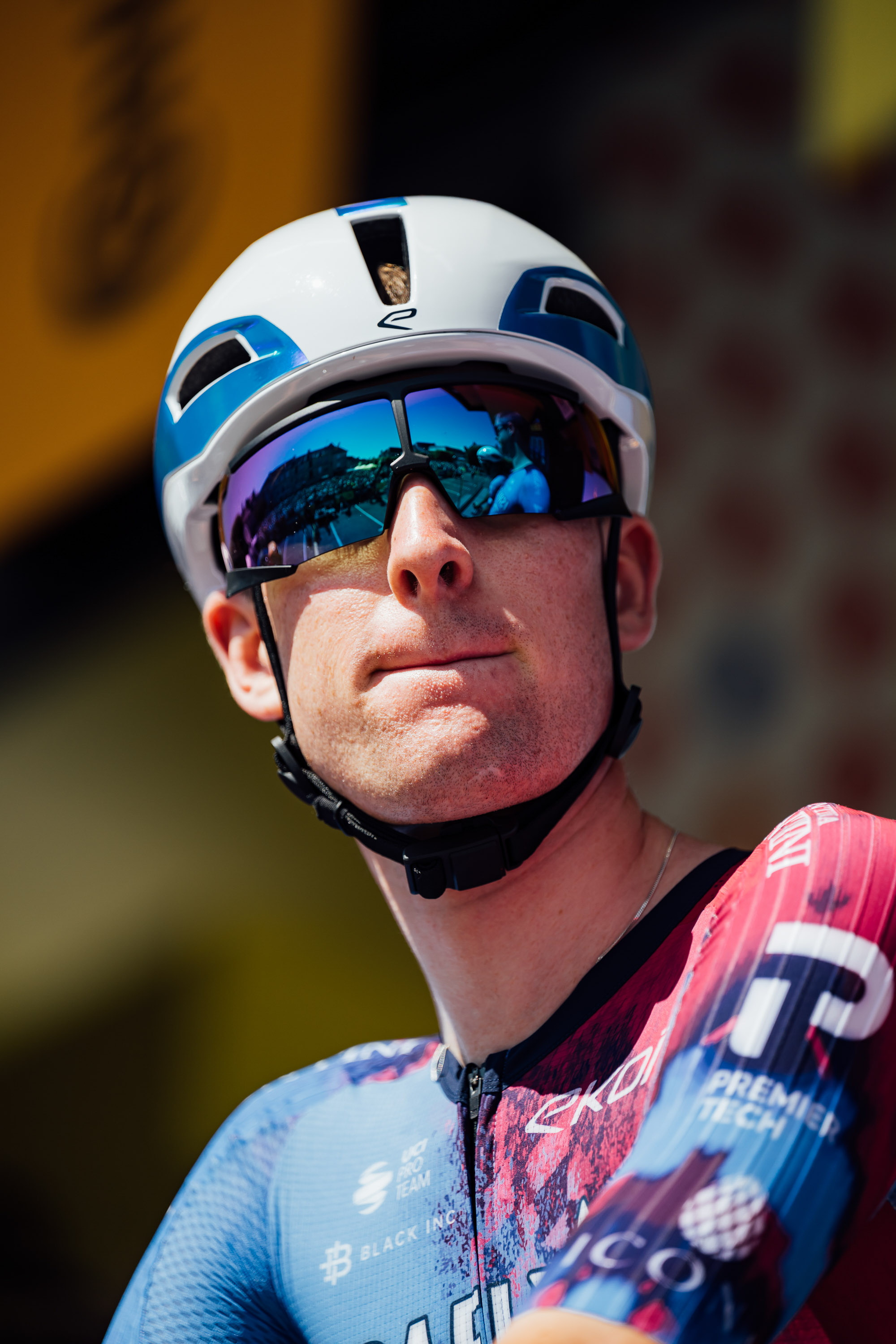
(Image credit: Chris Auld)
They’re designed with little wings on the trailing edges to deflect airflow and, apparently, reduce noise. The helmet and glasses have been designed to work as a system for maximum aero gains.
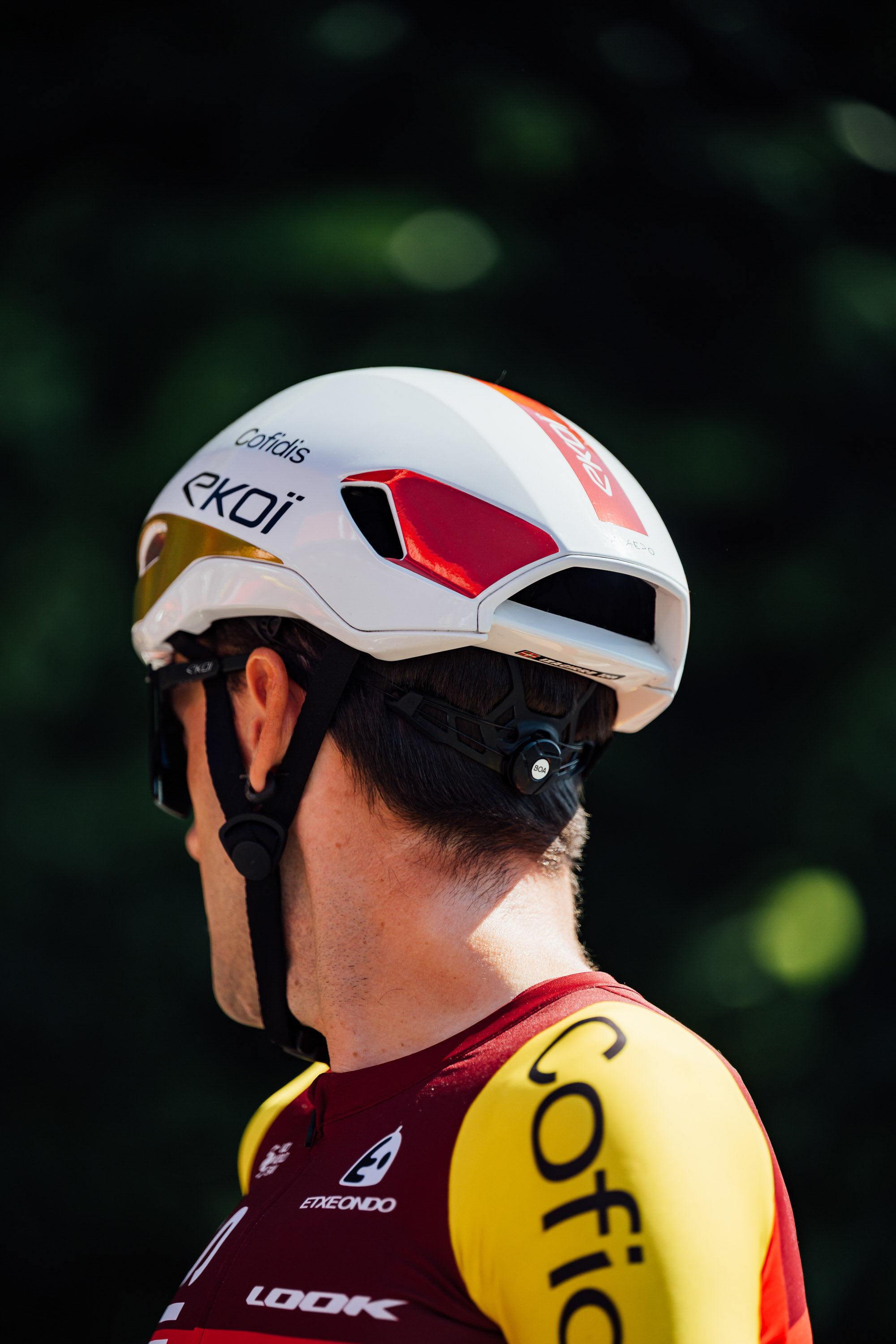
(Image credit: Chris Auld)
Here’s the back end of the new helmet, which sadly we didn’t get hold of in time for inclusion in our wind tunnel test.
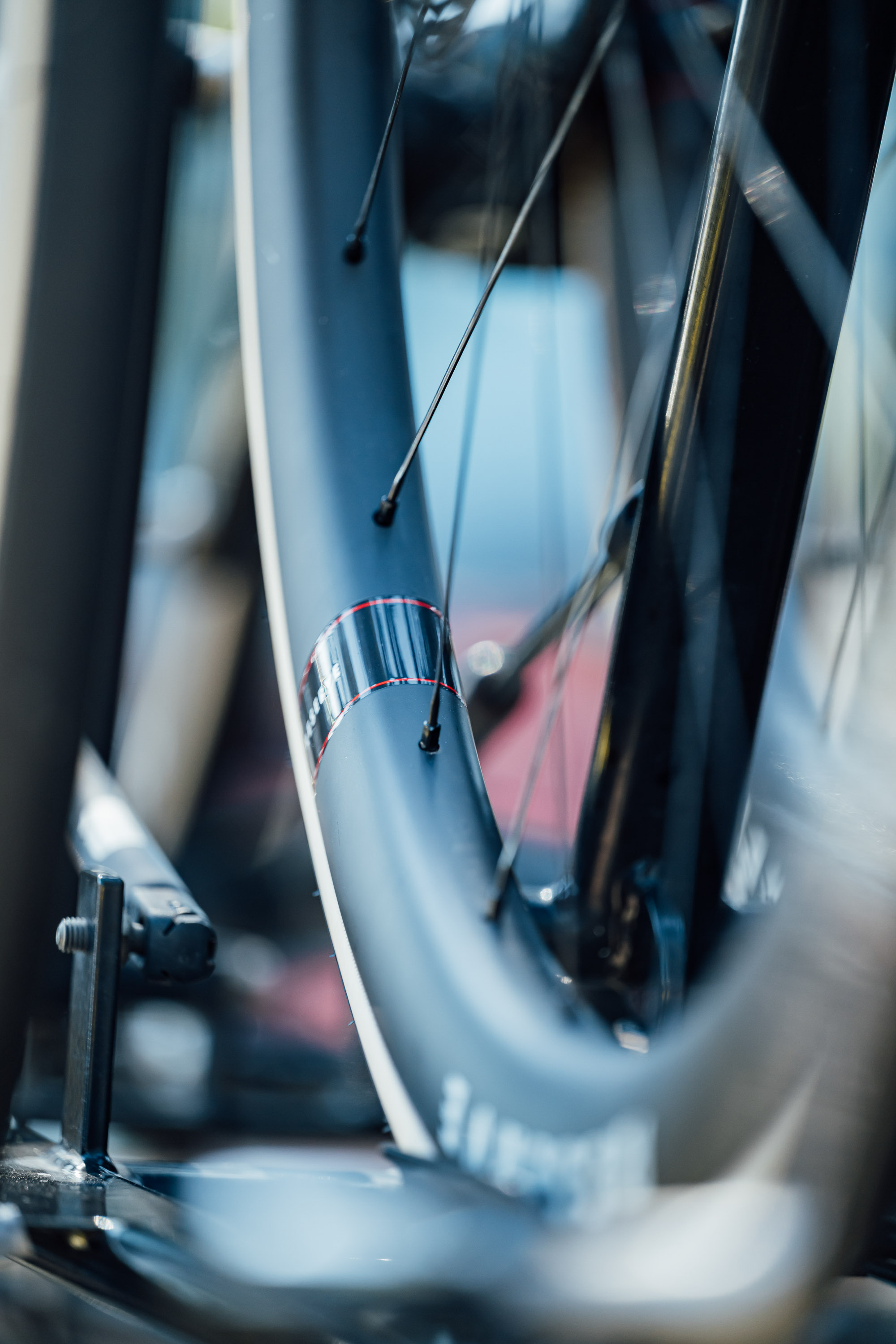
(Image credit: Chris Auld)
Compared to the V-shape of the new DT Swiss rims, these Reserve rims are much more U-shaped and wide.
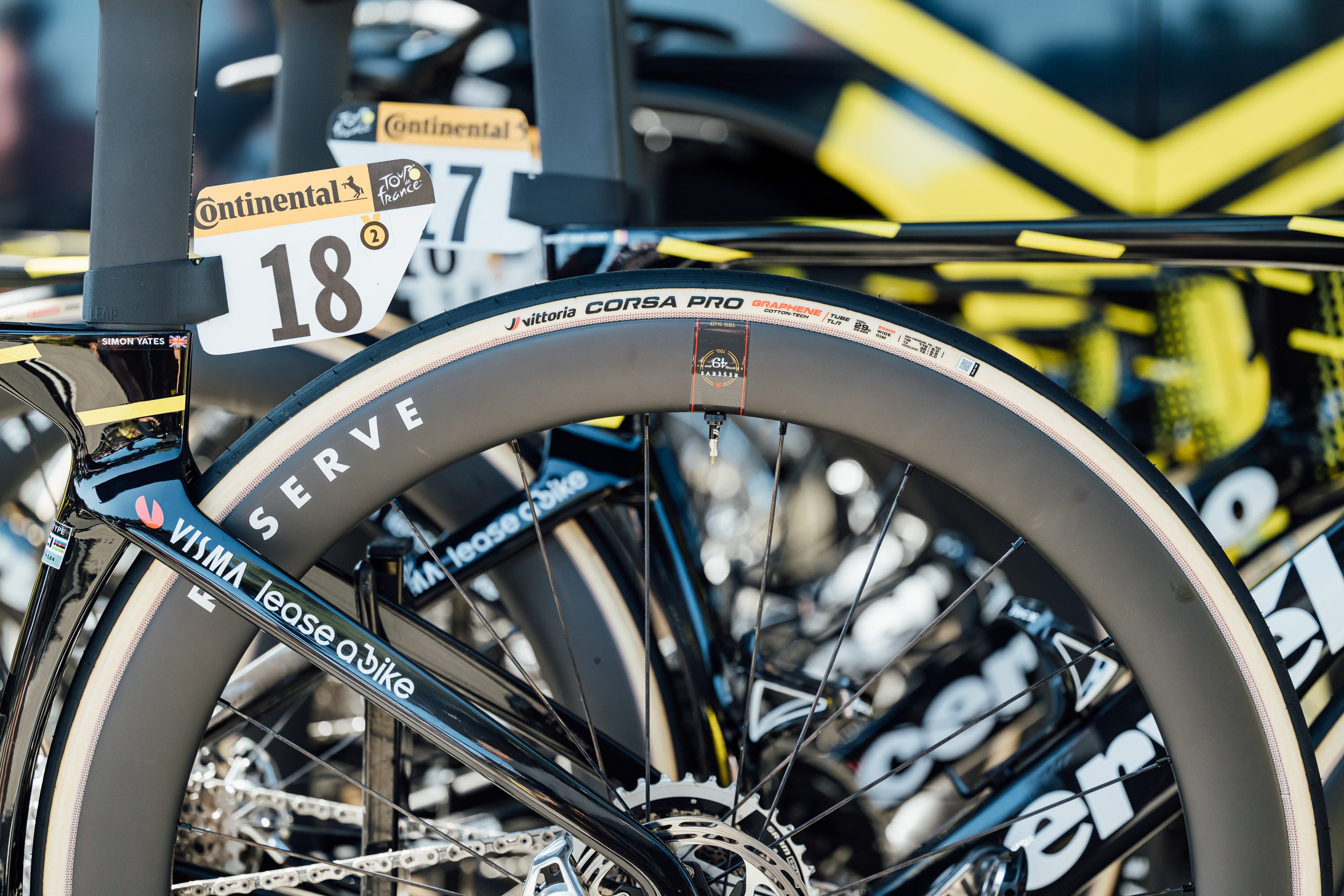
(Image credit: Chris Auld)
They are designed to work specifically with Vittoria’s Corsa Wide tyre, a 29c version of the Corsa Pro, and the latest Cervélo S5 frameset.

(Image credit: Will Jones)
Speaking of which, here’s Jonas Vingegaard’s brand new Cervélo S5. There’s a full gallery of this available with all the details, but the changes are subtle and the flavour of the bike remains similar. It’s mostly tweaked angles and tube profiles rather than a wholesale overhaul.
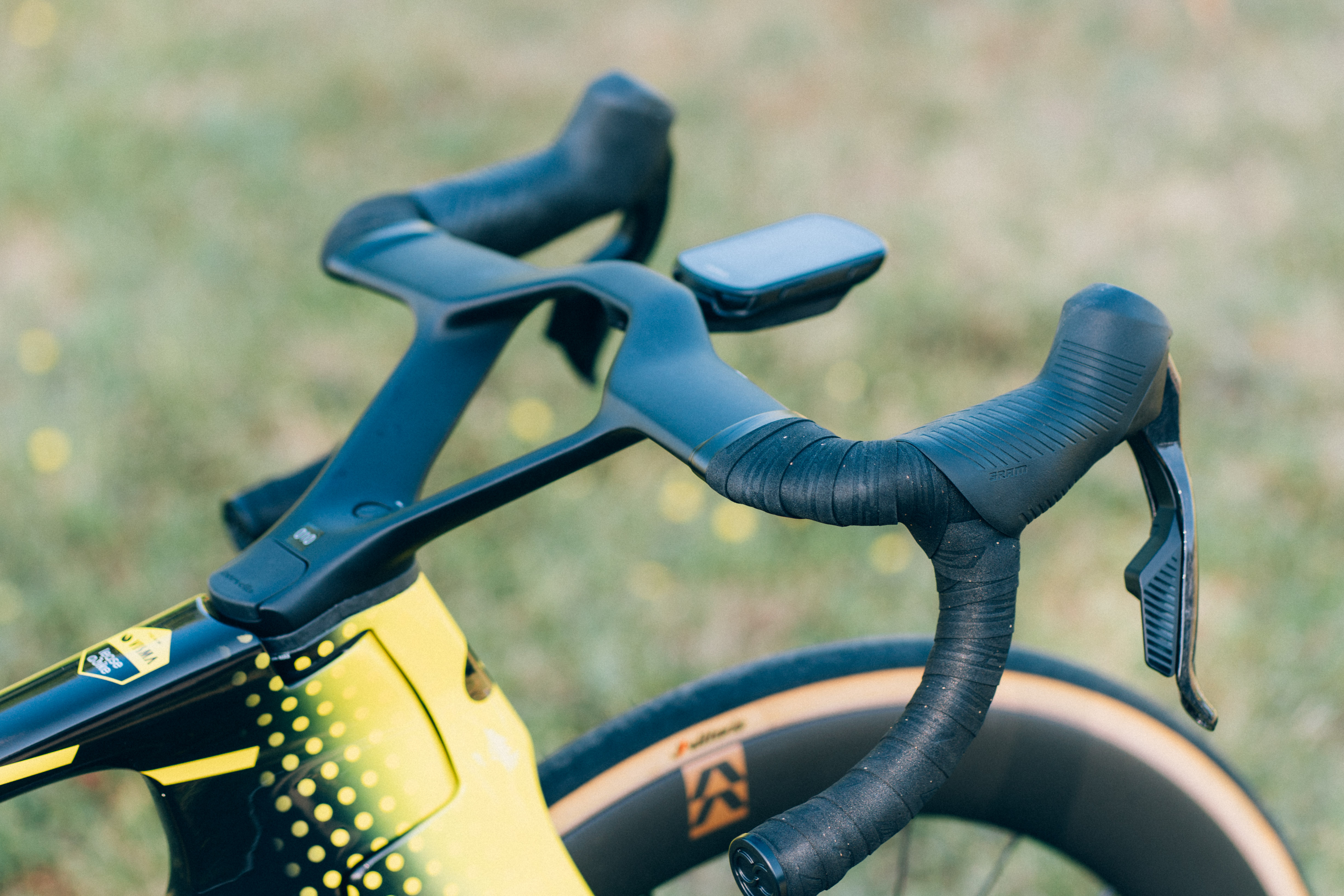
(Image credit: Will Jones)
The cockpit is the biggest change, though it is backwards compatible with the old model.

(Image credit: Will Jones)
While most riders were on the standard Reserve wheels, Wout van Aert was using some Reserve rims laced to a €1,450 hubset with deep bladed carbon spokes.

(Image credit: Will Jones)
Here’s the rear Yokto hub from Tune, for all the hub nerds out there.
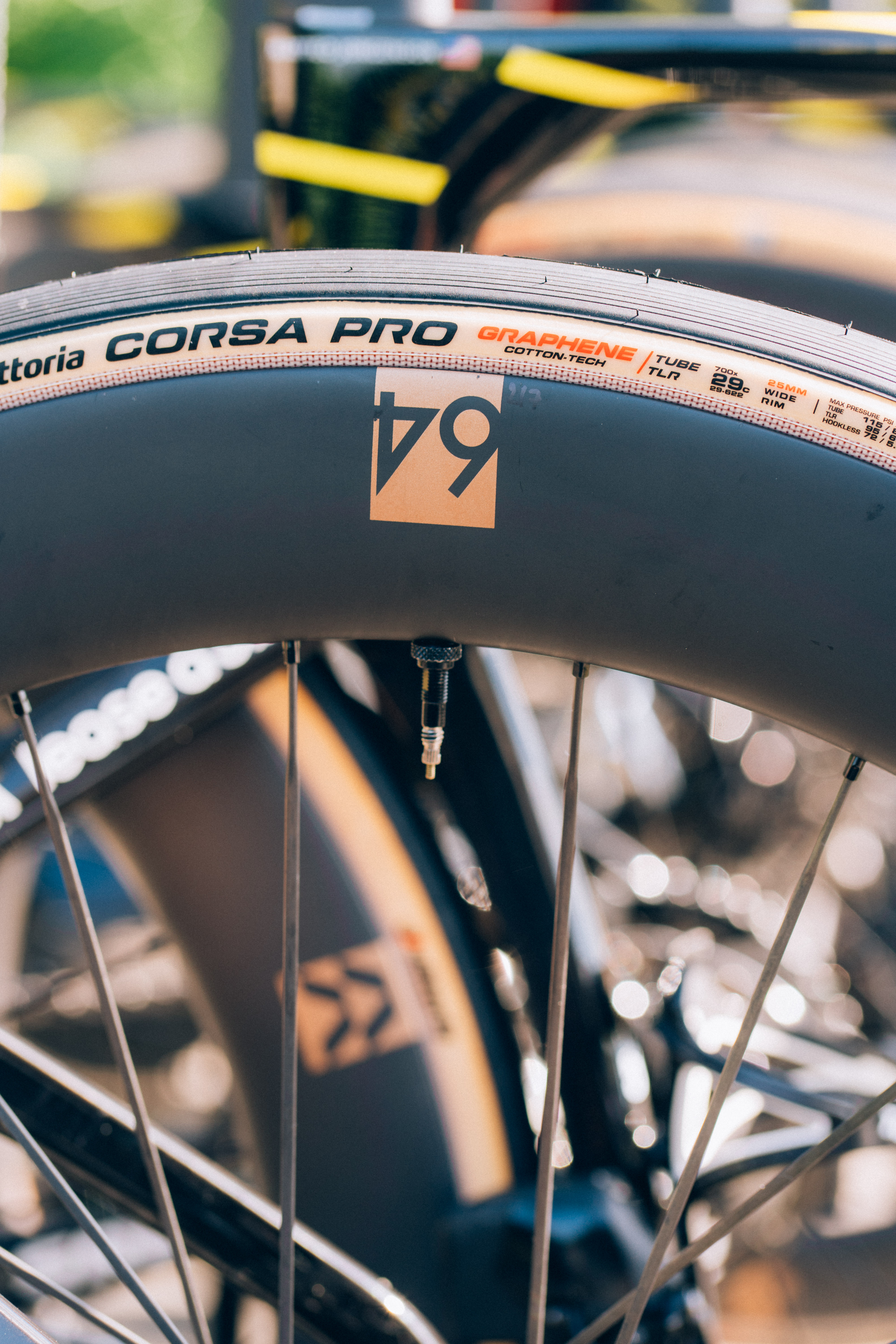
(Image credit: Will Jones)
The 57/64 is a new wheelset from Reserve, with (you guessed it) a 57mm front and a 64mm rear, which will keep it just the right side of legal if-and-when the UCI rules on minimum rim depth come into force in January.

(Image credit: Will Jones)
Van Aert, a former contestant on The Masked Singer, had a sticker on his gloss handlebars from his time on the show.

(Image credit: Will Jones)
Visma had not one, but two new bikes for the Tour. Here is Matteo Jorgenson’s new Cervélo R5, the lightweight climbing bike.
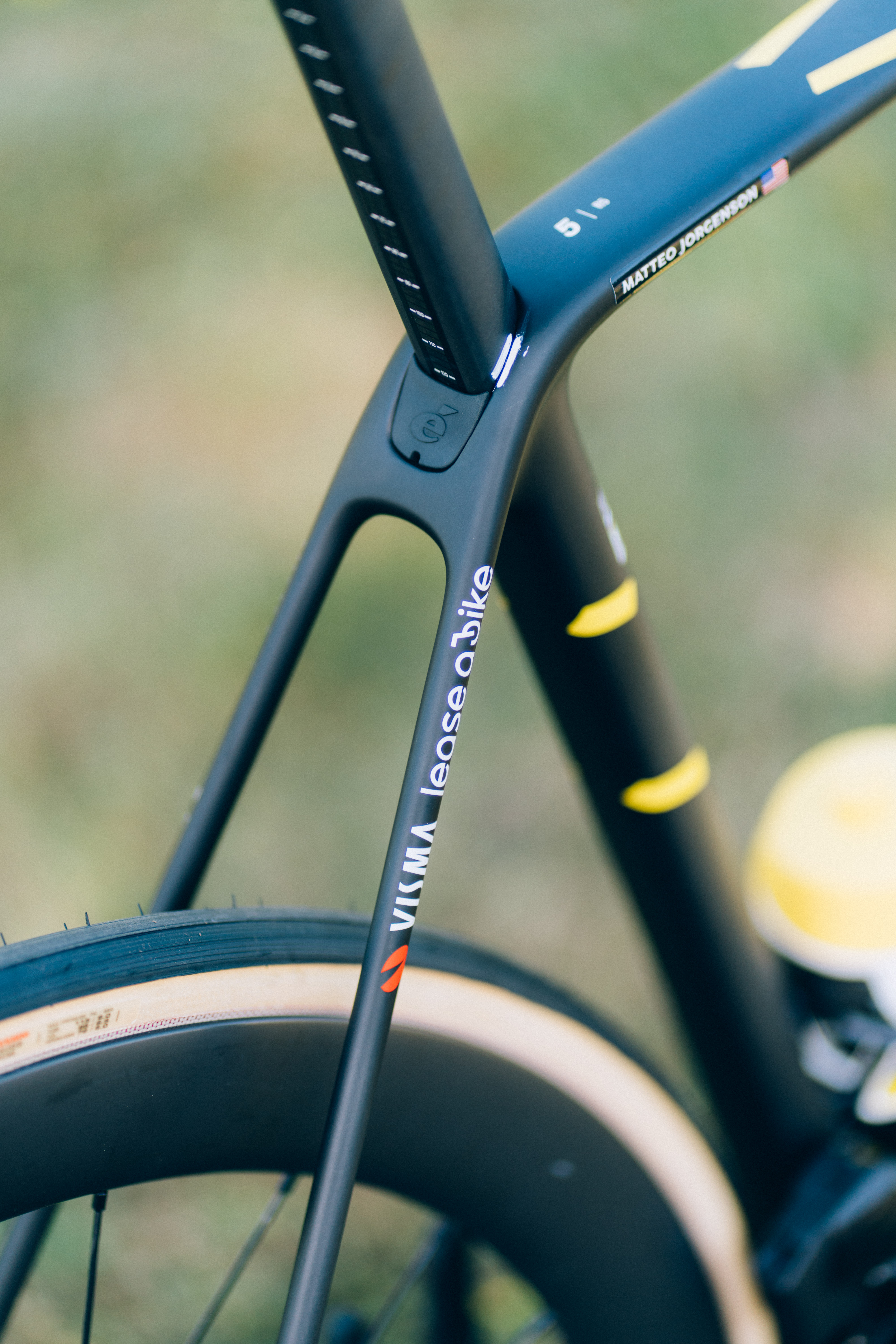
(Image credit: Will Jones)
Seat stays have to be at least 10mm in diameter. These are manufactured slightly under that dimension, with the additional thickness taken up by paint and lacquer.

(Image credit: Will Jones)
This one’s not a new bike, but a new paint job for the Israel-Premier Tech team.

(Image credit: Will Jones)
Each bike is unique, with these blue and pink patches applied using alcohol-based inks and blown over the surface.

(Image credit: Will Jones)
Mike Woods also had a chunky 3D-printed chain catcher bonded to his frame.

(Image credit: Will Jones)
As did Geraint Thomas on his Pinarello Dogma F. We’ve got standalone galleries of both of these bikes if you’re curious.

(Image credit: Will Jones)
I measured the gap between Thomas’ hoods: 28cm, so very much illegal when the rules change, but he won’t care at that point, as he will be retired.

(Image credit: Will Jones)
For the initial flat time trial, Vingegaard used this P5 TT machine.
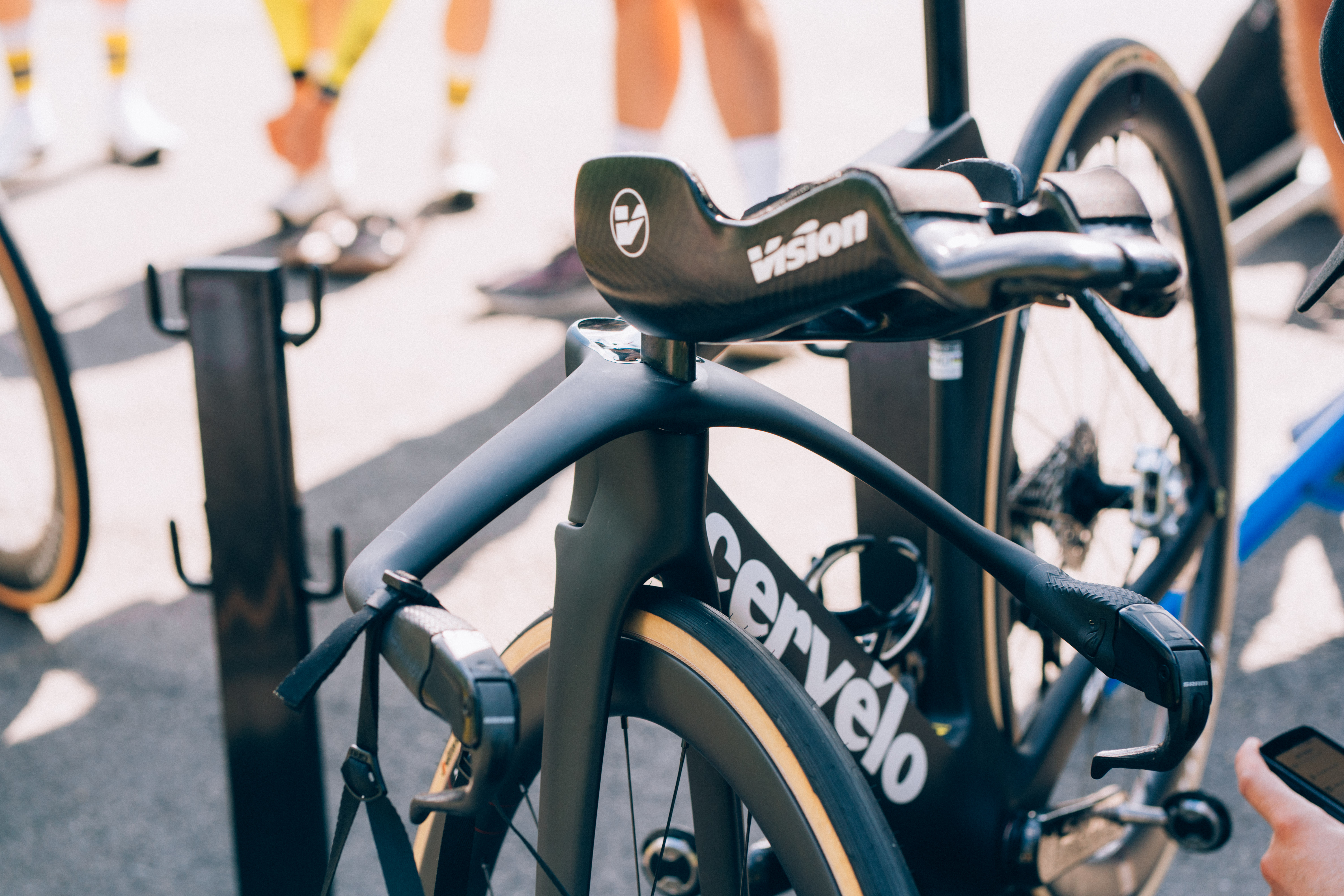
(Image credit: Will Jones)
The base bars were new, with a more pronounced drop to them than he’s used previously.
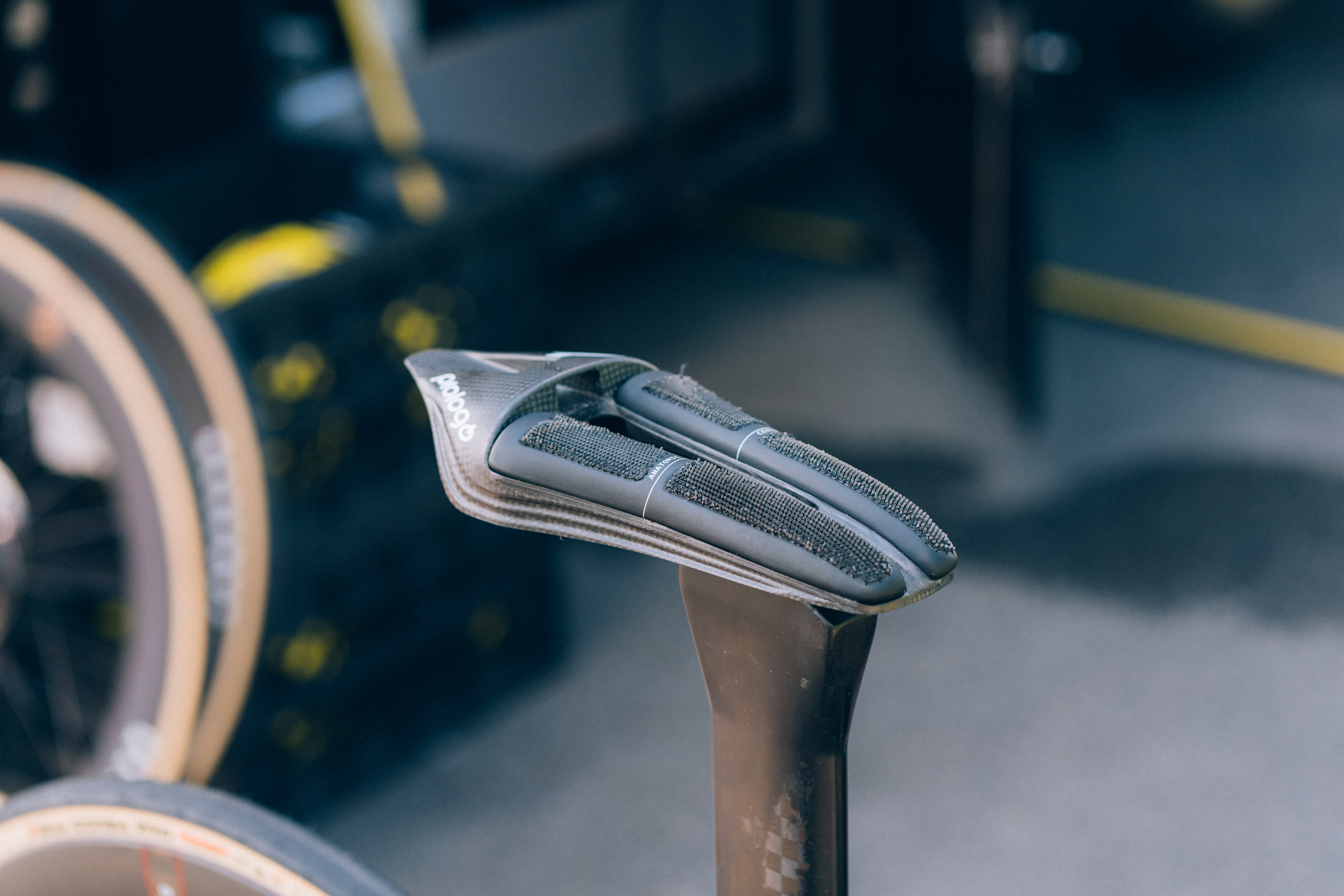
(Image credit: Will Jones)
This Predator//01TT saddle from Prologo would set you back a cool £1,088. He’s also had grippy tape added to the top of it to keep him locked in place.

(Image credit: Will Jones)
Before his untimely abandonment in the Pyrenees, Remco Evenepoel used this whopping 64-tooth Digirit chainring to monster to victory on the flat time trial.
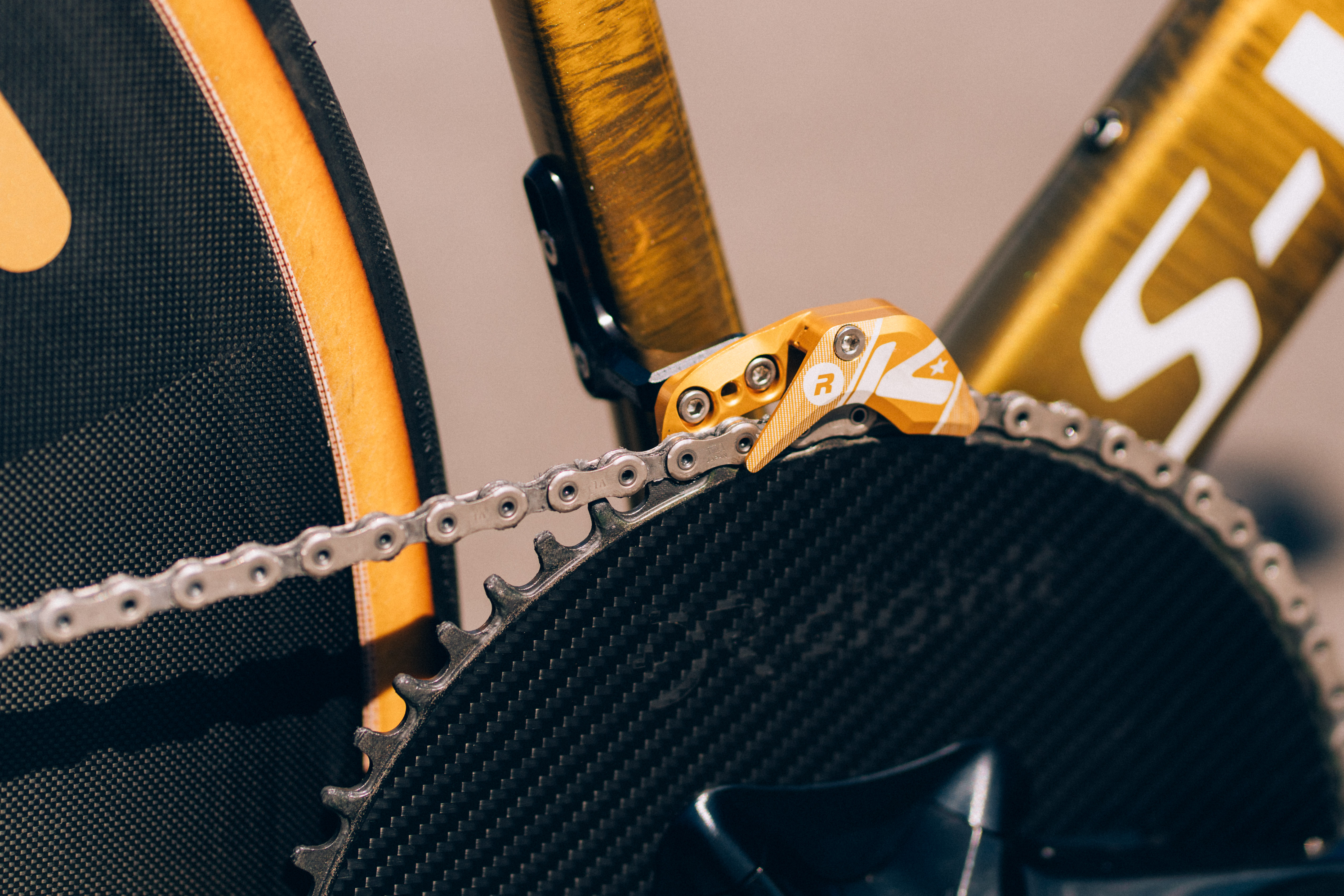
(Image credit: Will Jones)
Again, there’s a full gallery of this bike on site now, but I thought this chaincatcher was neat. Also, unlike many other carbon chainrings, this one also has carbon teeth.

(Image credit: Getty Images)
Those TT bikes from the first time trial act as a lovely segue into the TT setups from the mountain time trial on stage 12. Here’s Like Plapp, who set the early fastest time using a road bike, a lightweight front wheel, and a disc rear. This goes slightly against modern thinking where the aero is more important at the front of the bike, but it worked well for him nonetheless.
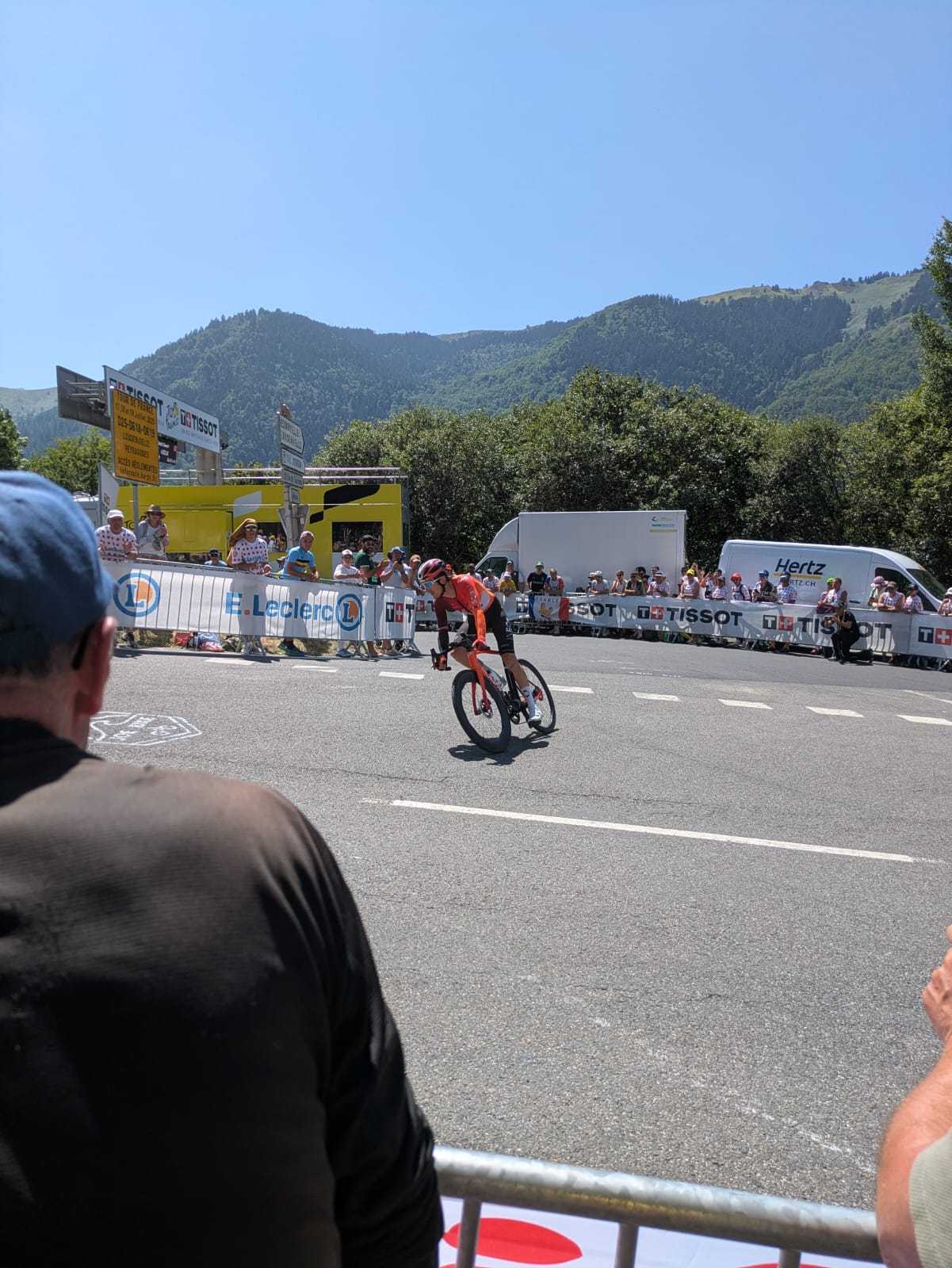
(Image credit: Alice Paynter)
Fun fact: I discovered my sister was by the roadside when she text me this picture of Geraint Thomas. Happily, it shows him using a ‘road mullet’ setup, with a deep front wheel and a shallow rear, to maximise aero while saving weight.

(Image credit: Getty Images)
Here’s a closer photo from a photographer more focused on vibes than on the technical specifications of the rider’s machine.
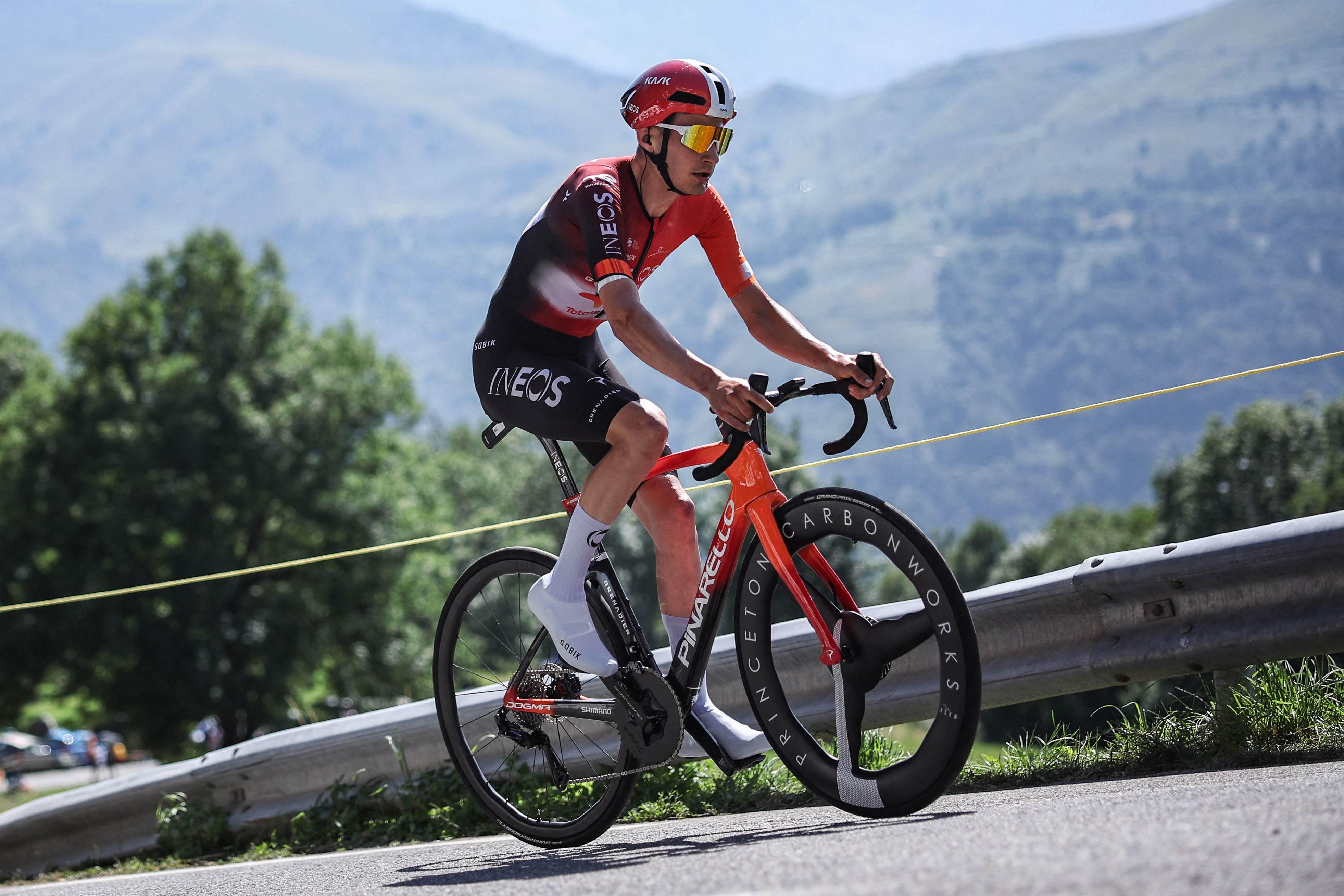
(Image credit: Getty Images)
Perhaps the most mullet-y setup came from Carlos Rodriguez, who used a tri-spoke front wheel and a lightweight rear, along with a 1x setup with a carbon chainring, and the smallest computer Garmin makes to save every last gram.

(Image credit: Getty Images)
Lenny Martinez, hell bent on hanging onto the polka dot jersey, used a paintless version of the new Merida Reacto, complete with disc wheel. His drivetrain was very interesting though…
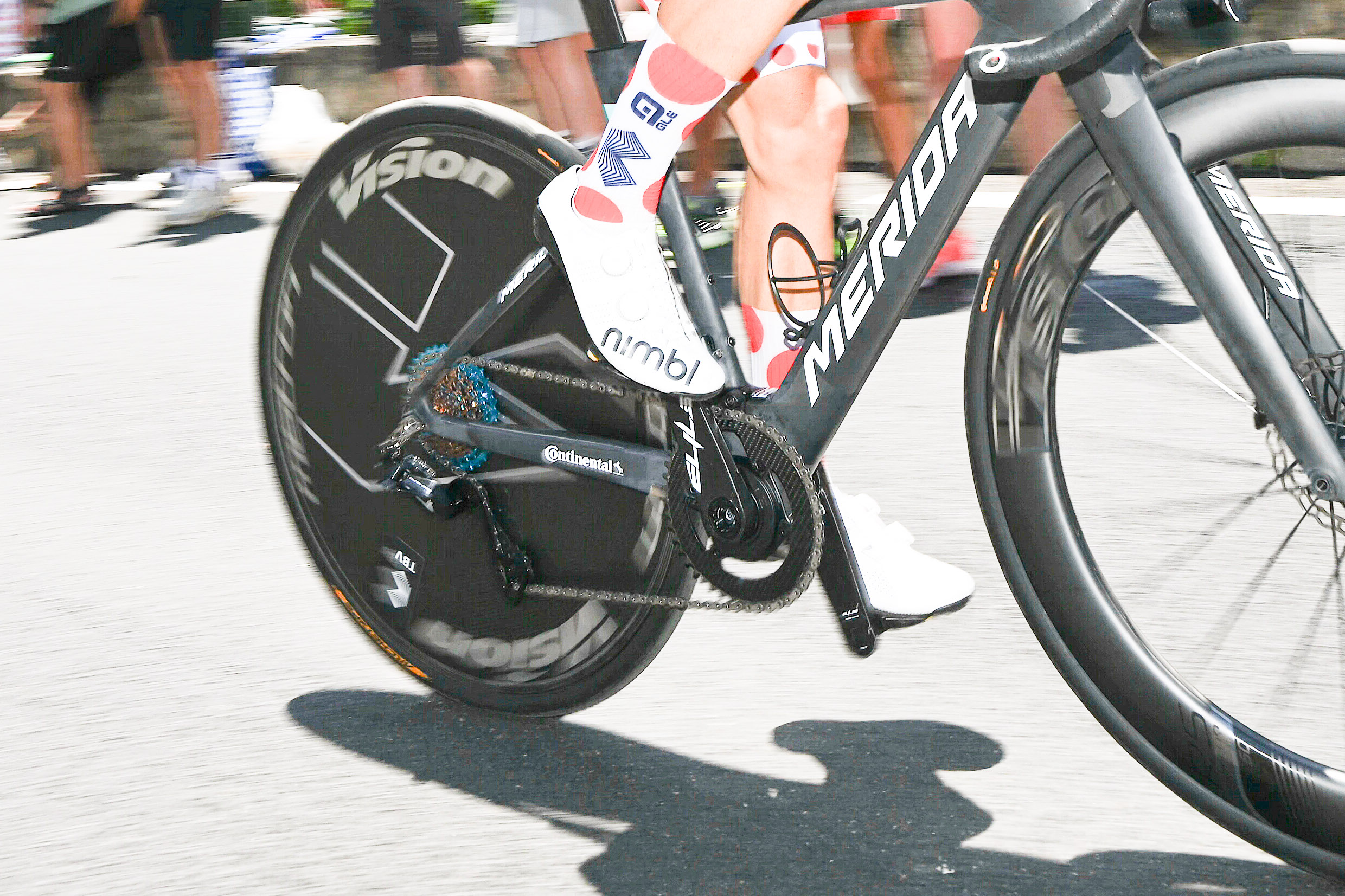
(Image credit: Getty Images)
If we zoom and enhance we can see the usual Dura Ace cranks have been swapped for a 1x carbon crankset from Eilee, the cassette to an all-titanium model from Sixwheel, and the titanium derailleur hanger swapped for an even more skeletal one.
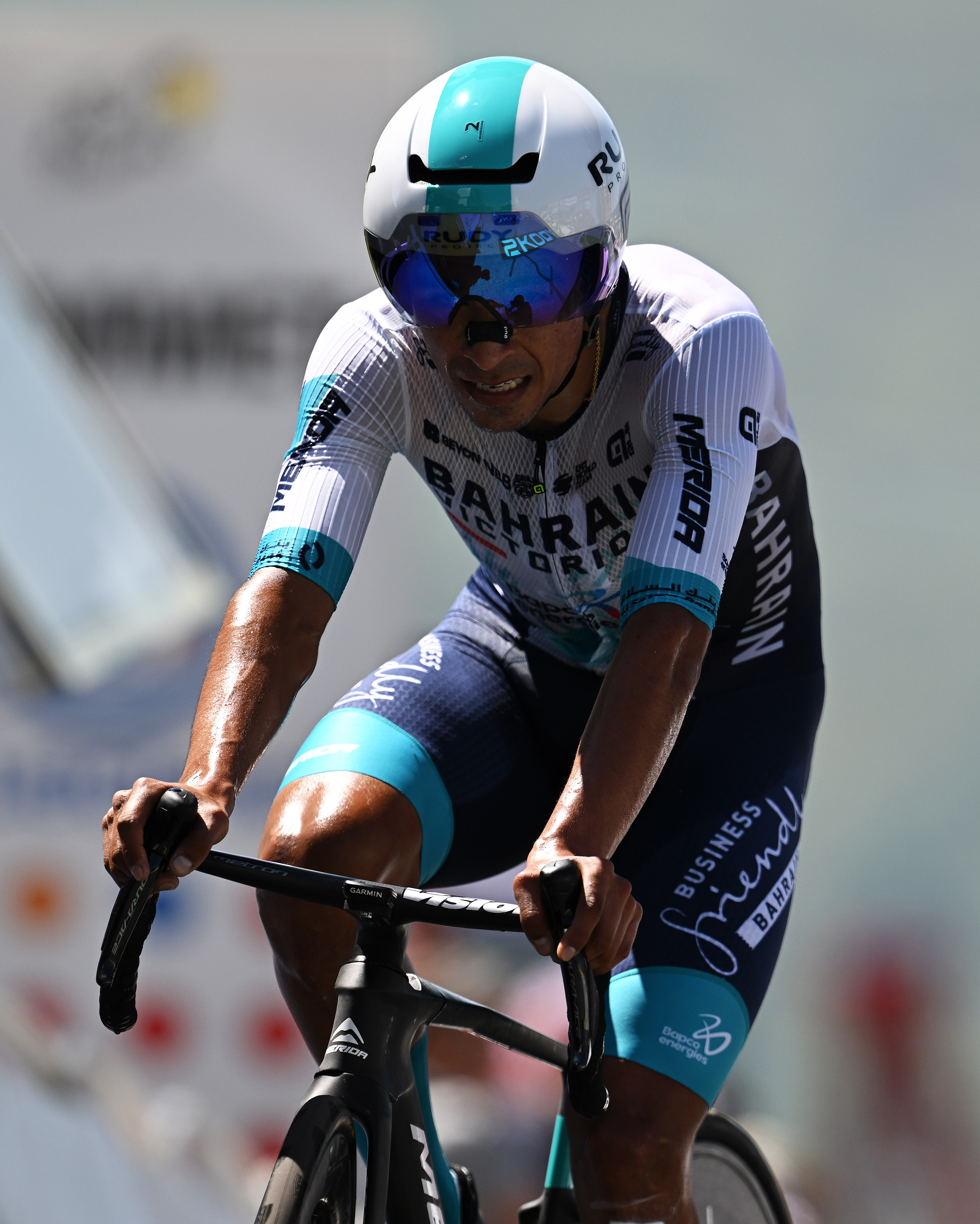
(Image credit: Getty Images)
Santiago Buitrago used an identical bike setup, but he opted for a full time trial helmet, unlike most riders. In the flatter time trial earlier in the race, he used a much more modern Rudy Project model, but kept to the smaller, older model here, likely for weight reasons.
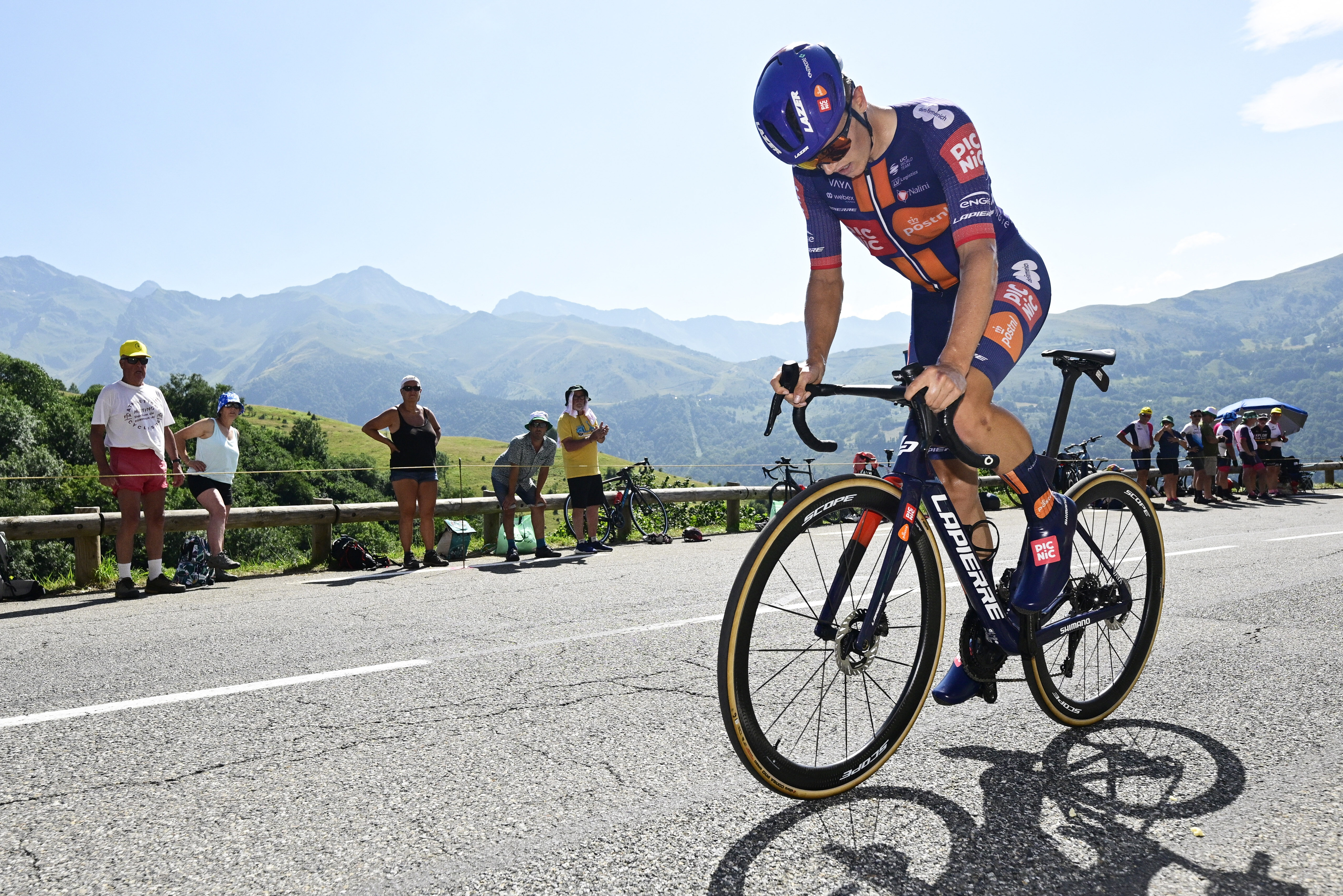
(Image credit: Getty Images)
British rider Oscar Onley has been perhaps the breakout star of the race. What can we learn about his TT setup…
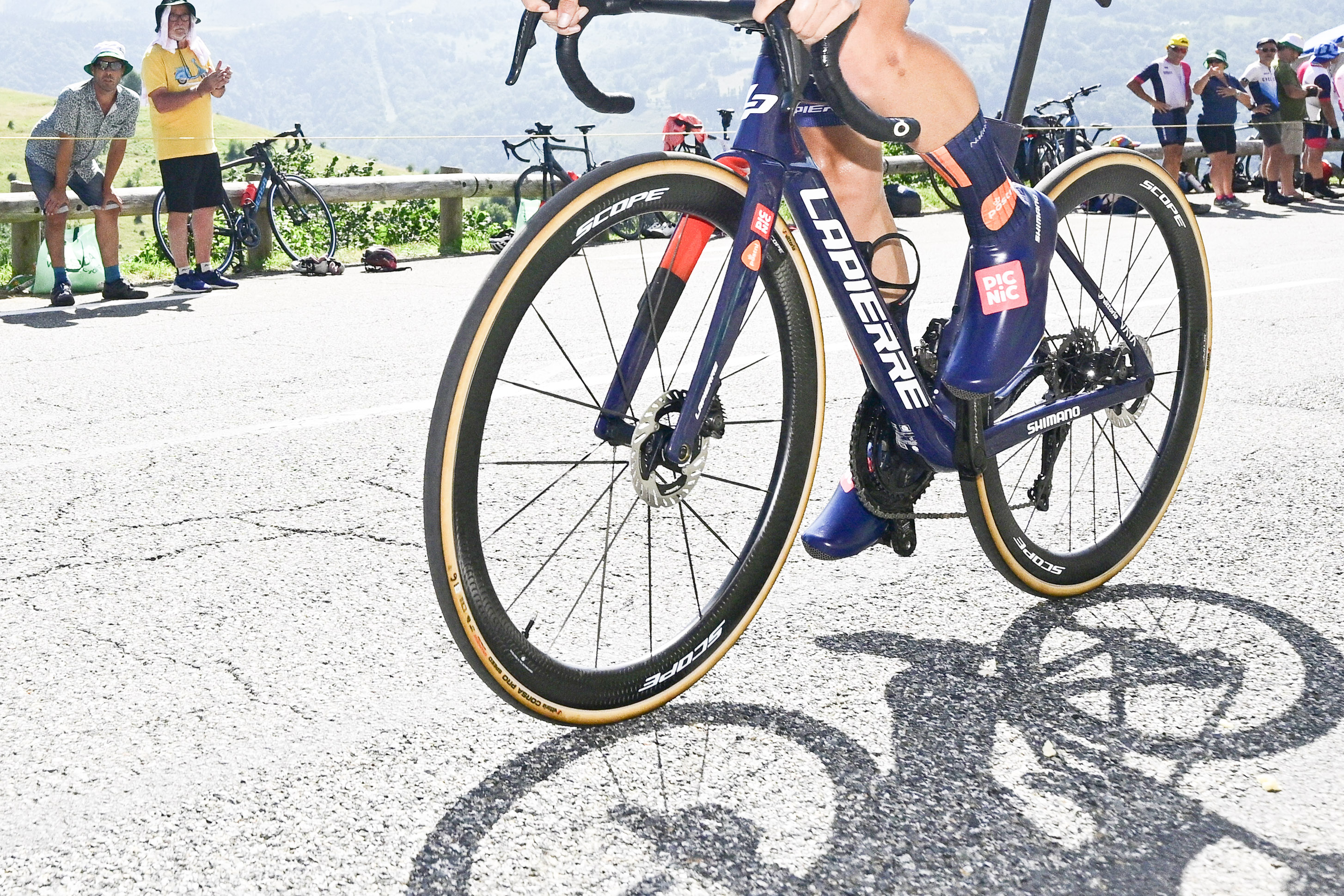
(Image credit: Getty Images)
The ol’ zoom and enhance shows he’s swapped his usual sponsor wheels from Ursus for Scope Artech 4 wheels. These are extremely light, and we found the deeper 6.A allroad model to be the most aerodynamic of a huge cohort of wheels in our own testing.

(Image credit: Getty Images)
Onley’s teammate Sean Flynn is also using Scope wheels here, but the shallower Artech 2 set. As a taller rider it’s likely he can use the shallowest option without hitting the minimum weight limit, whereas Onley probably has to use the mid-depth to stay legal.
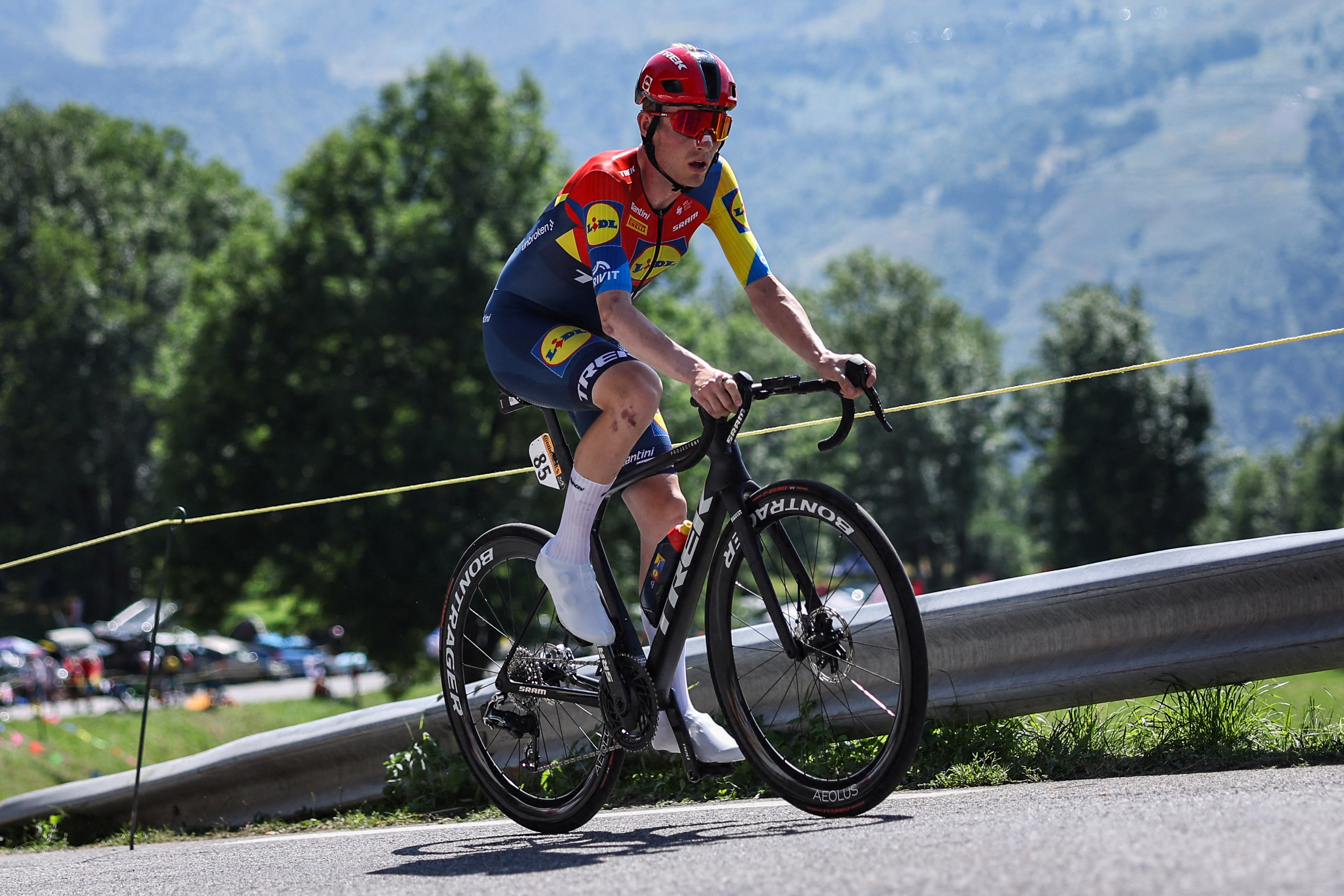
(Image credit: Getty Images)
Before abandoning, Mattias Skjelmose was seen using a Trek Madone stripped of all paint.
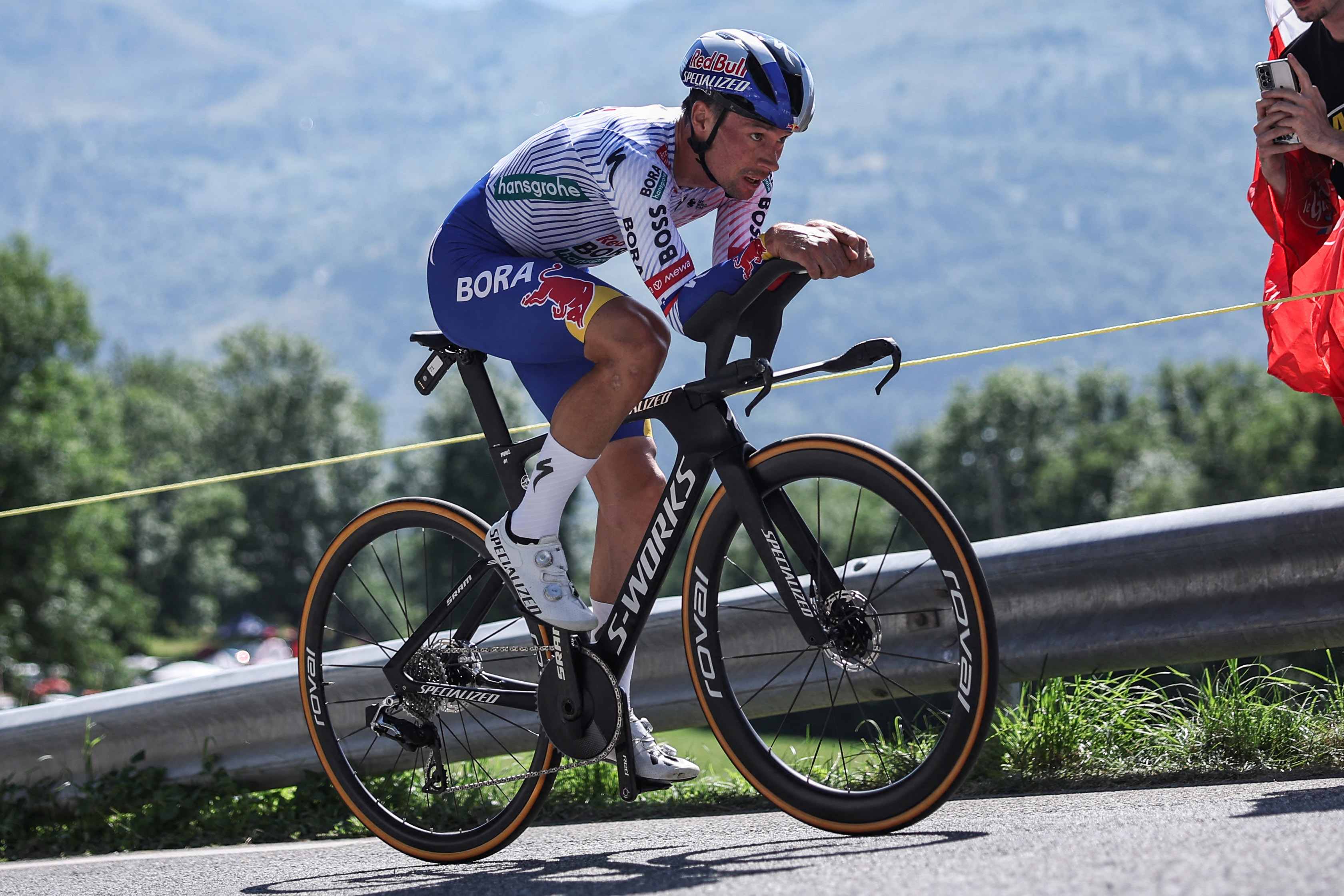
(Image credit: Getty Images)
Primoz Roglič was one of few riders to use a full time trial bike, and spent more time in the extensions than anyone. His Shiv TT bike was equipped with a Roval Rapide CLX III up front, and what looks like it could be a new Roval Alpinist rear wheel. The spoke nipples are silver, and the spokes look more deeply bladed than the current model.
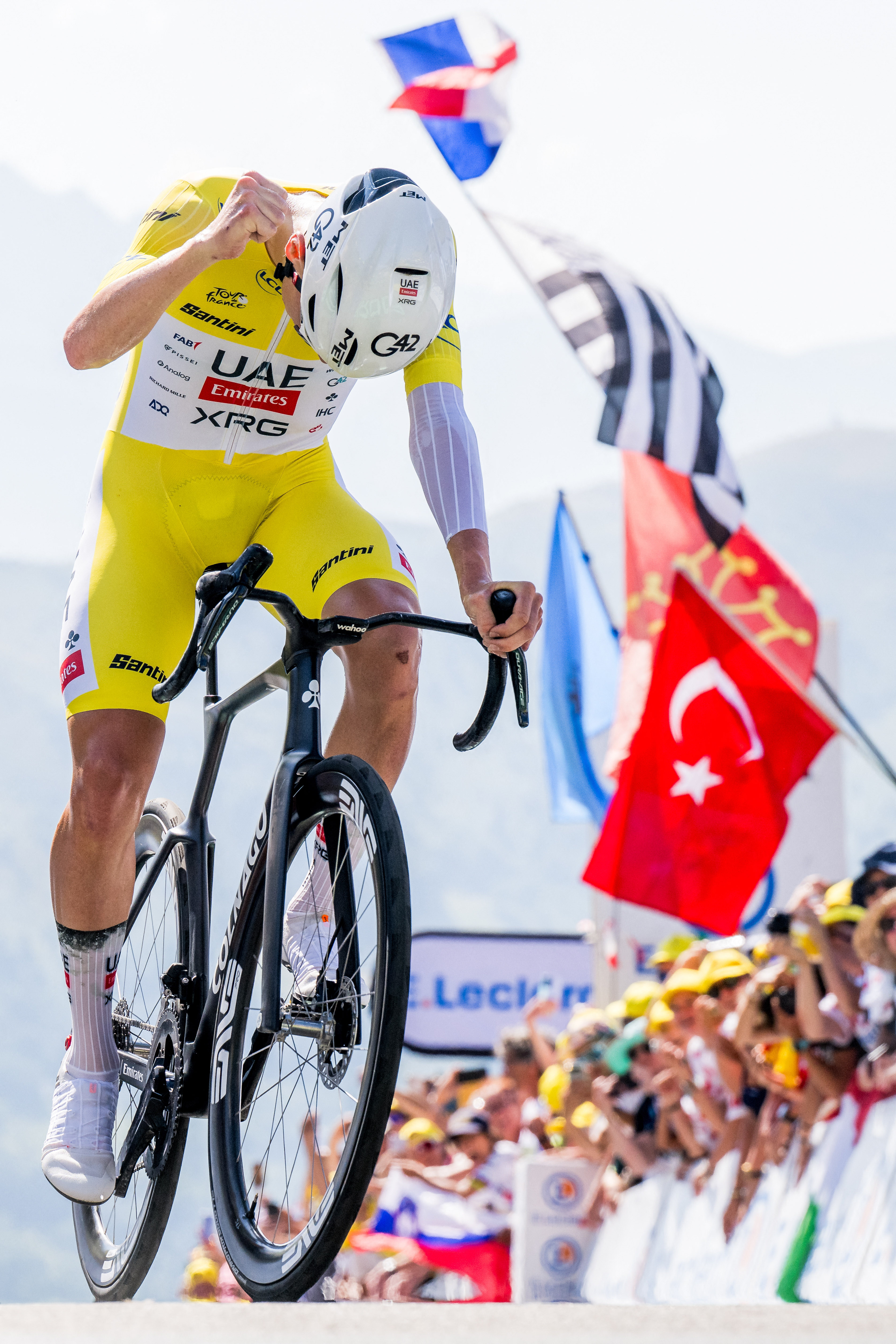
(Image credit: Getty Images)
Tadej Pogacar rode the mountain TT on a heavily modified Colnago Y1Rs aero bike that (you guessed it) we have a gallery of. What we all loved, though, was his use of an aero base layer sleeve as an aero bandage cover for the graze on his left arm. Additional strips of this were then used to make lightweight aero lace covers for his shoes. DIY ain’t dead yet.

(Image credit: Getty Images)
Kasper Asgreen and many of the EF squad have been seen using the new, more heavily ventilated Poc Cytal Lite

(Image credit: Will Jones)
Finally, despite all the high tech, ultra-fettled, super expensive kit on show there’s still a lot of bodging that goes on, like this mystery liquid in a garden spray bottle to get the Red Bull vehicles bug-free after the endless splatters that occur on long transfers.
–

